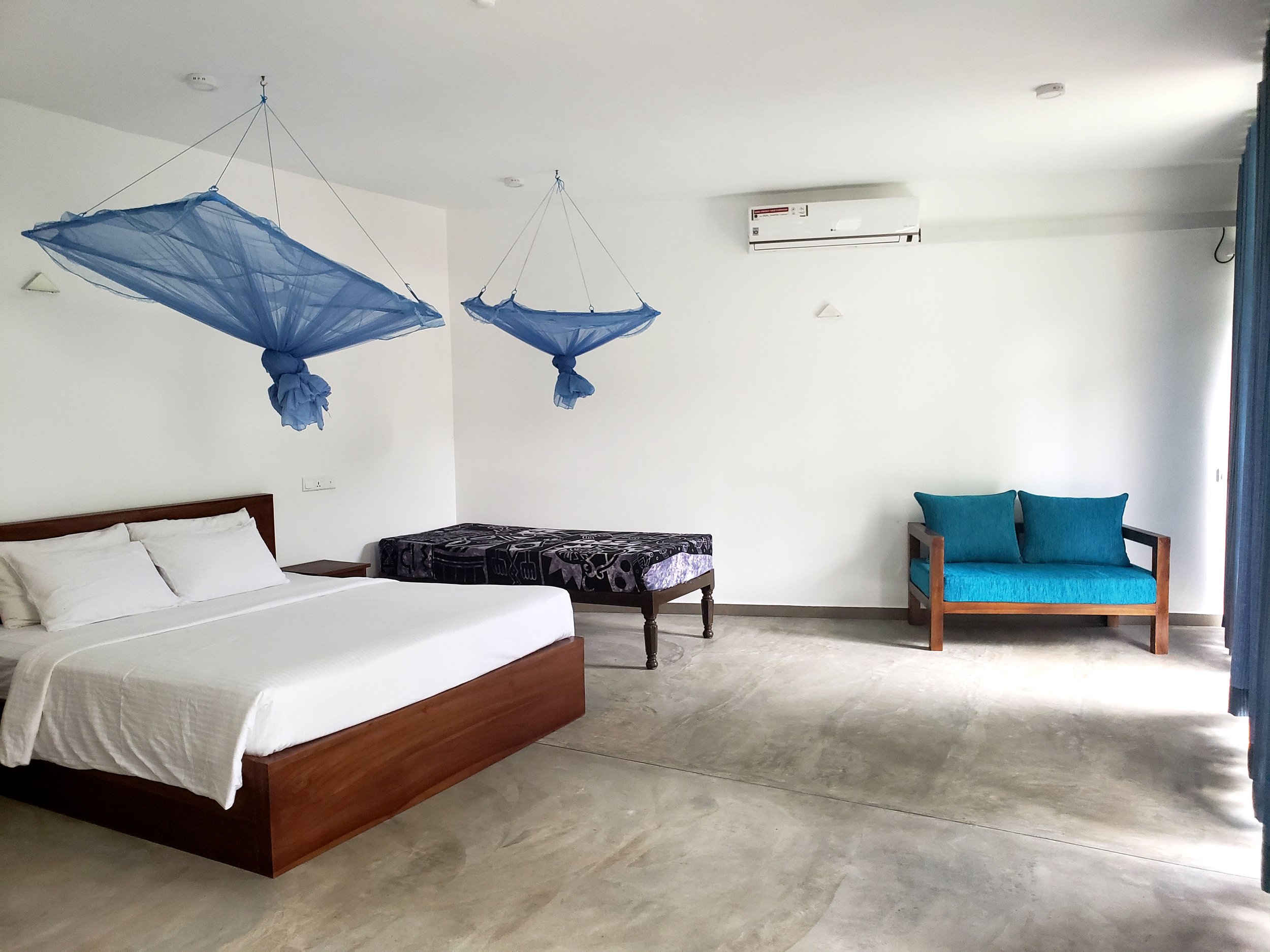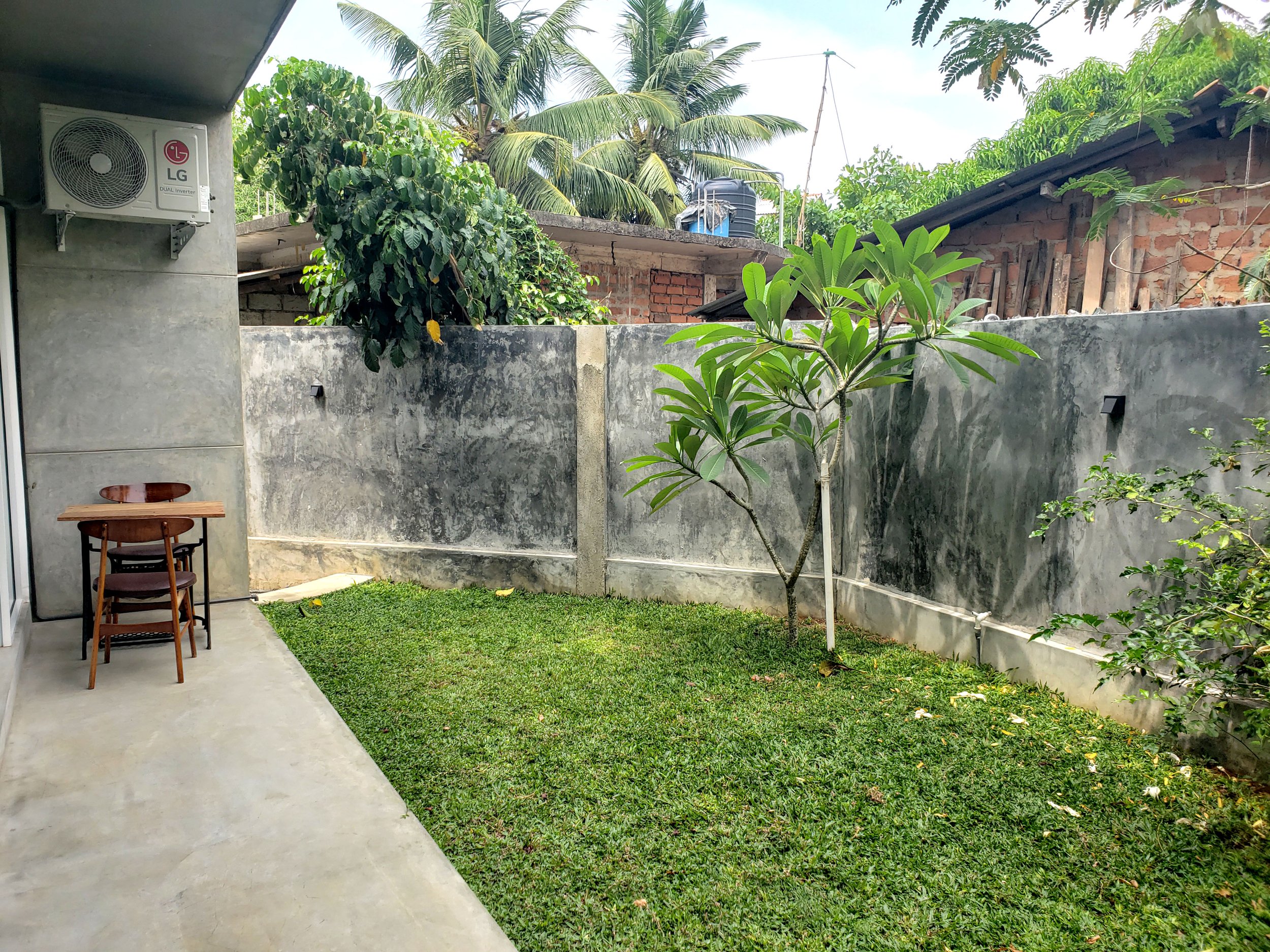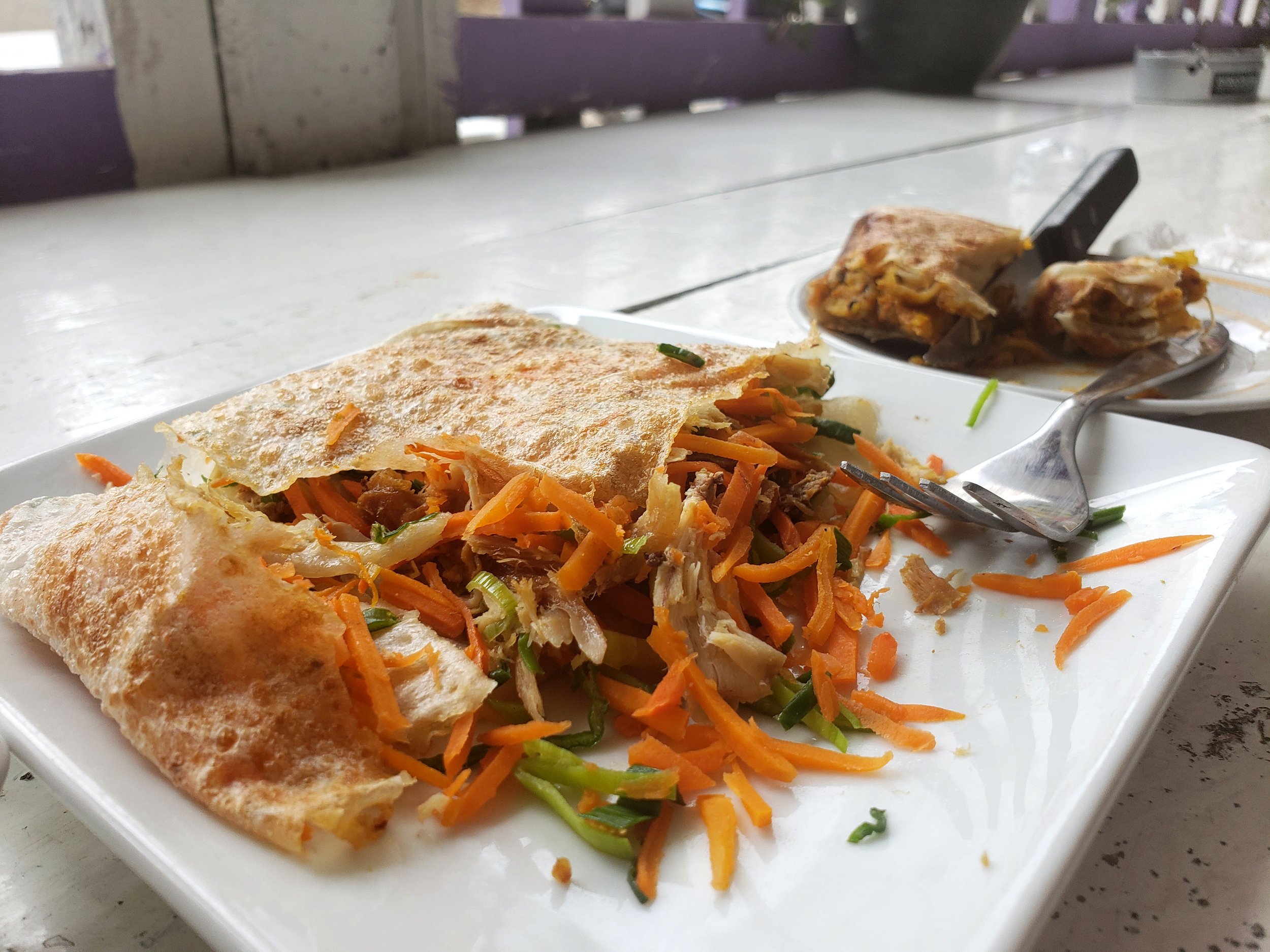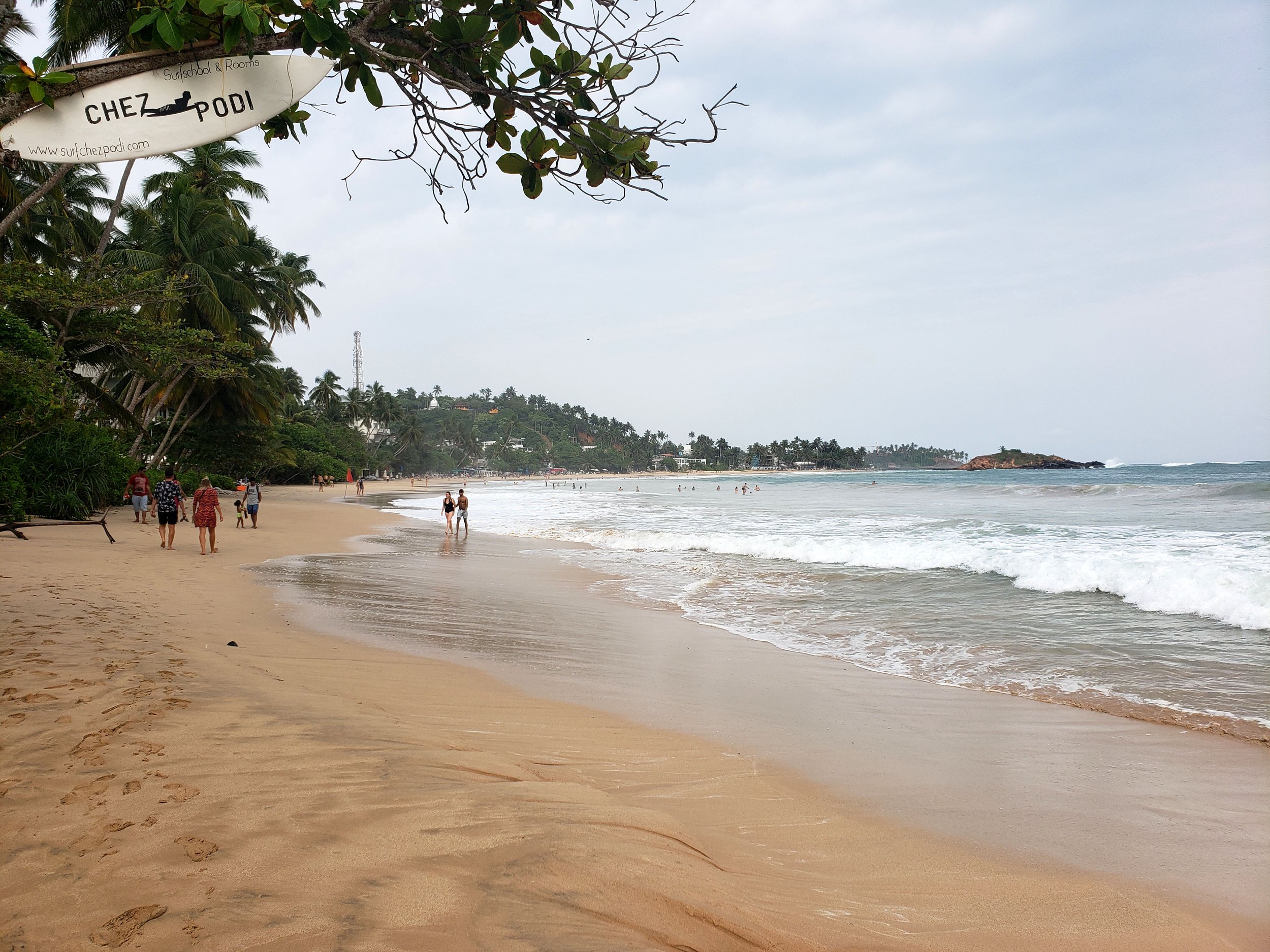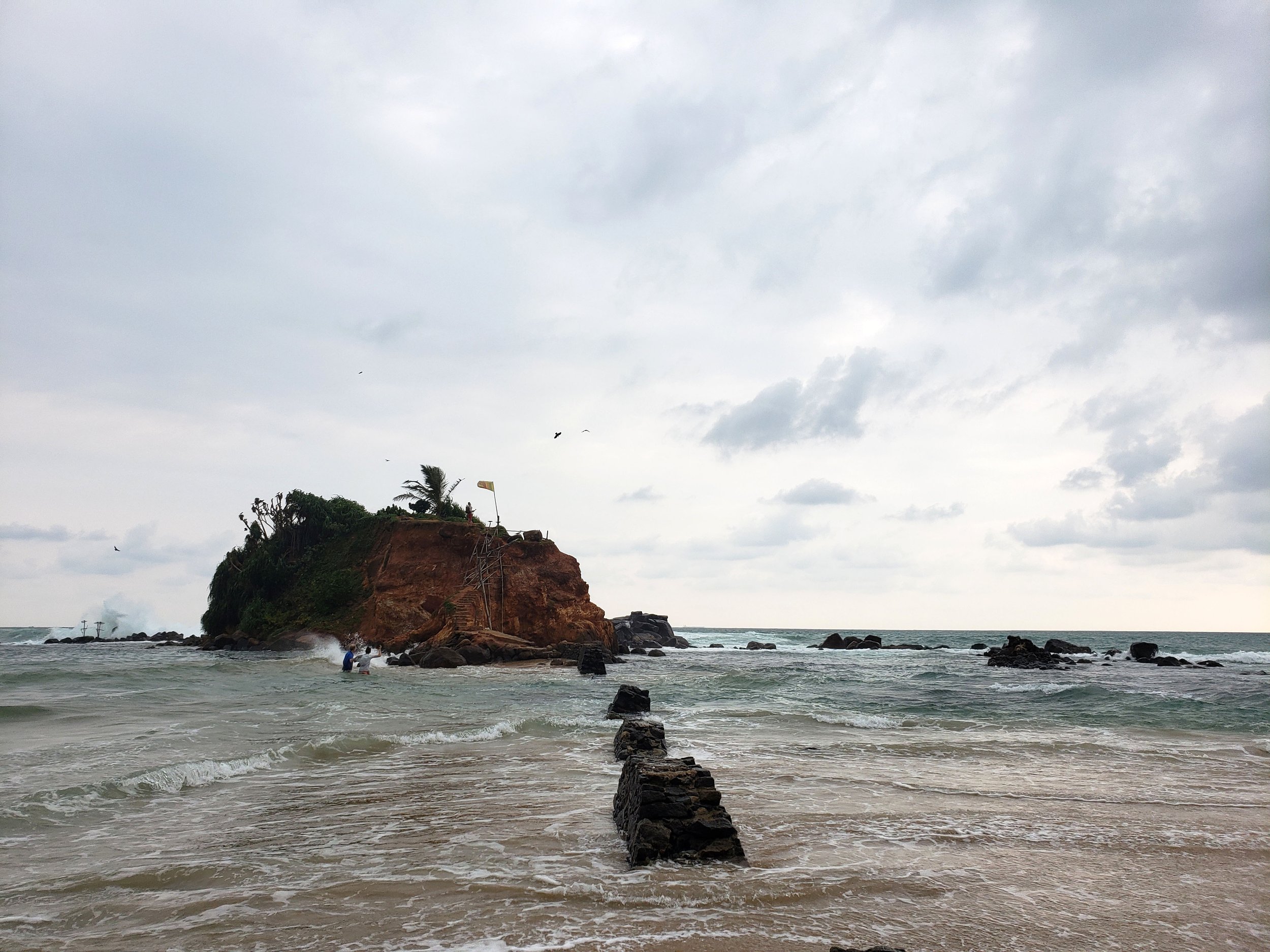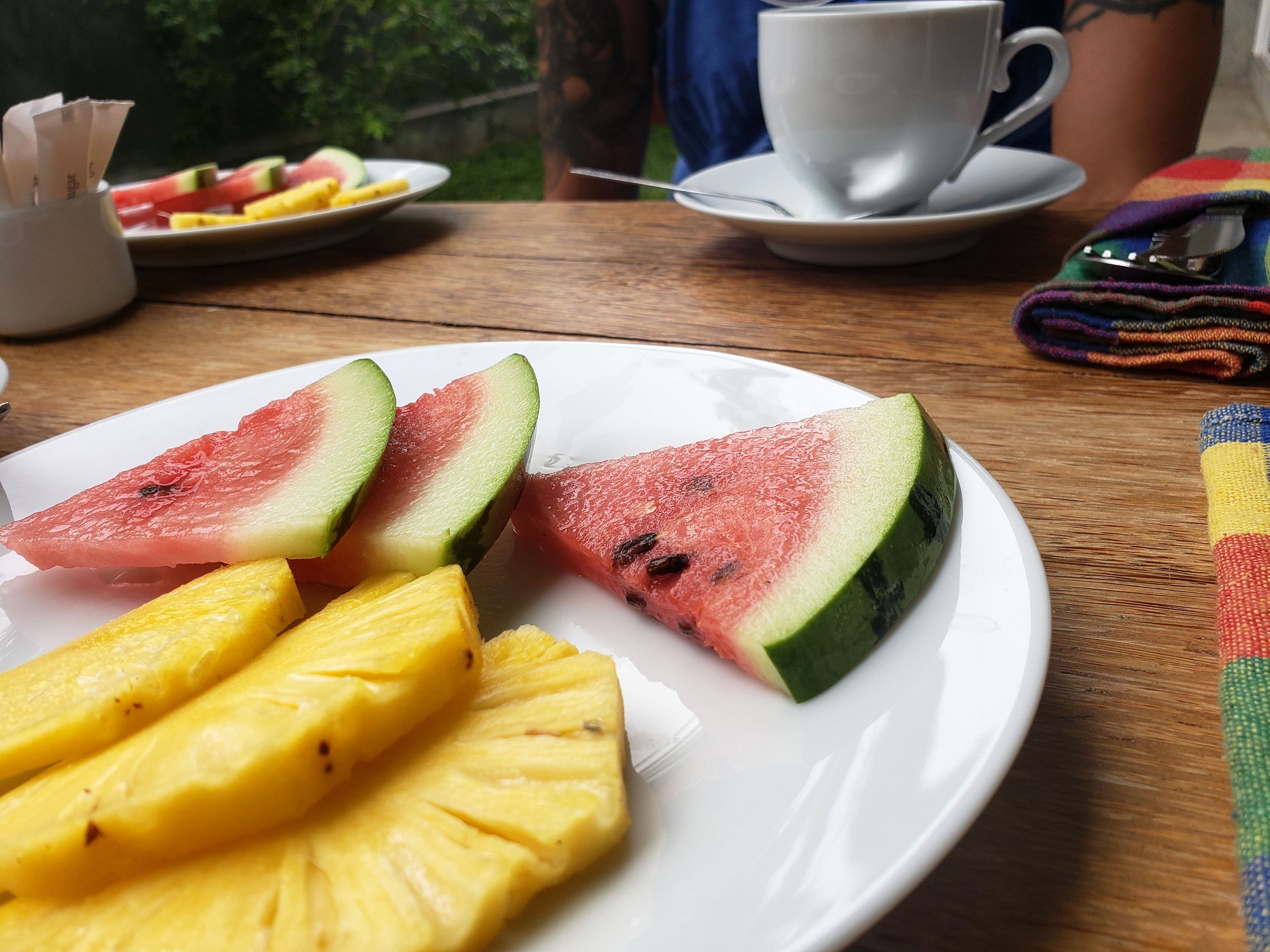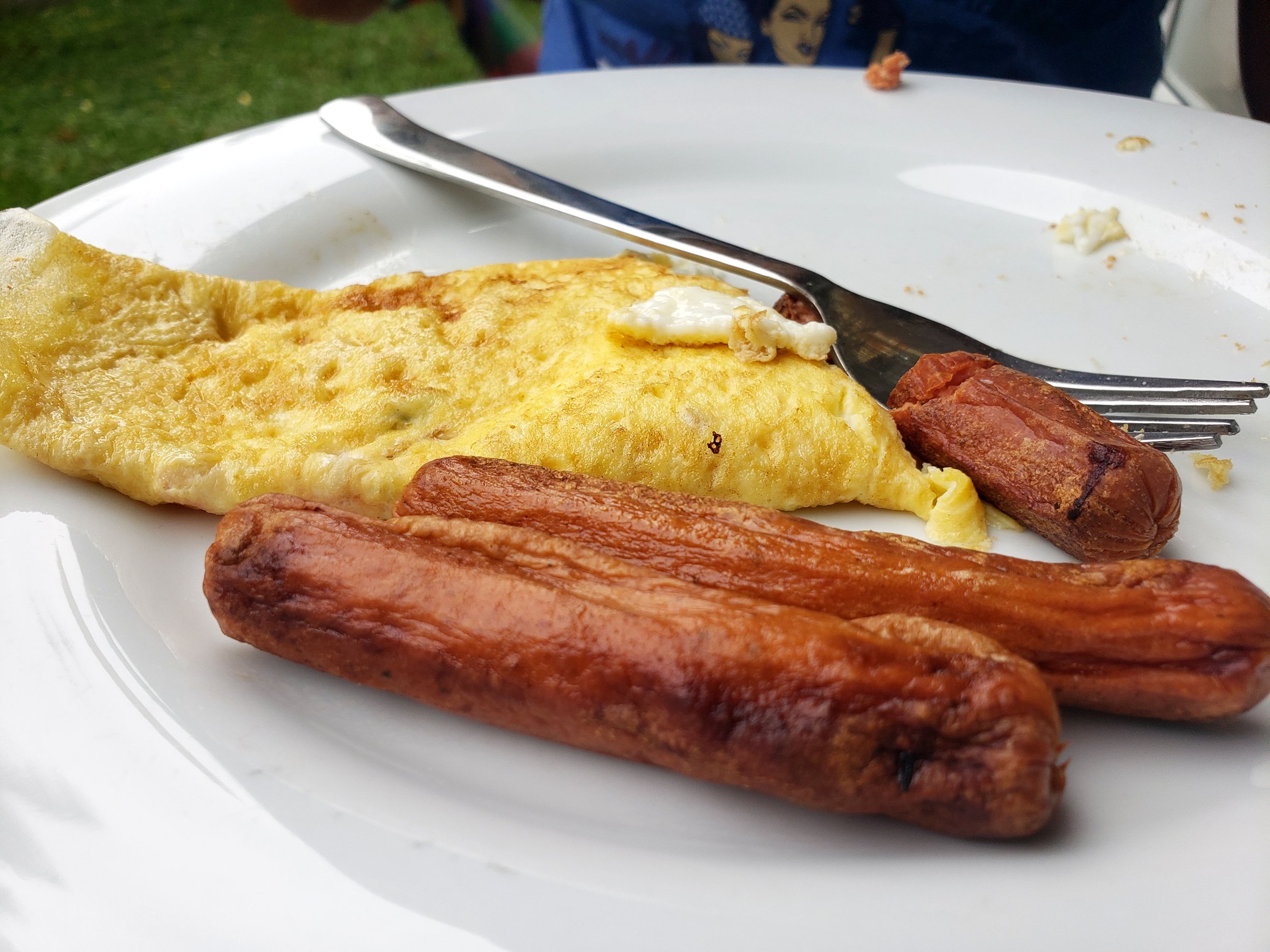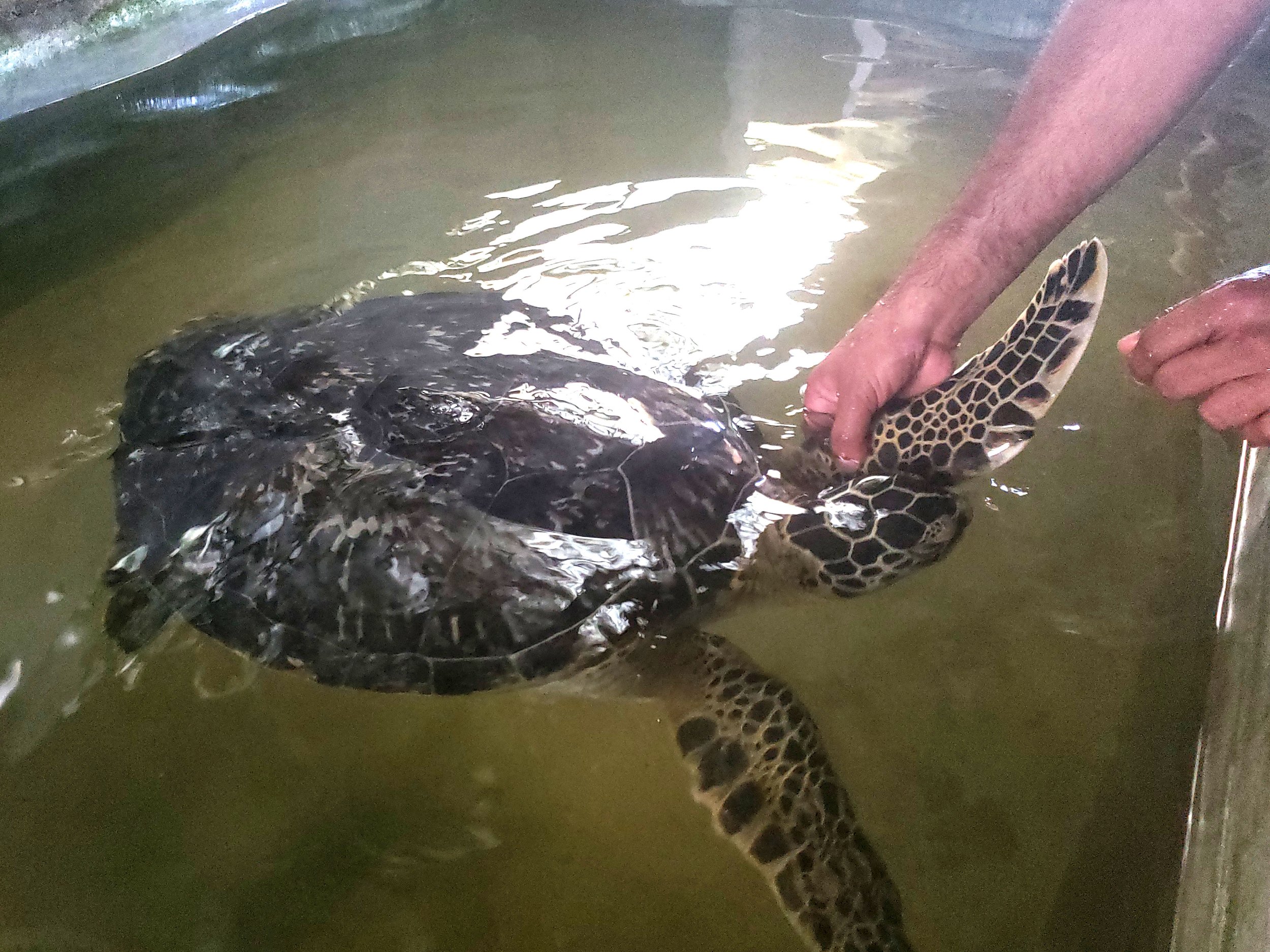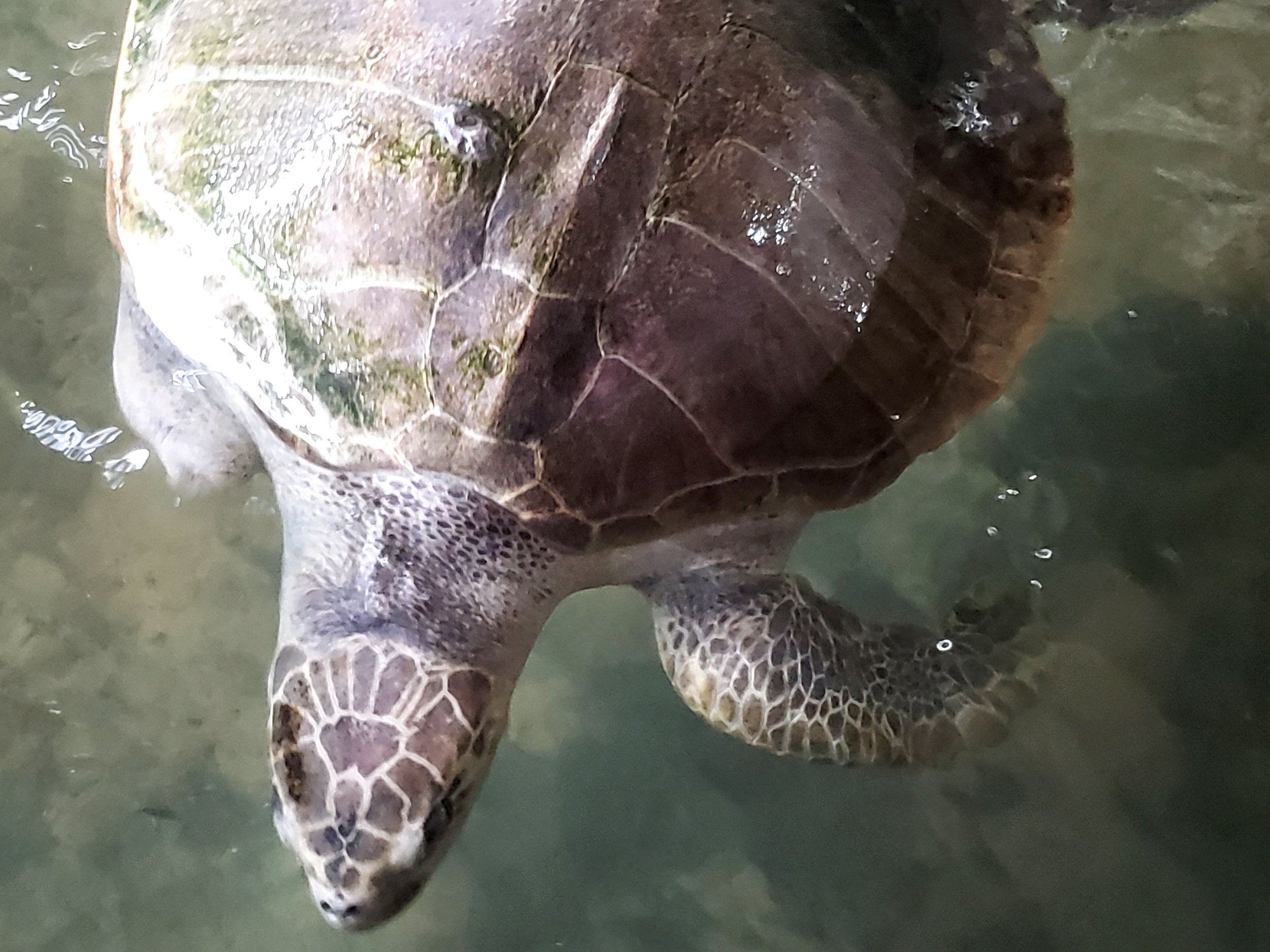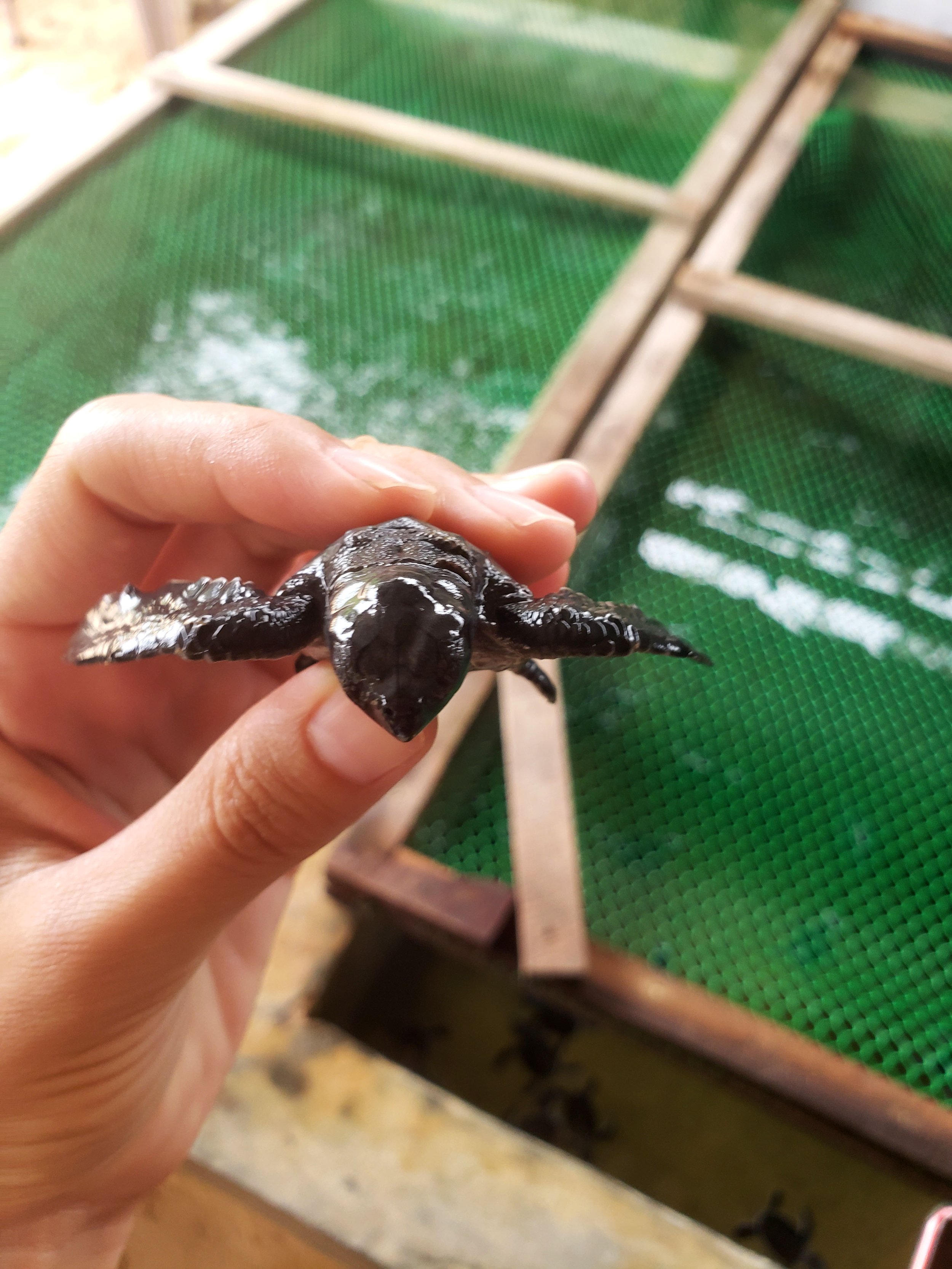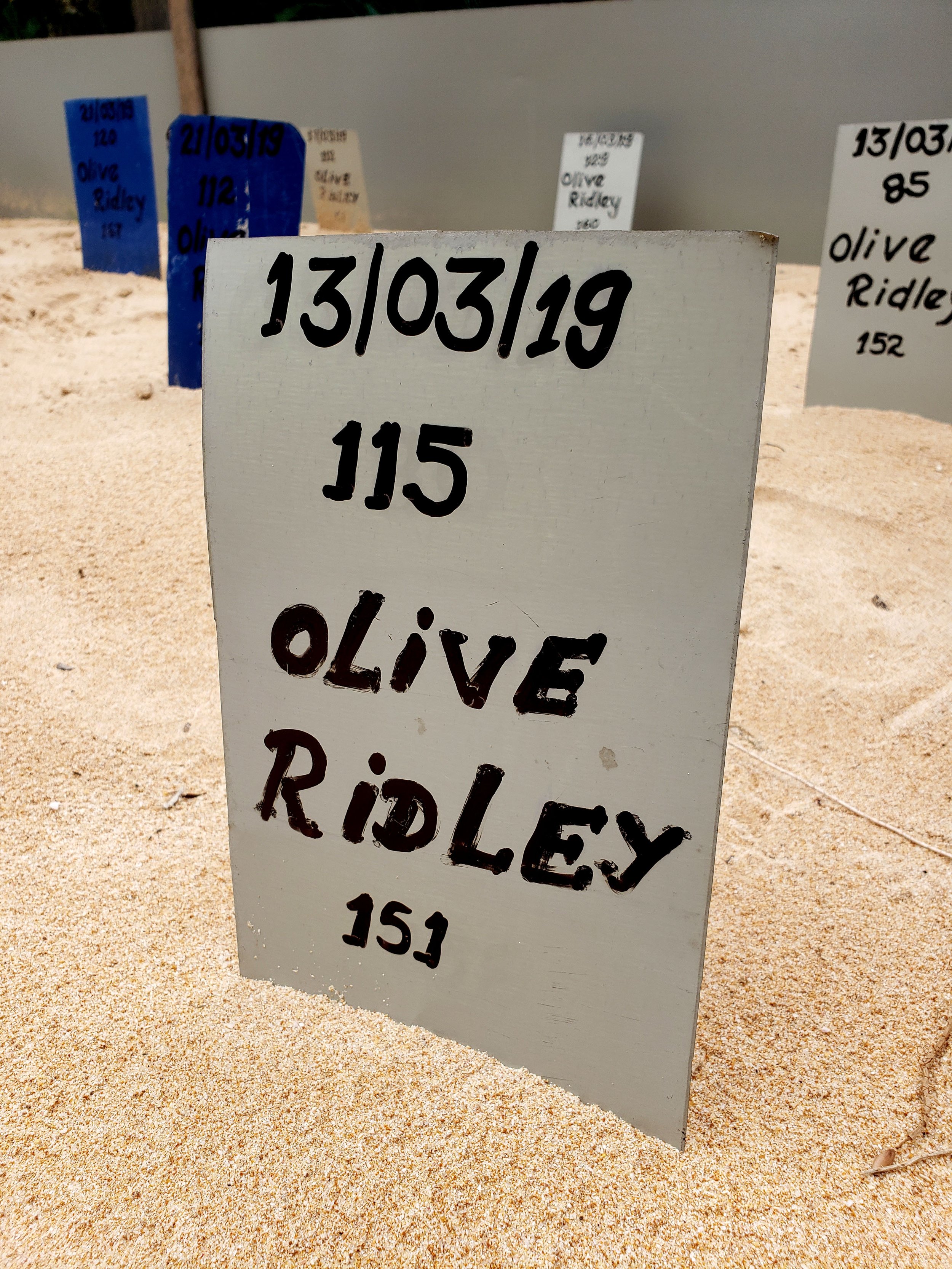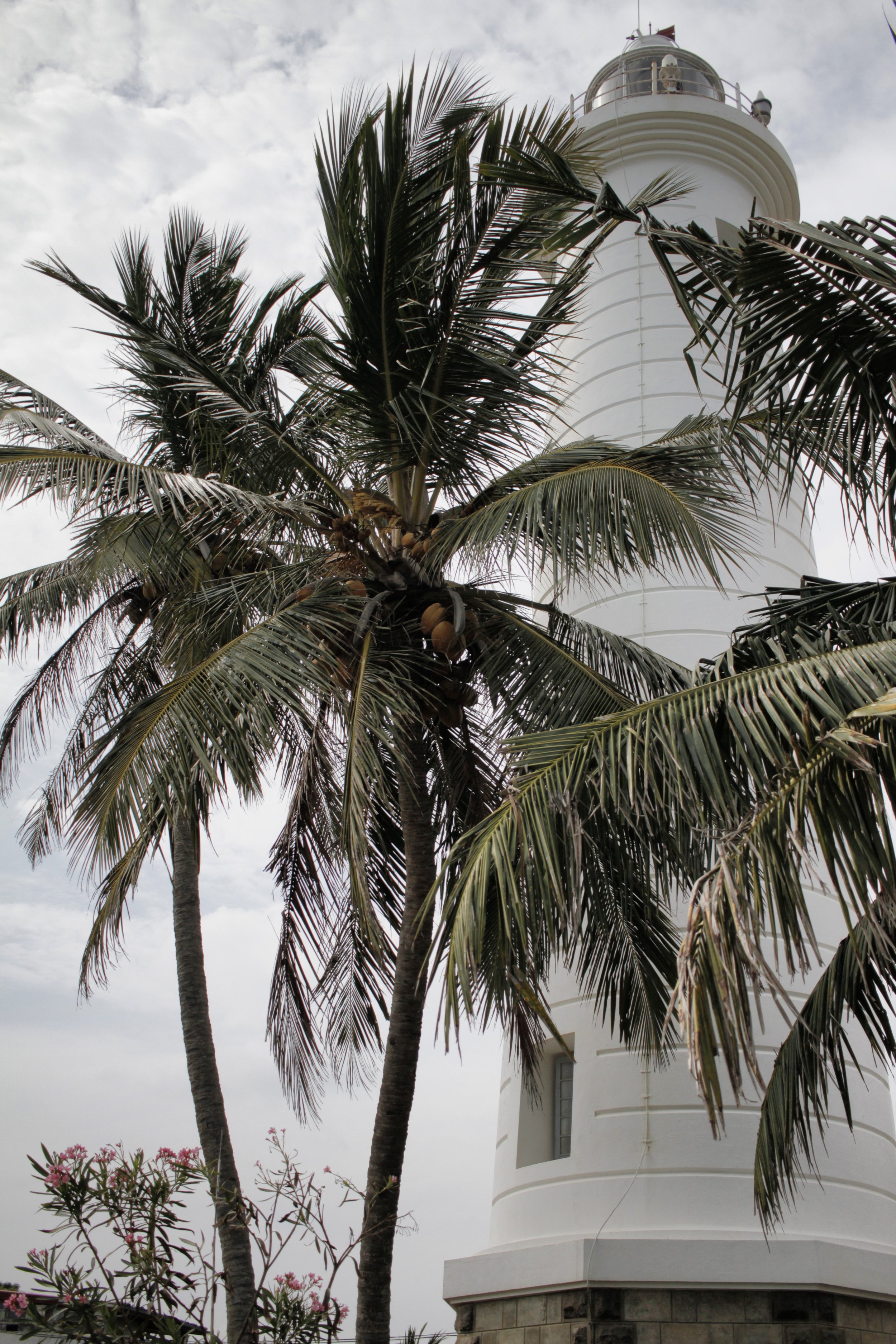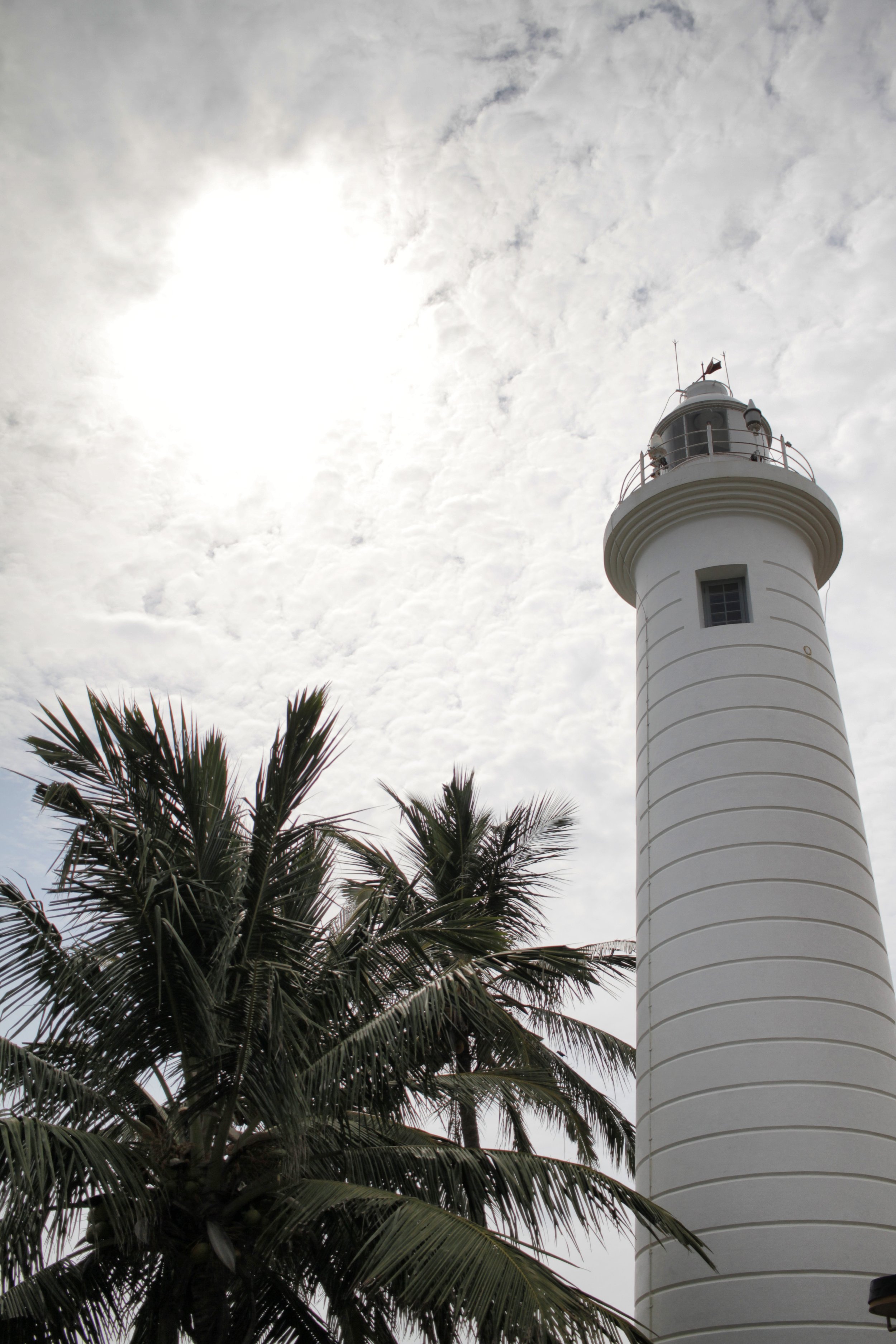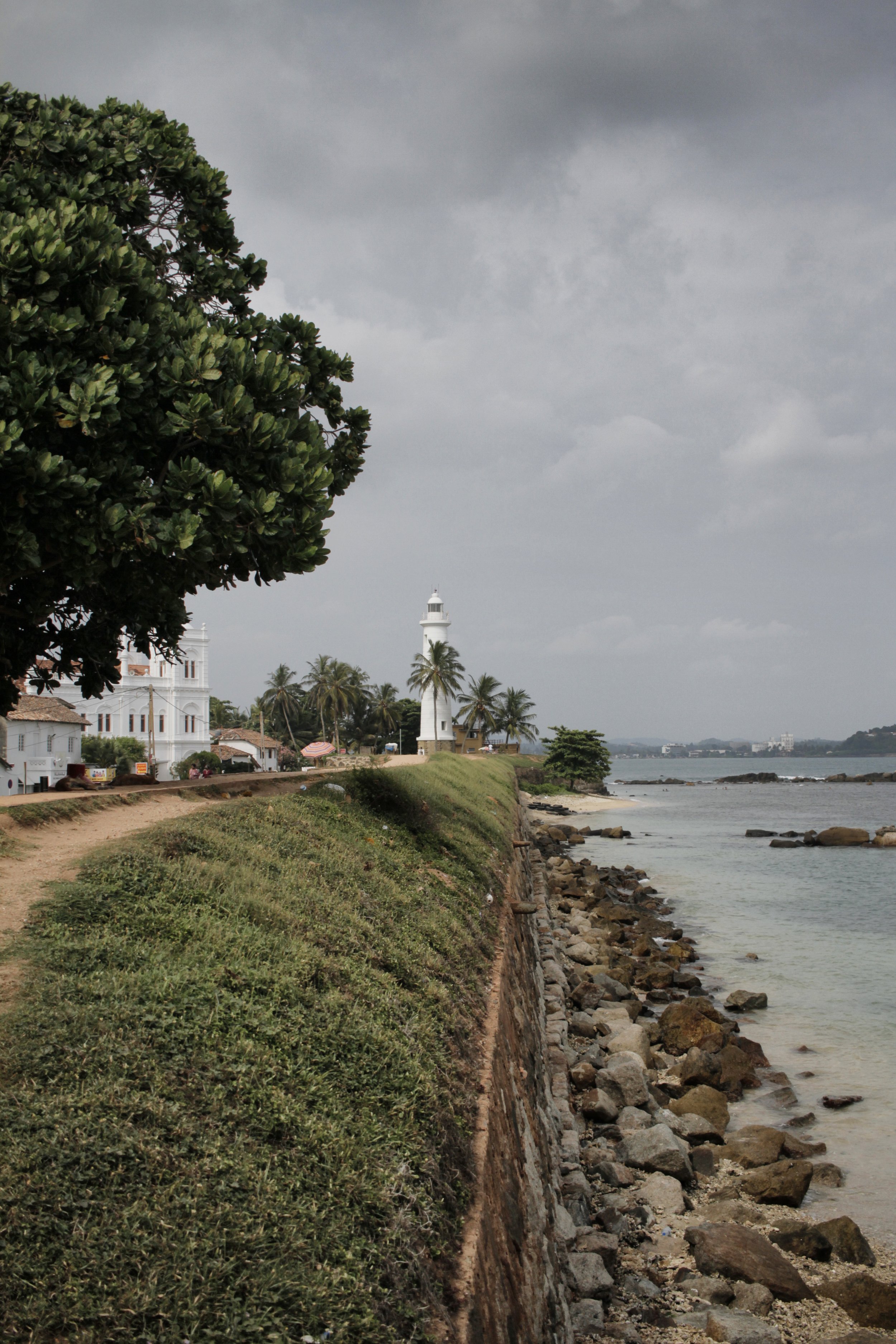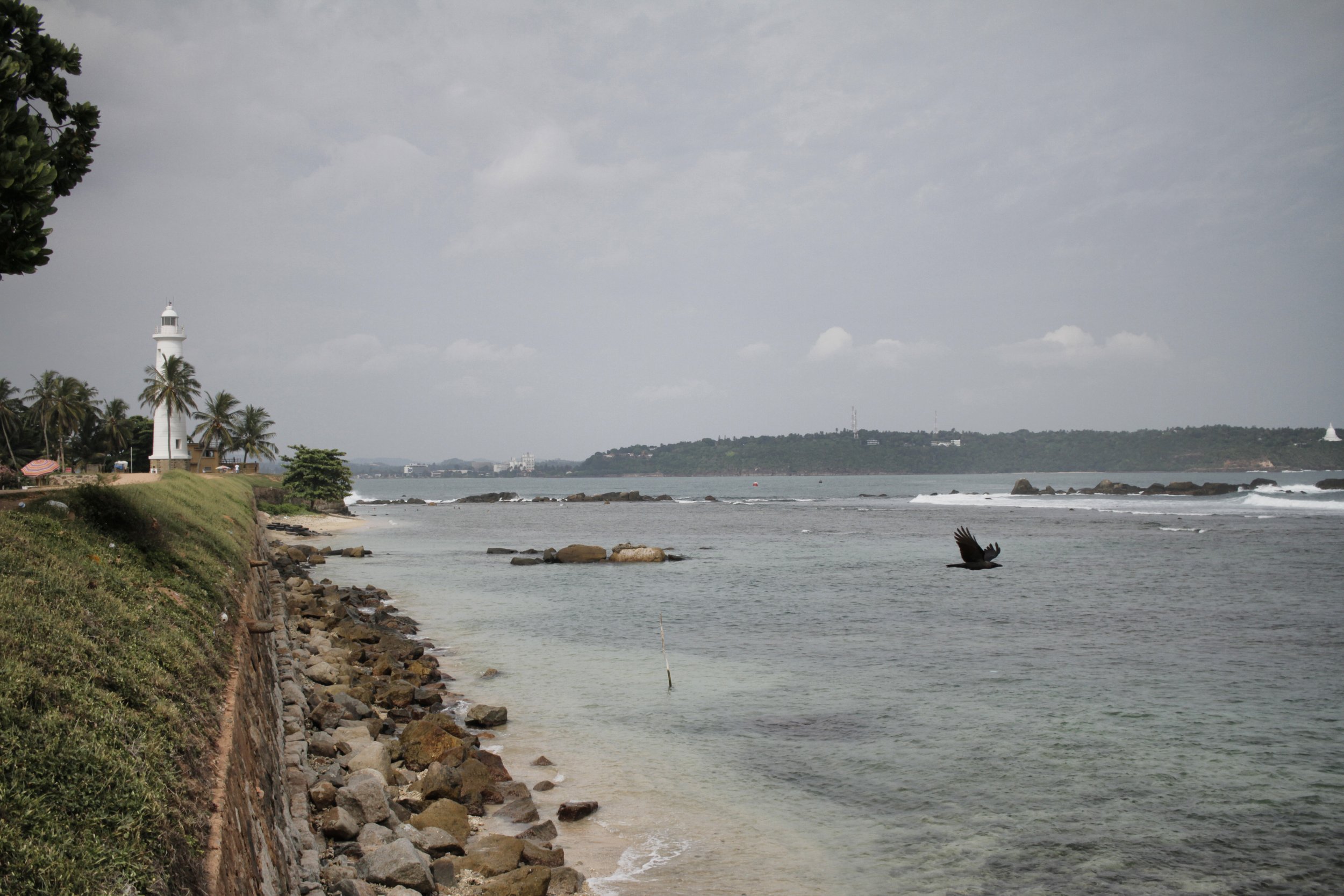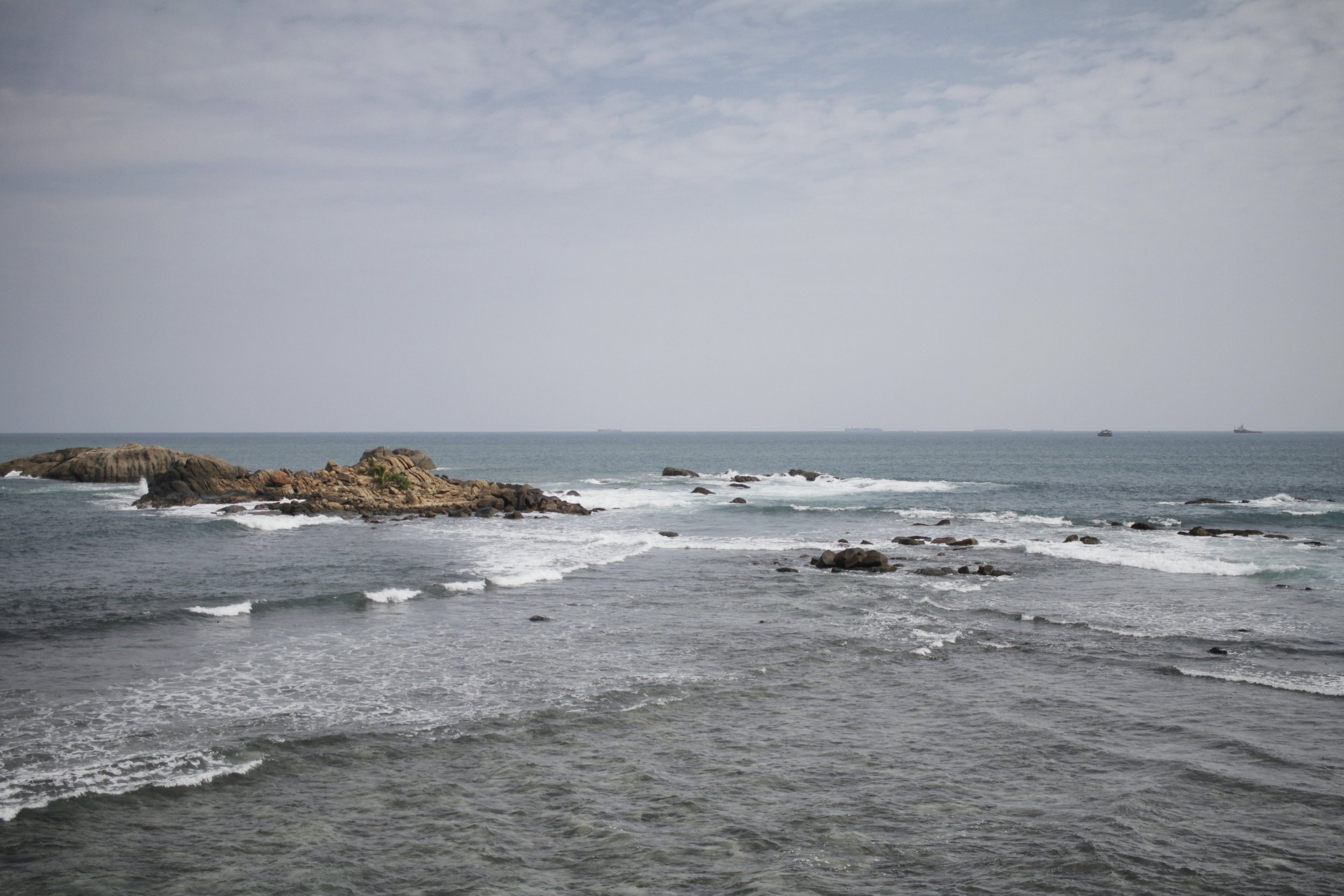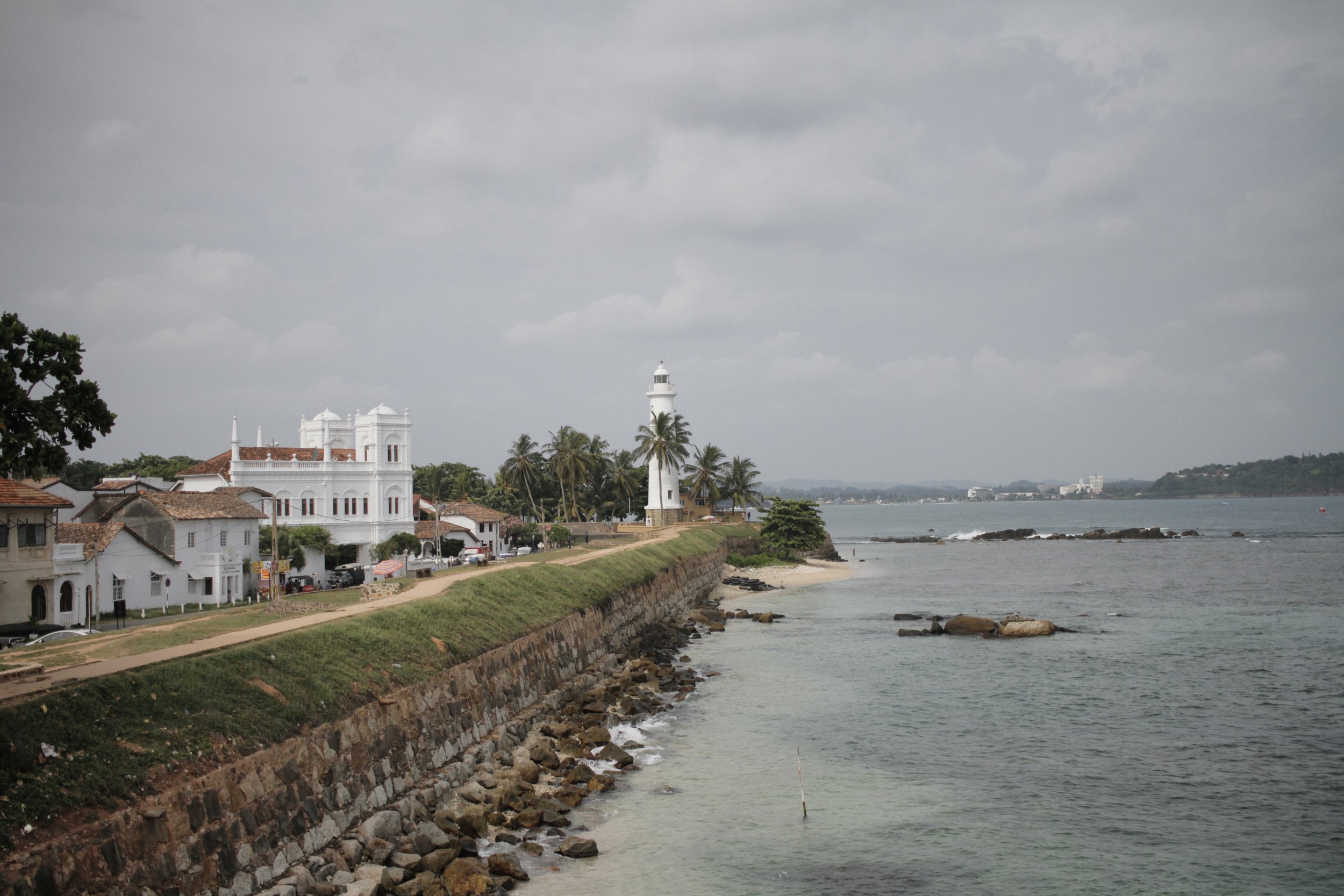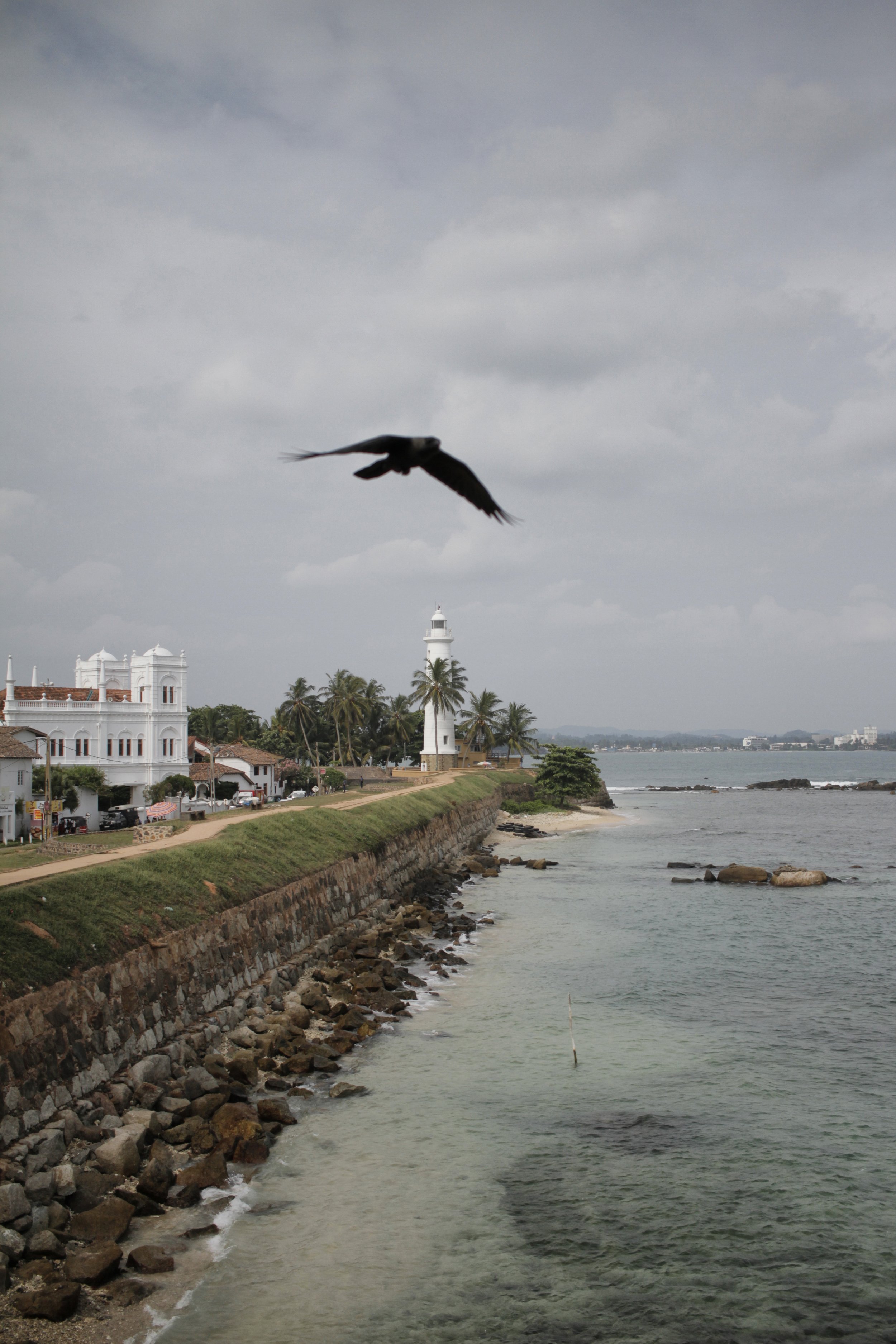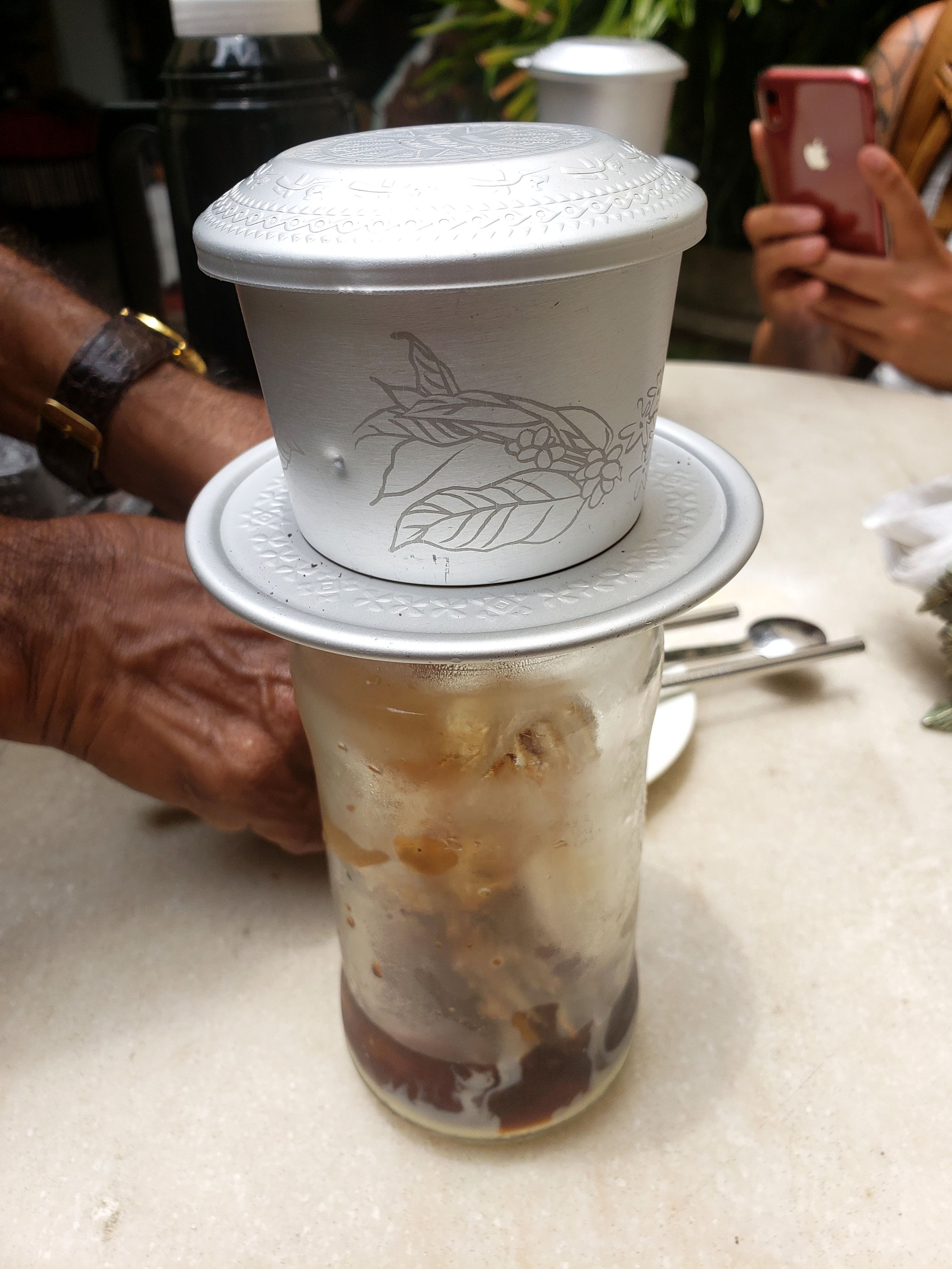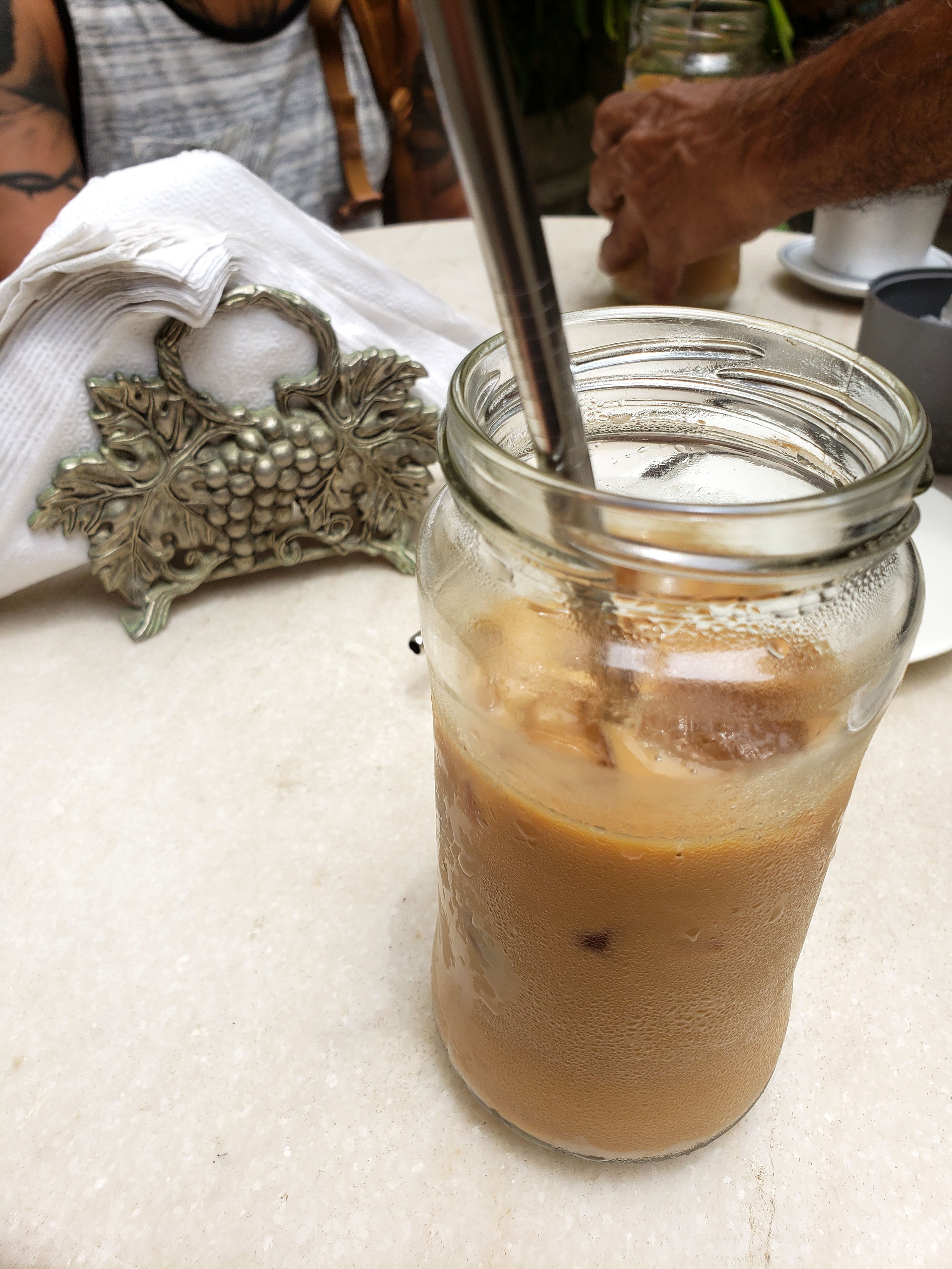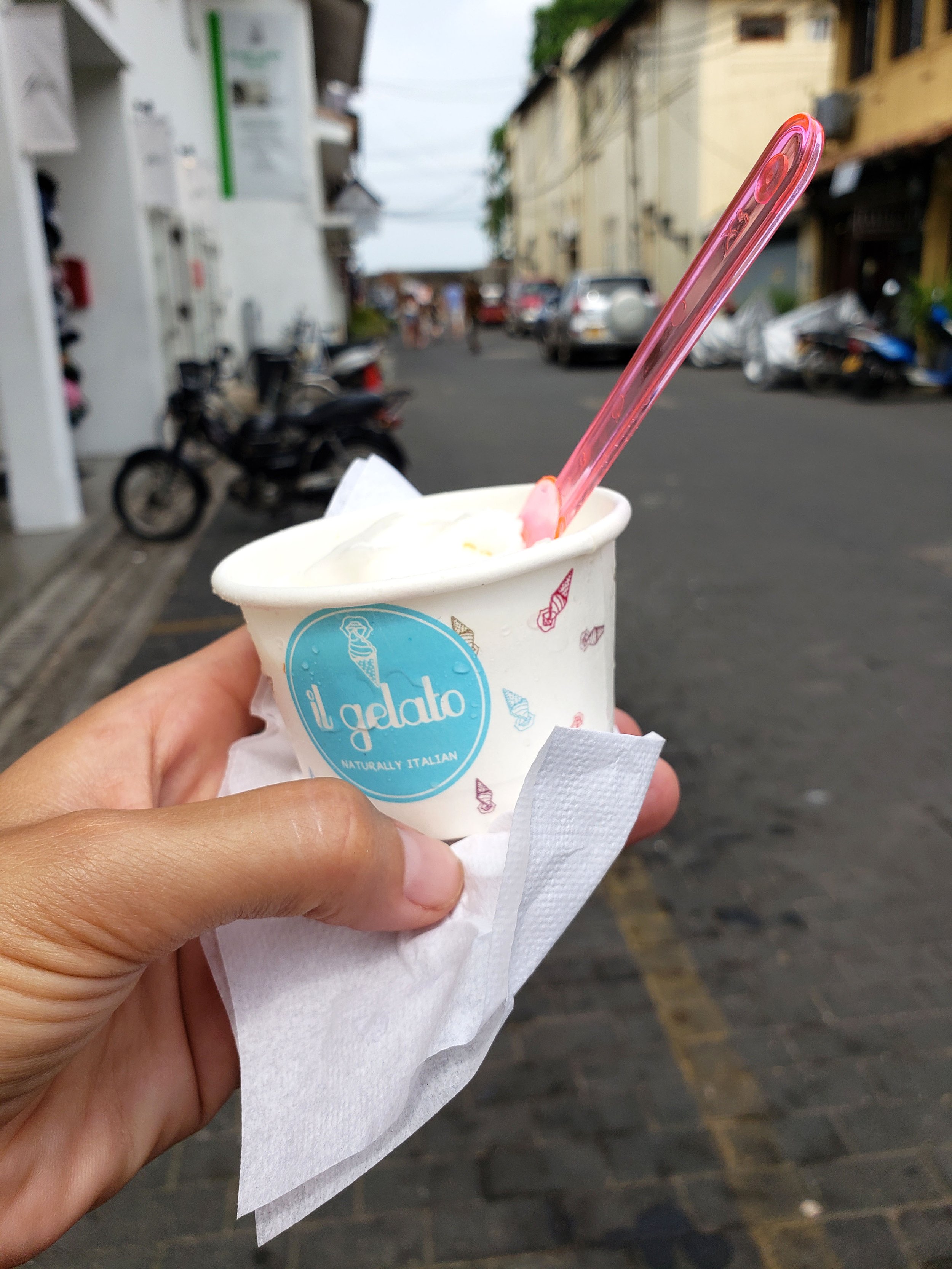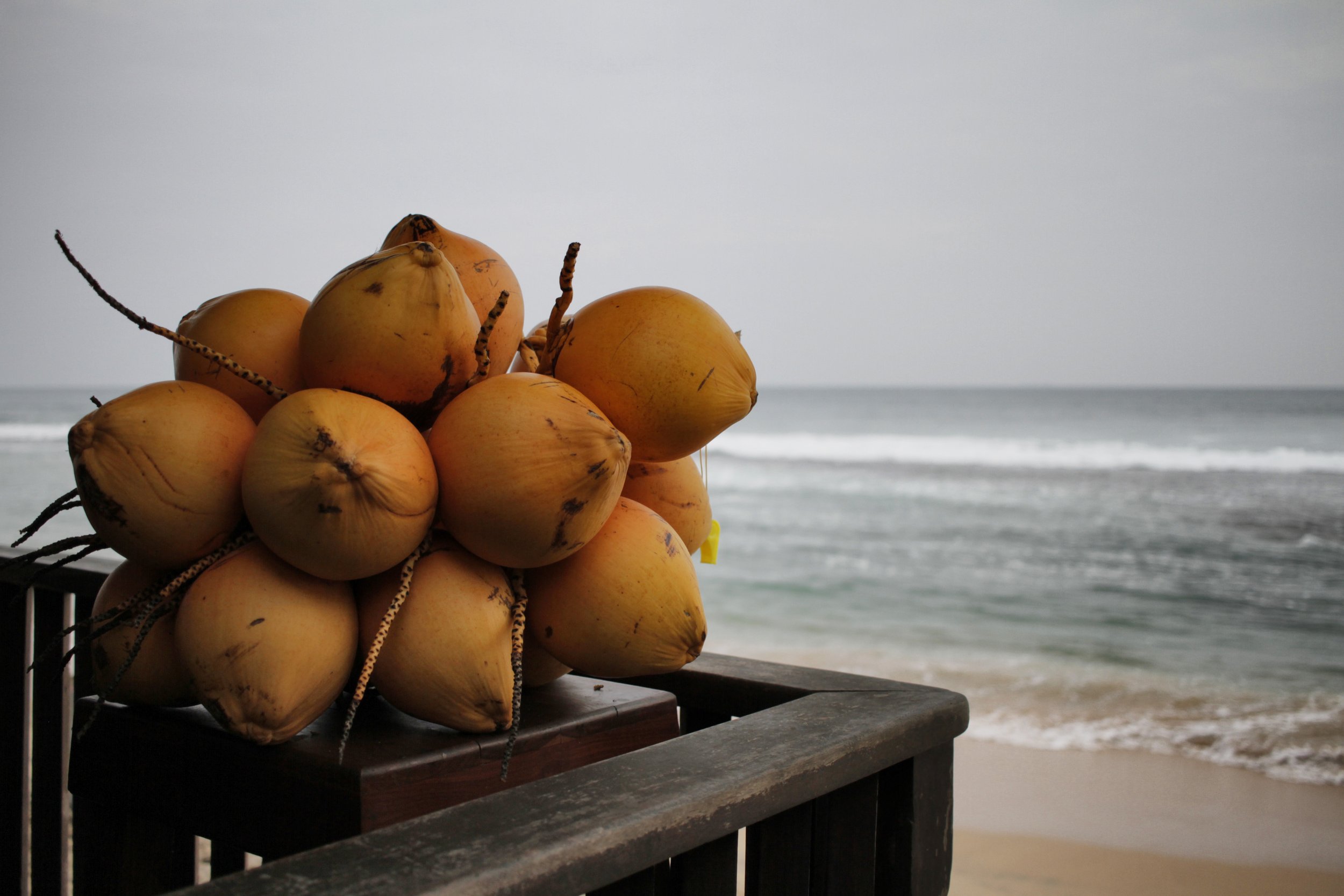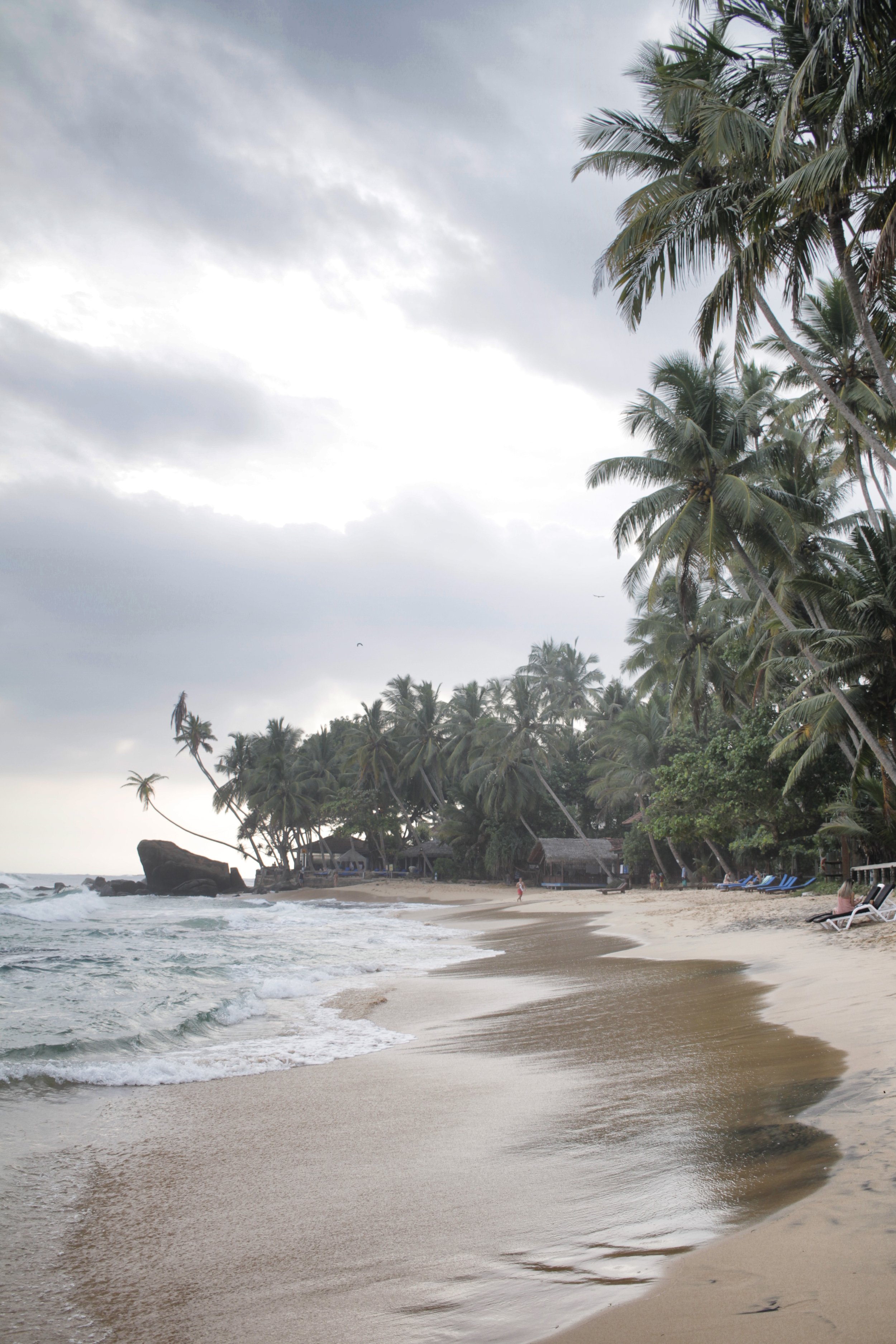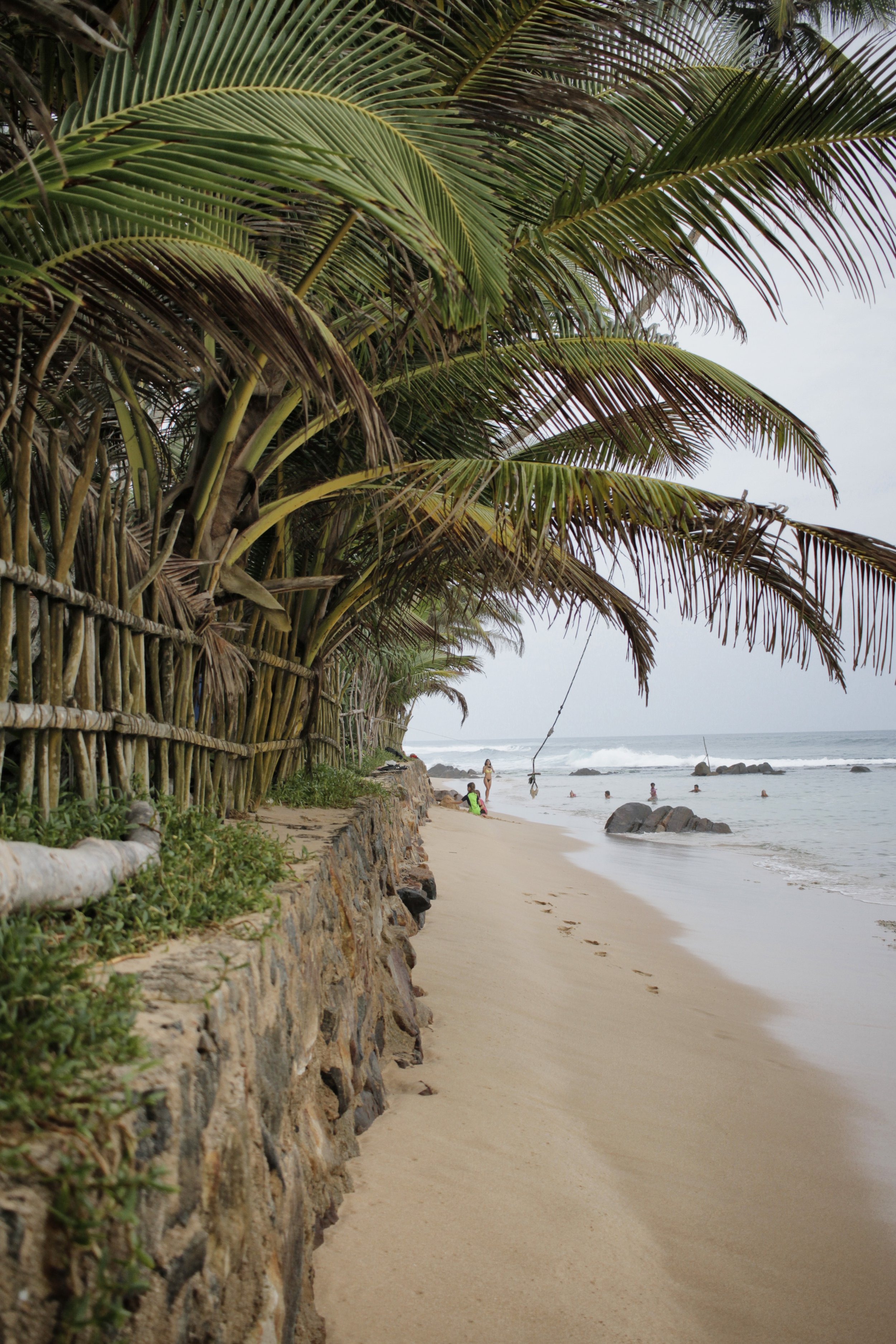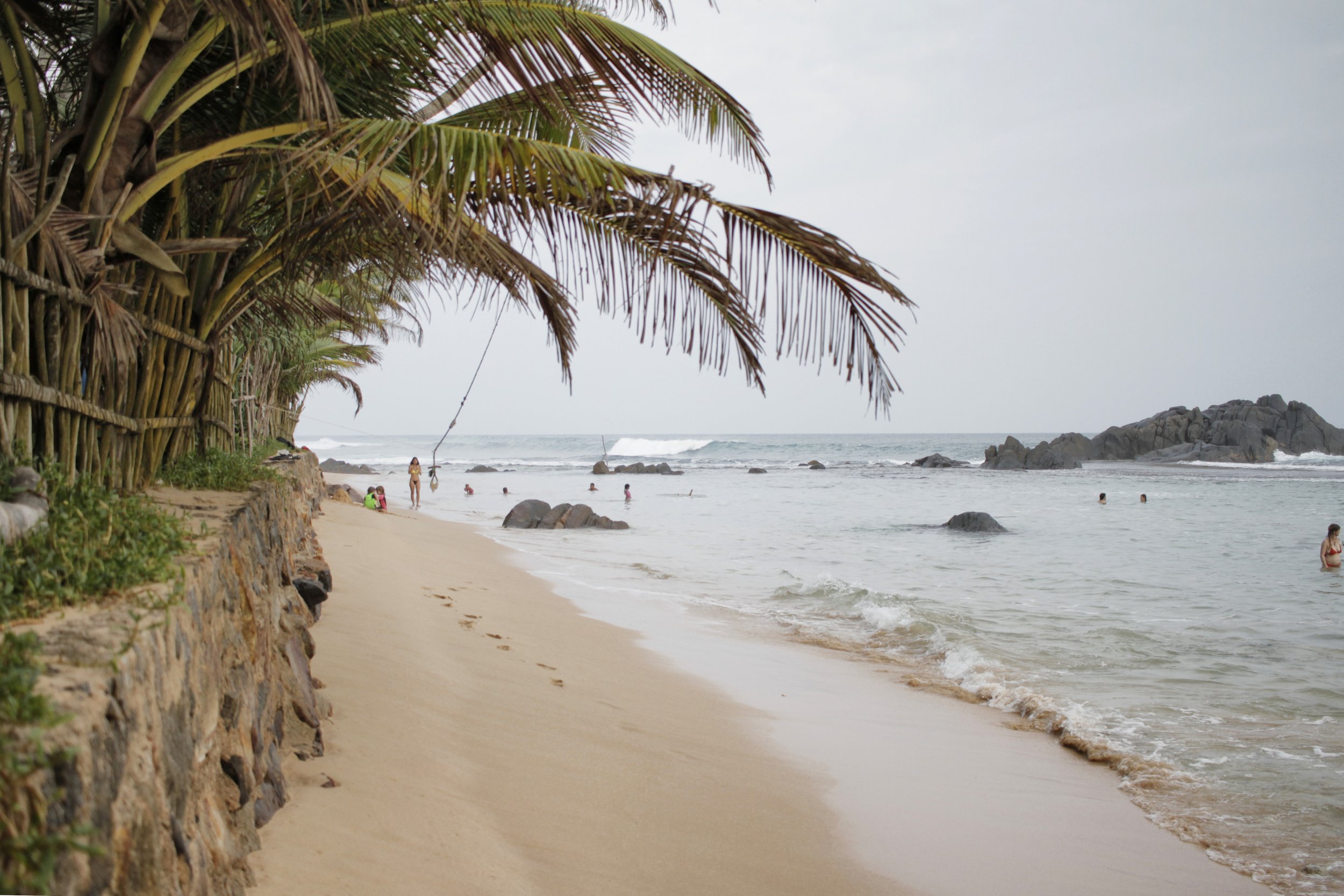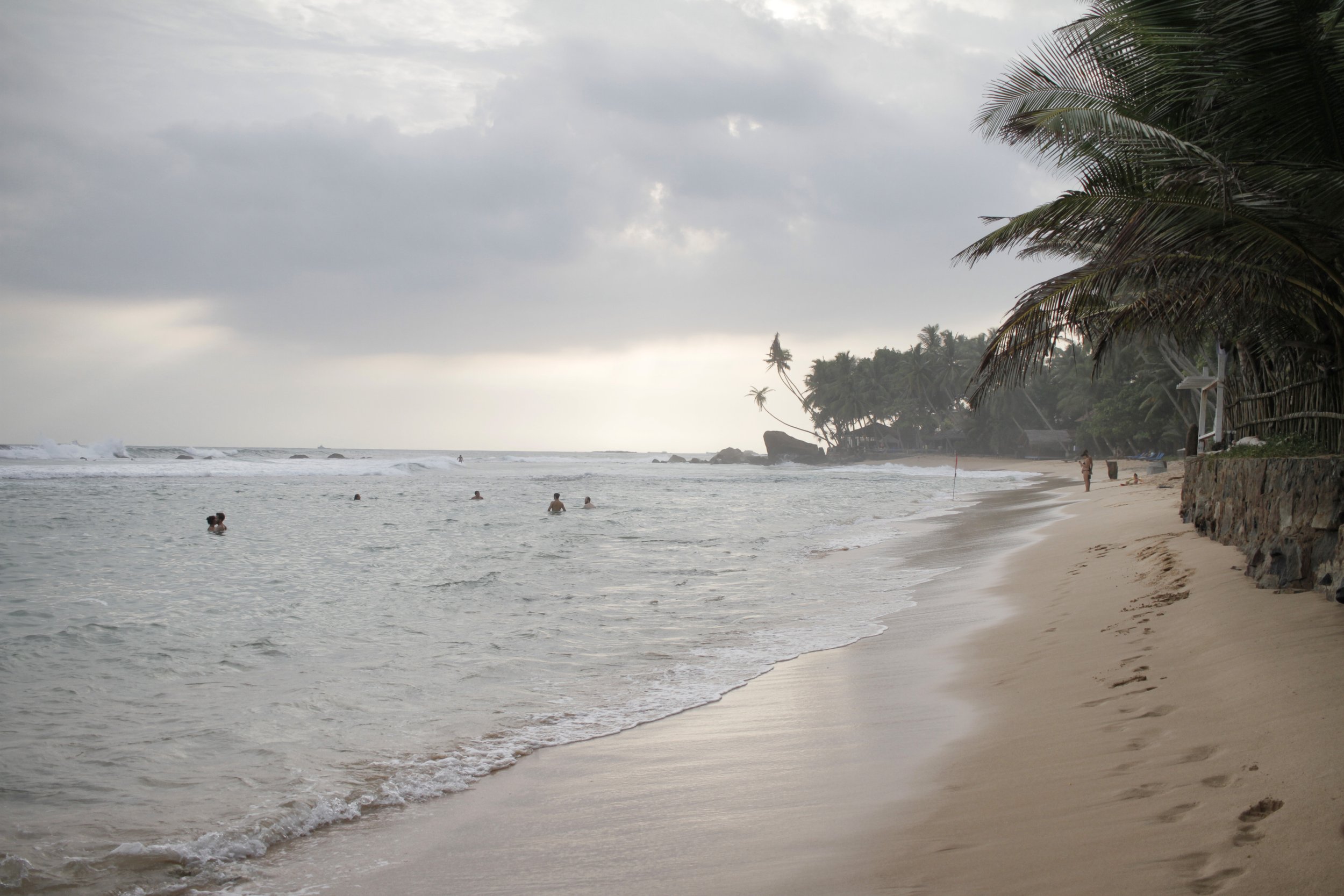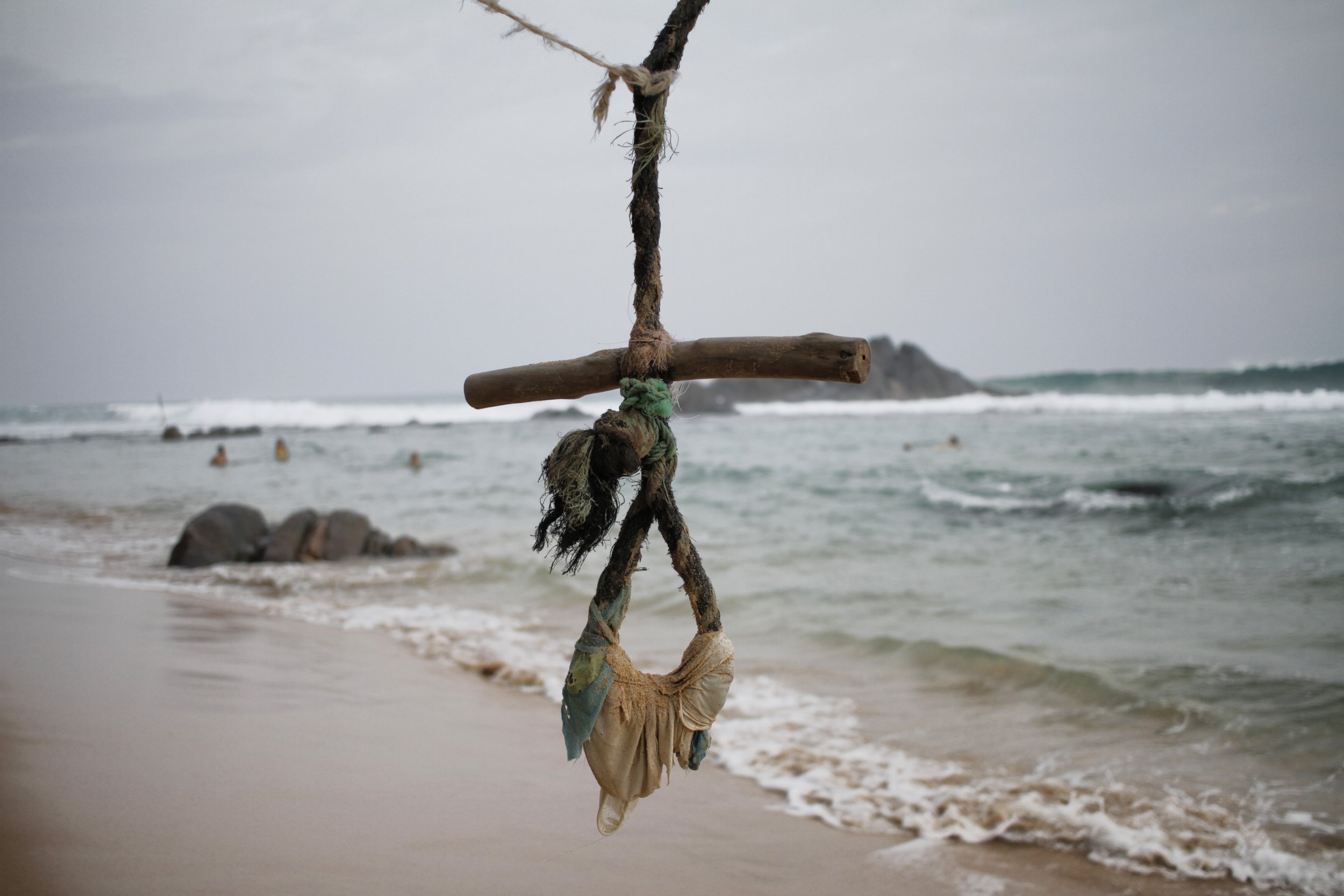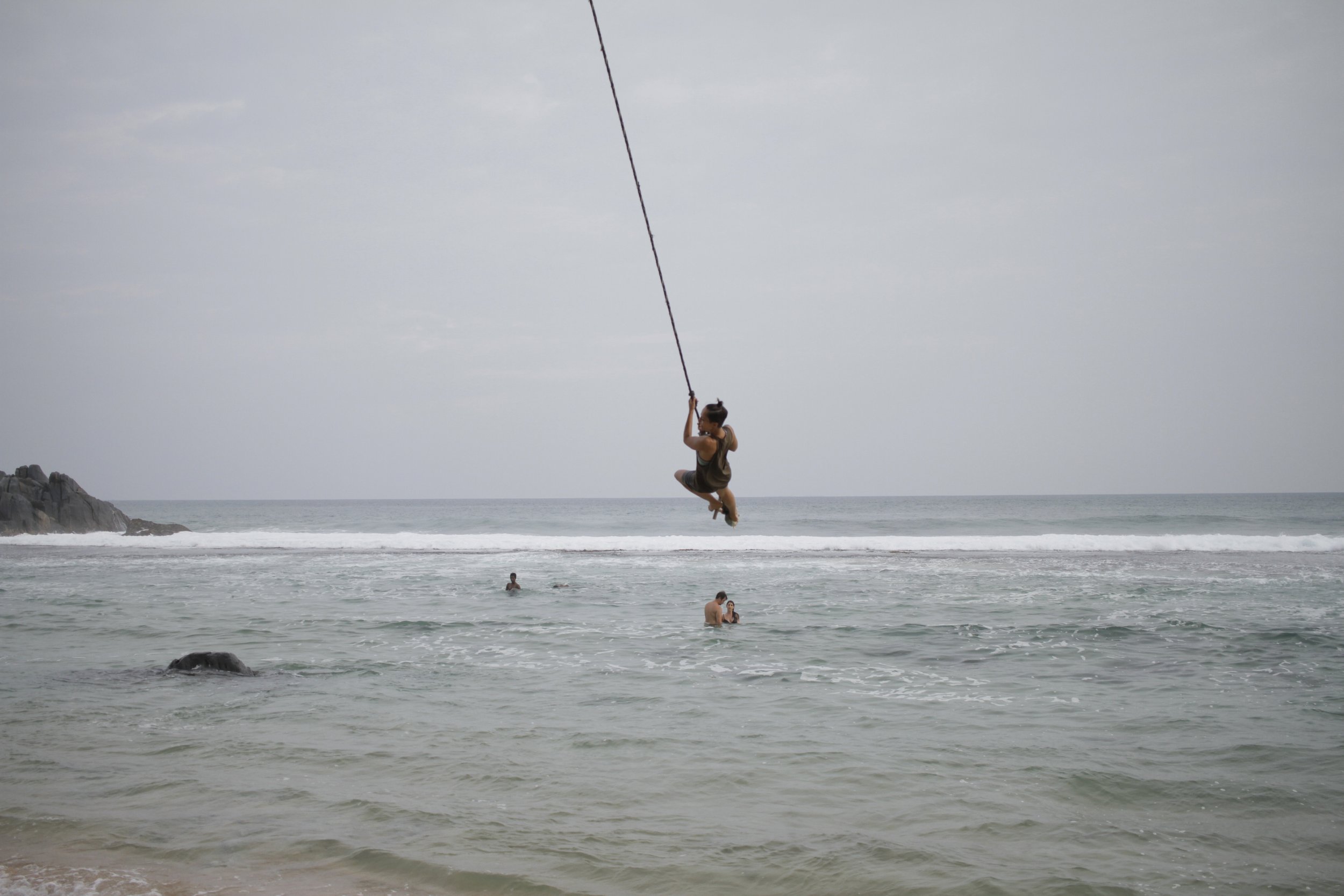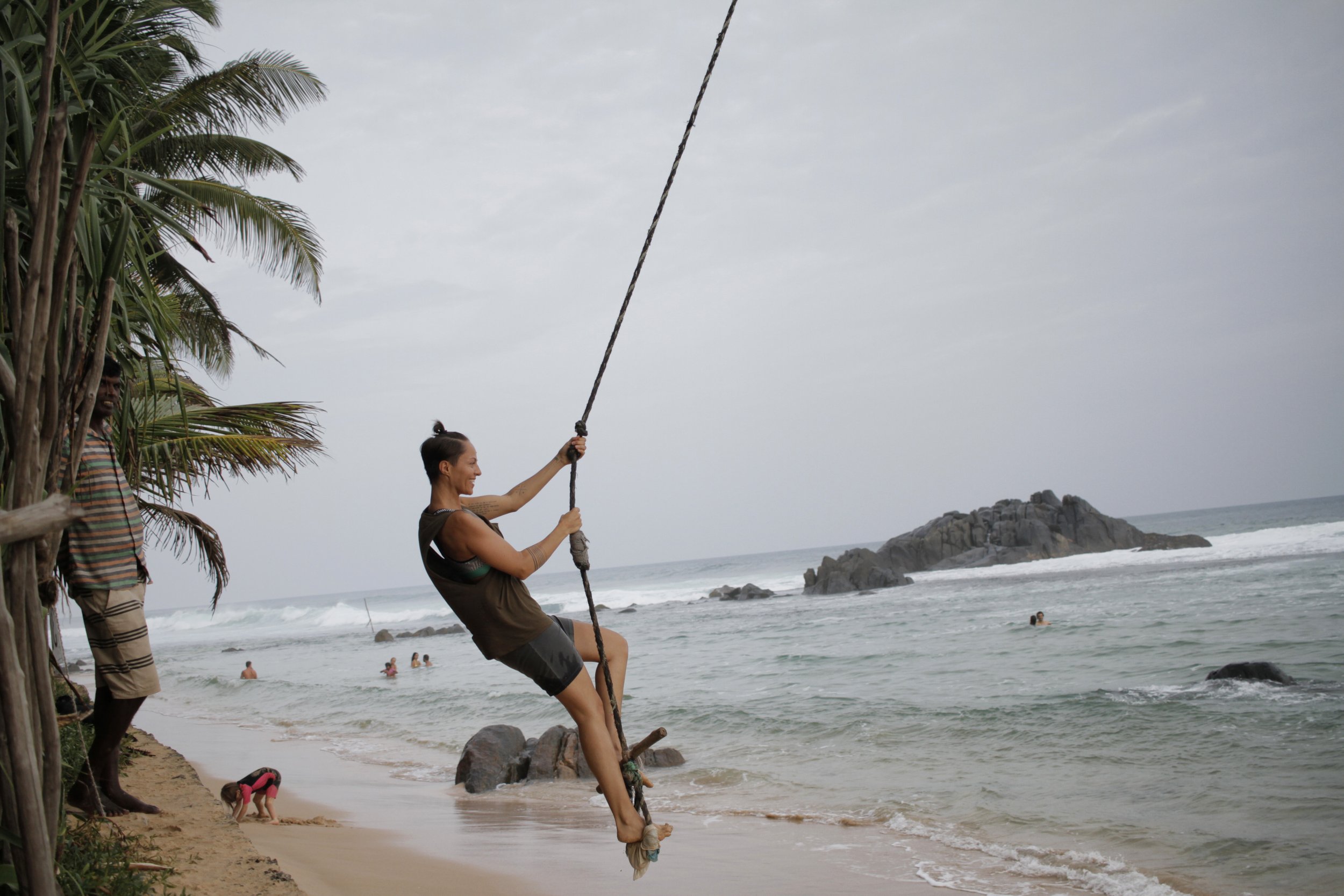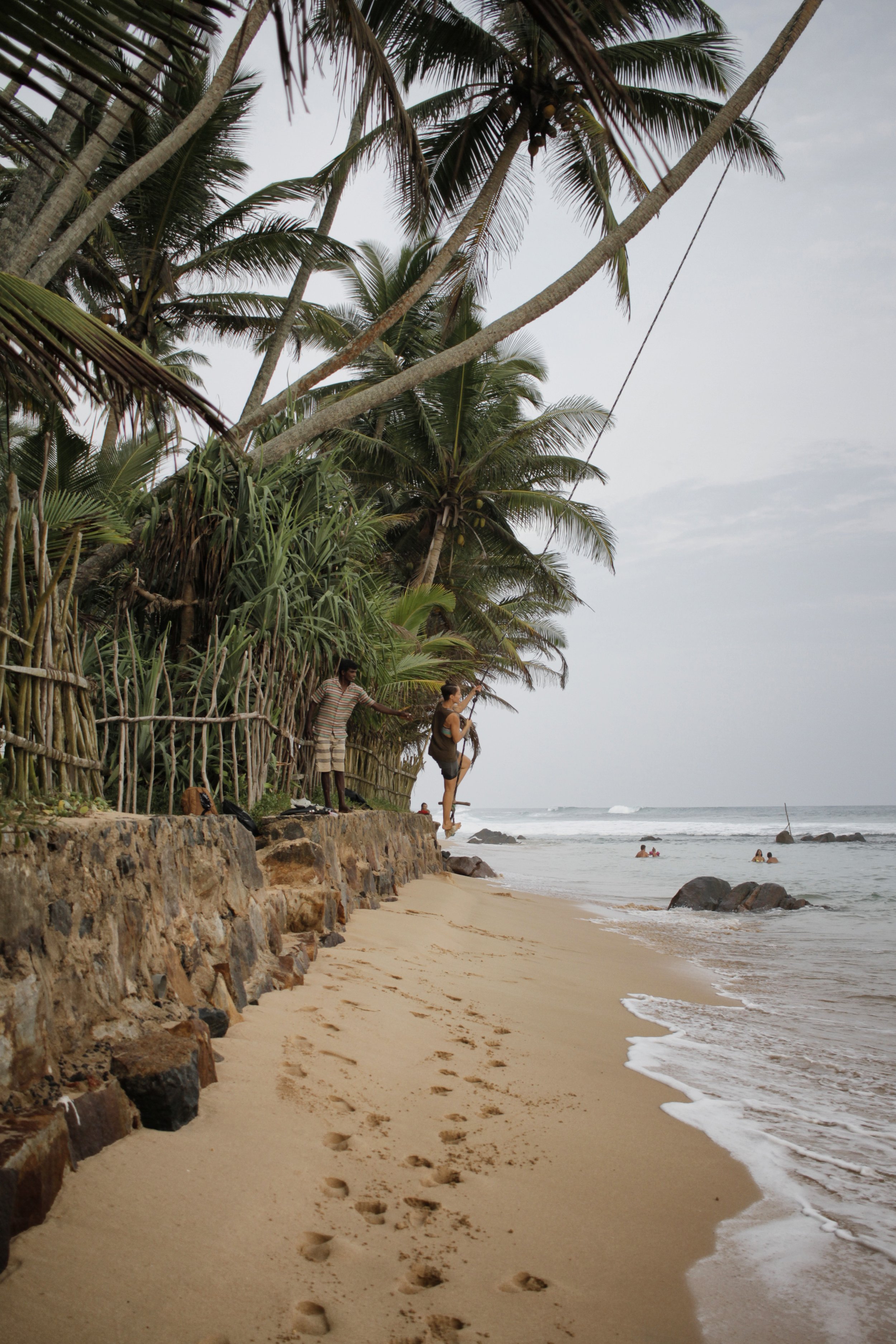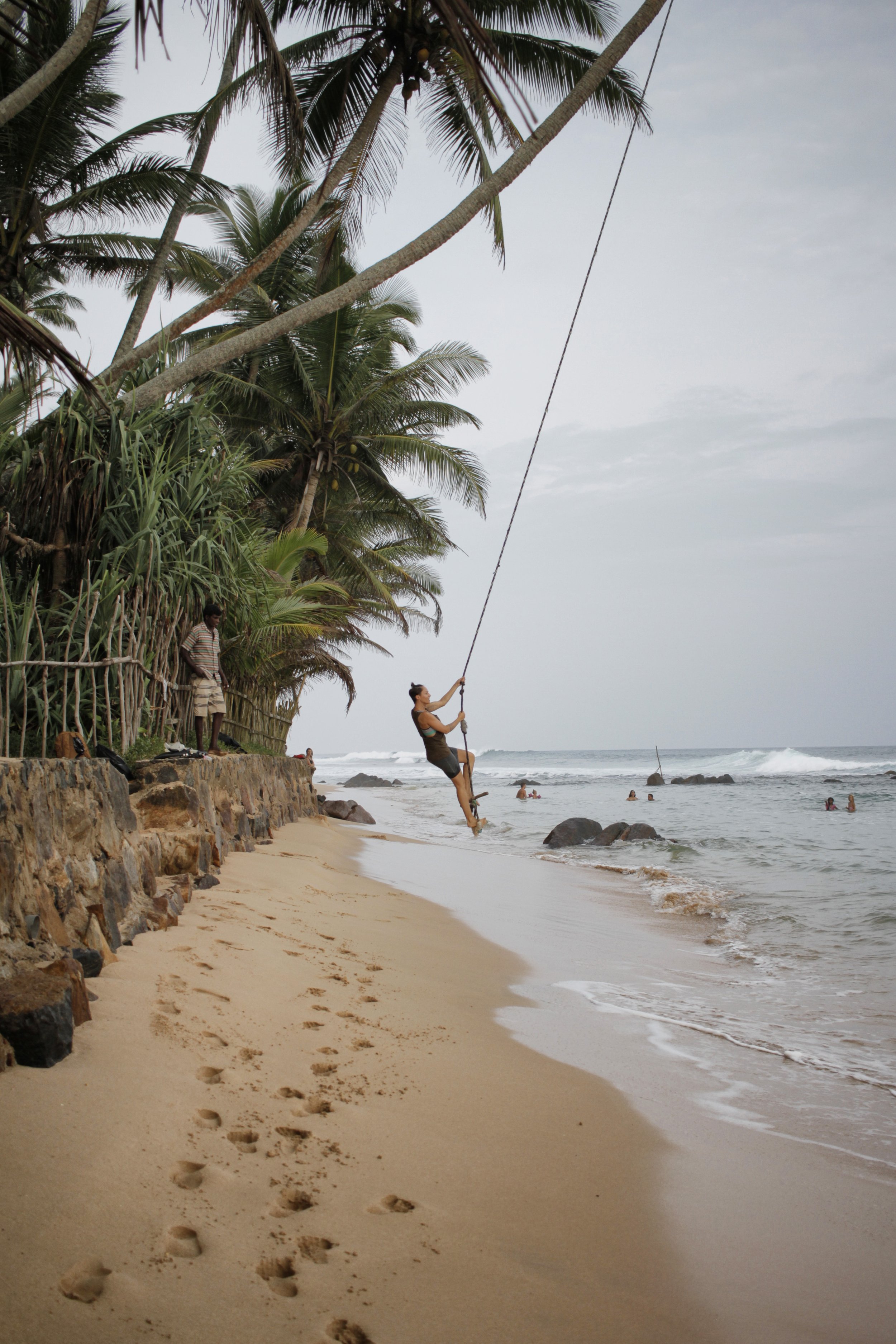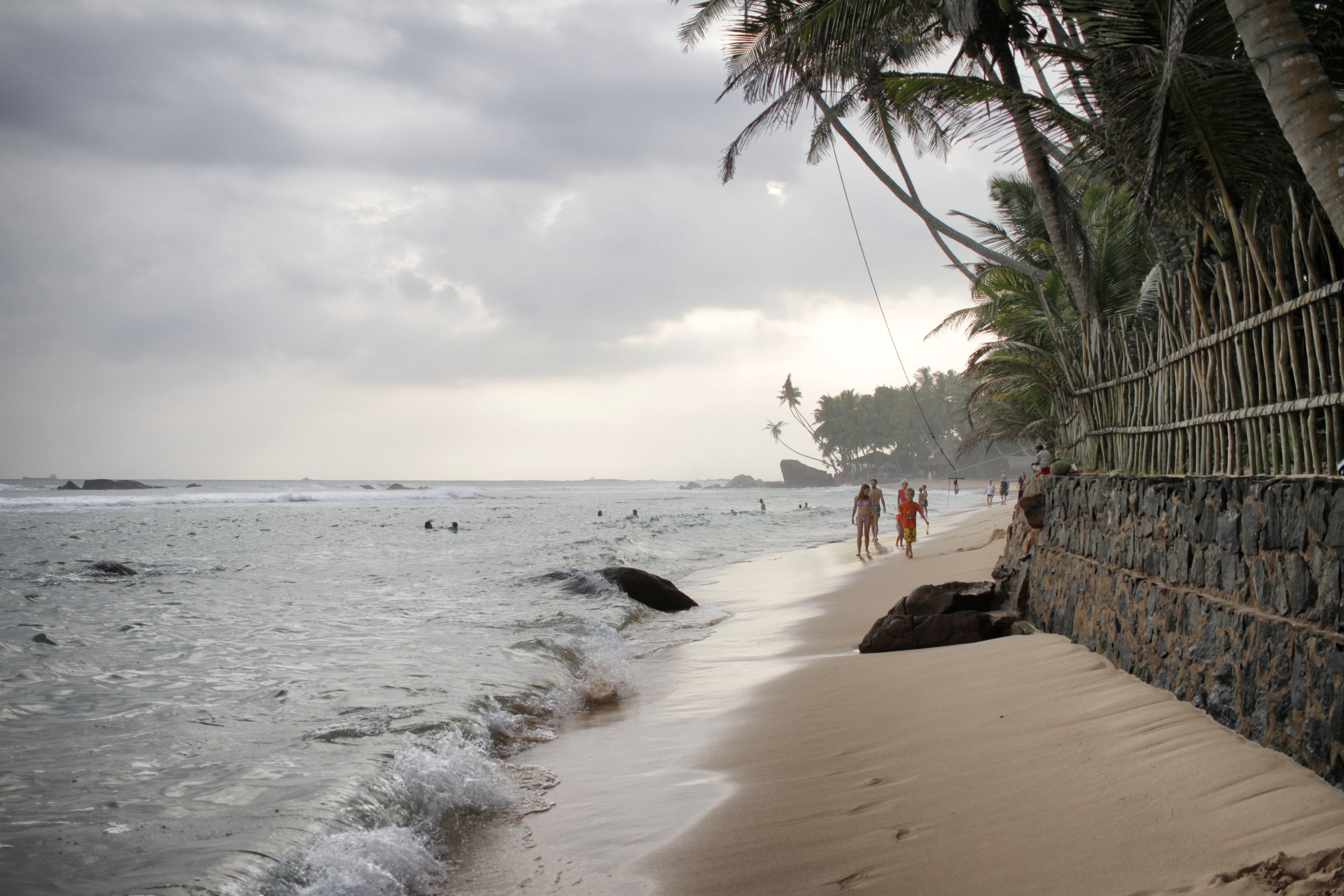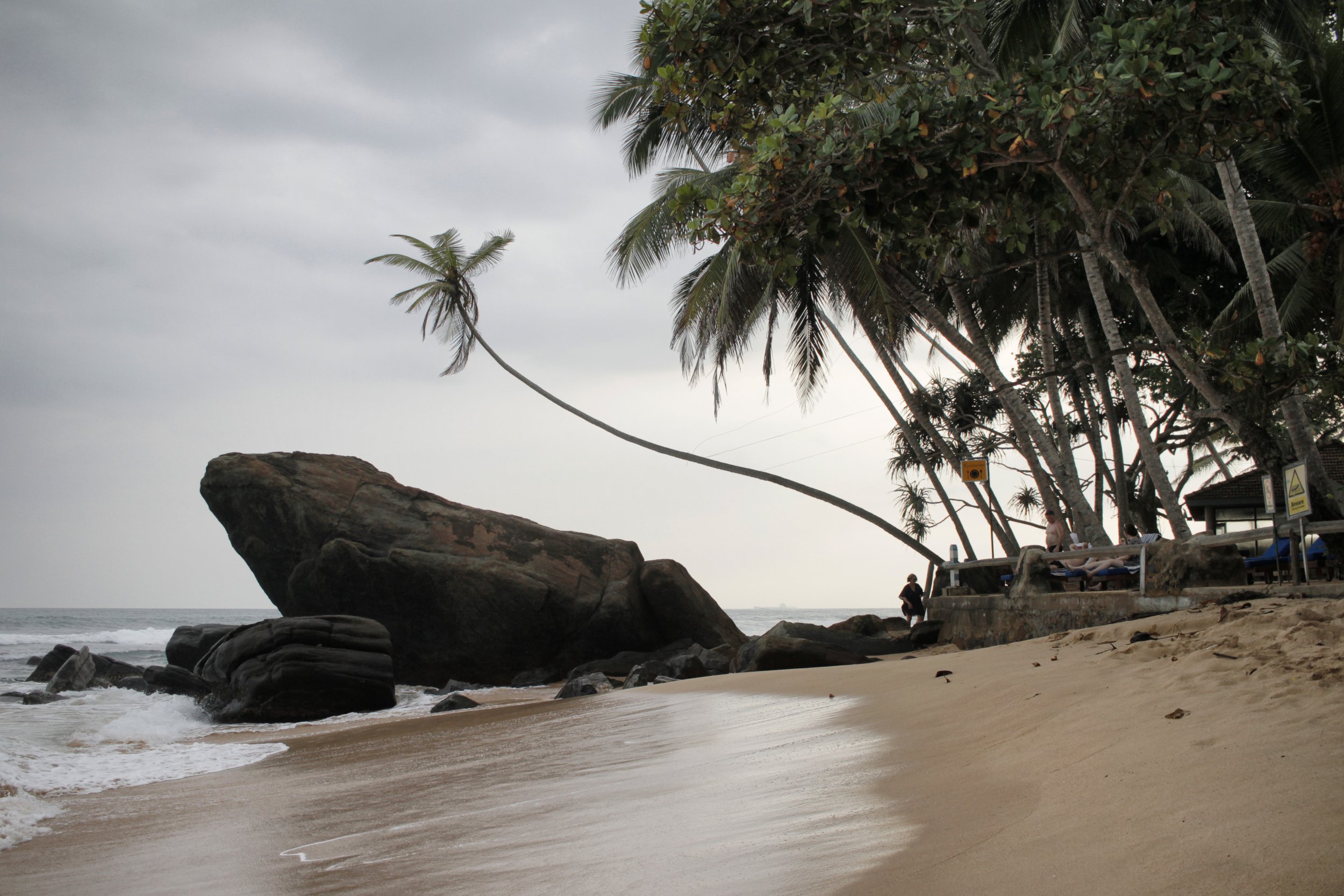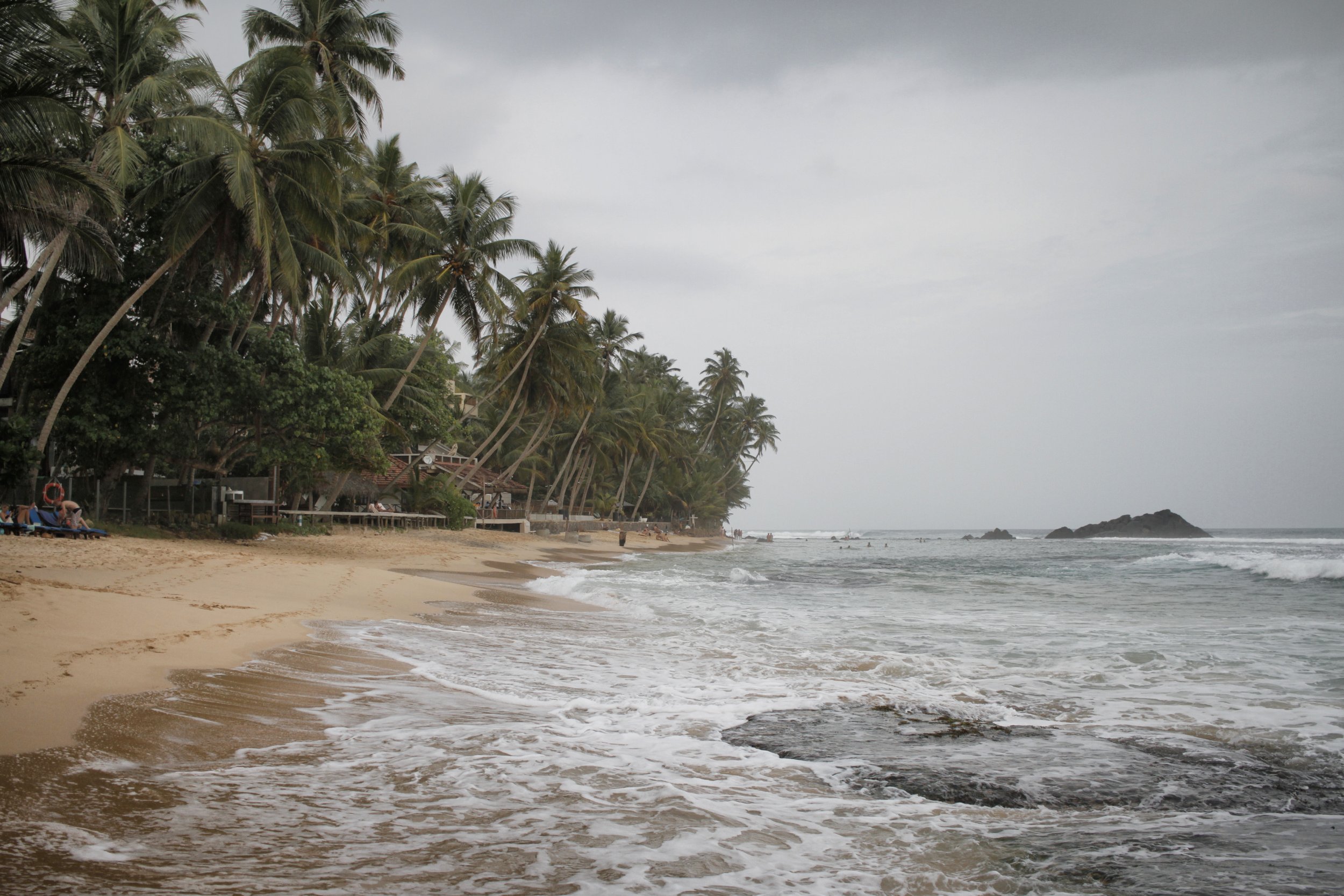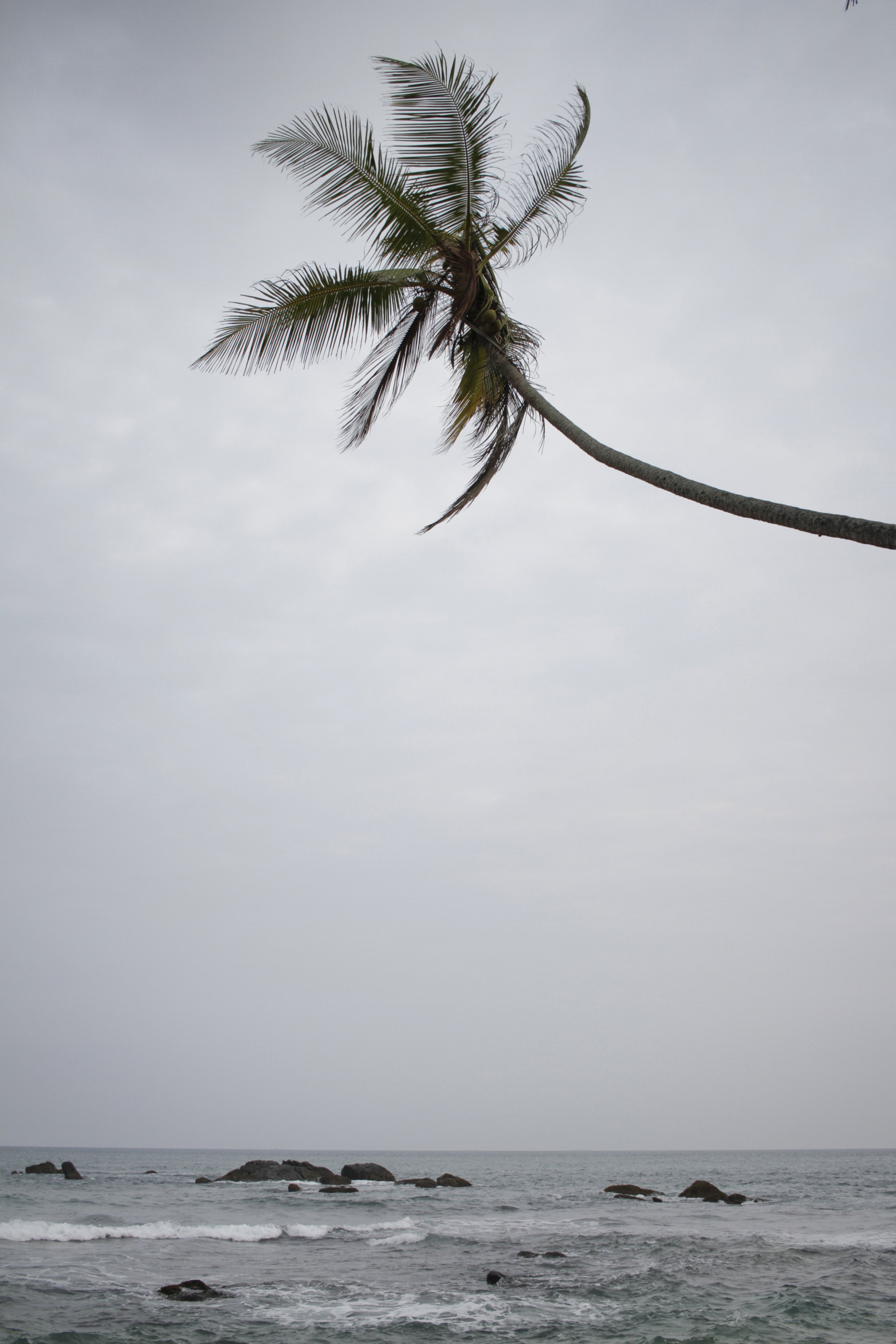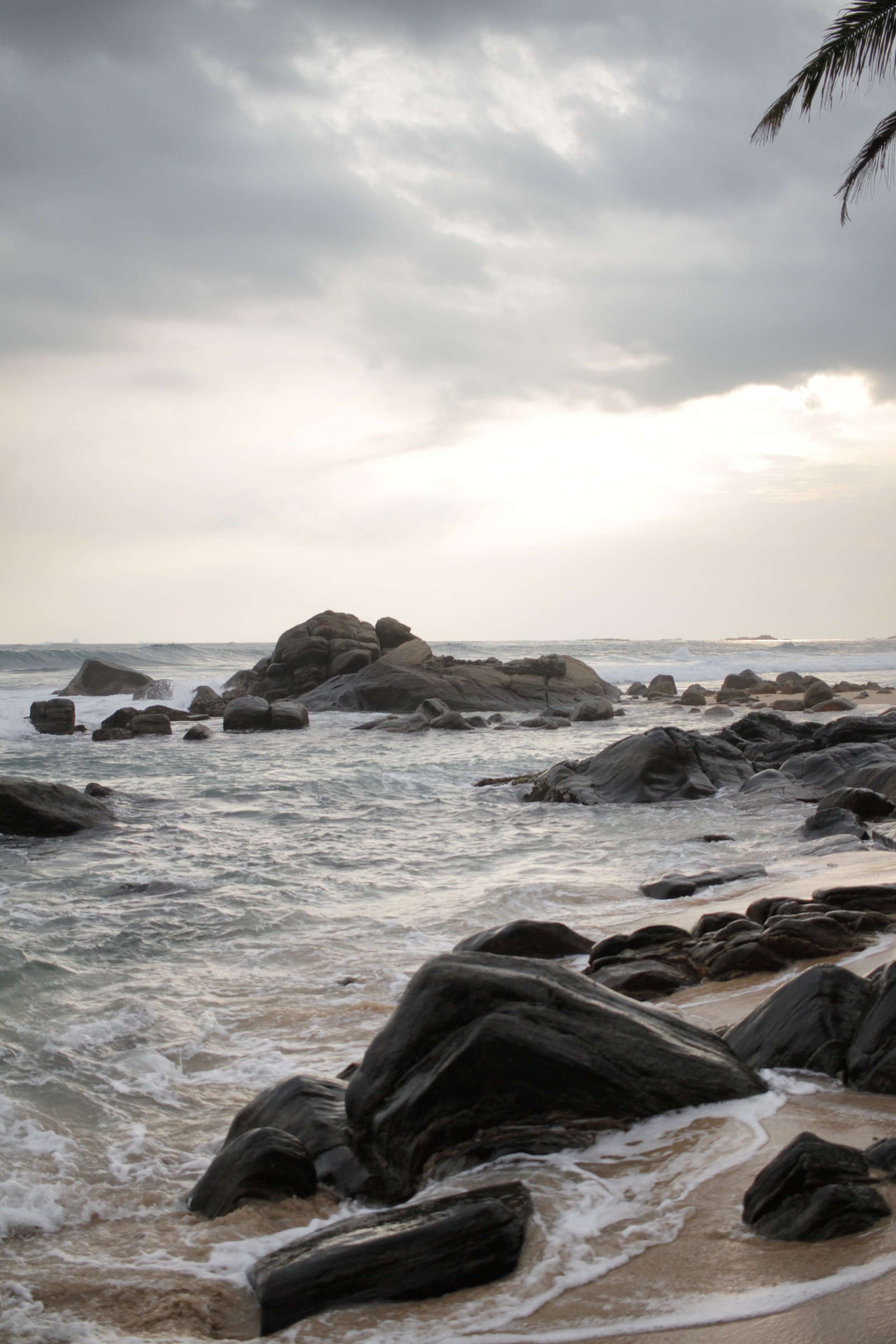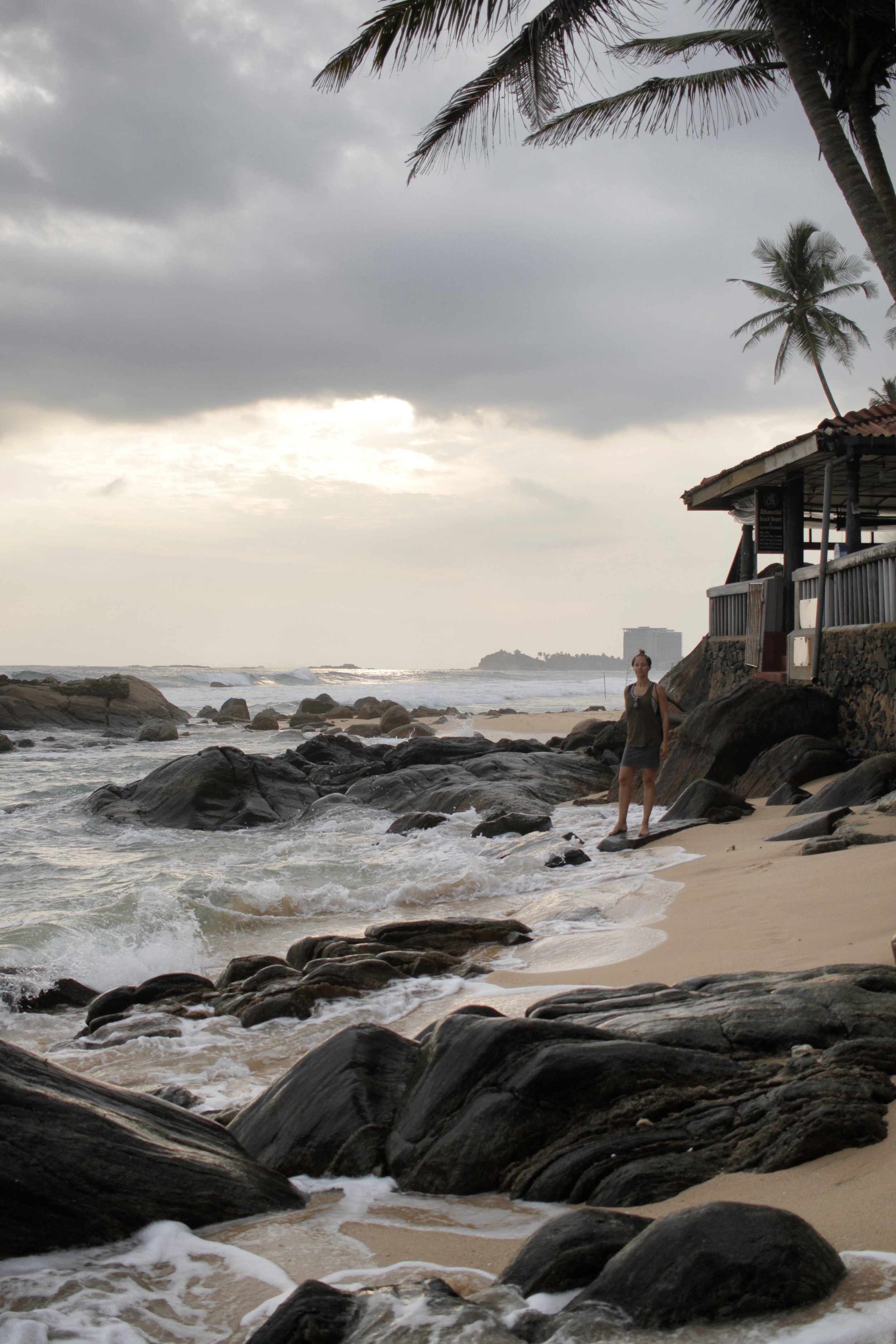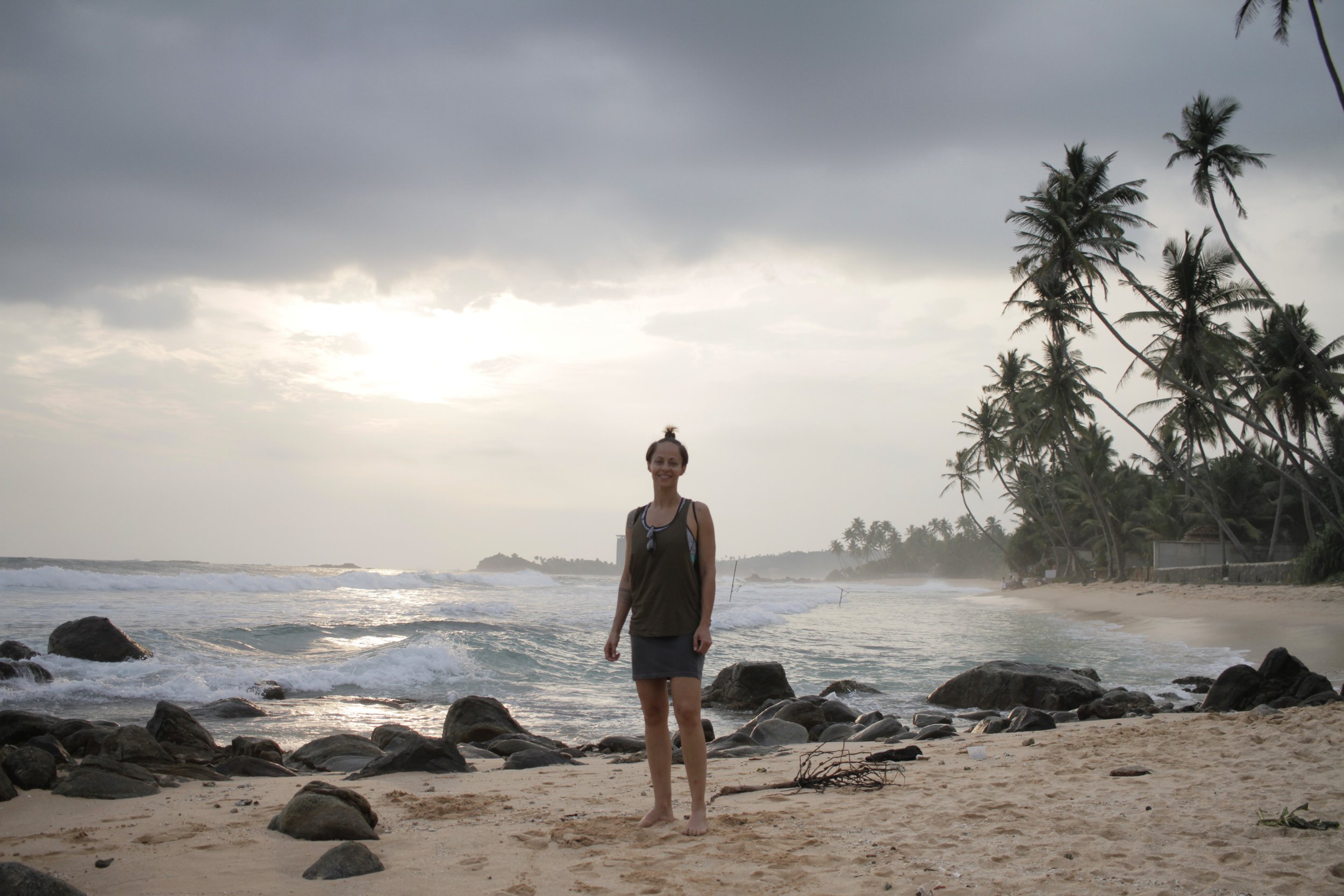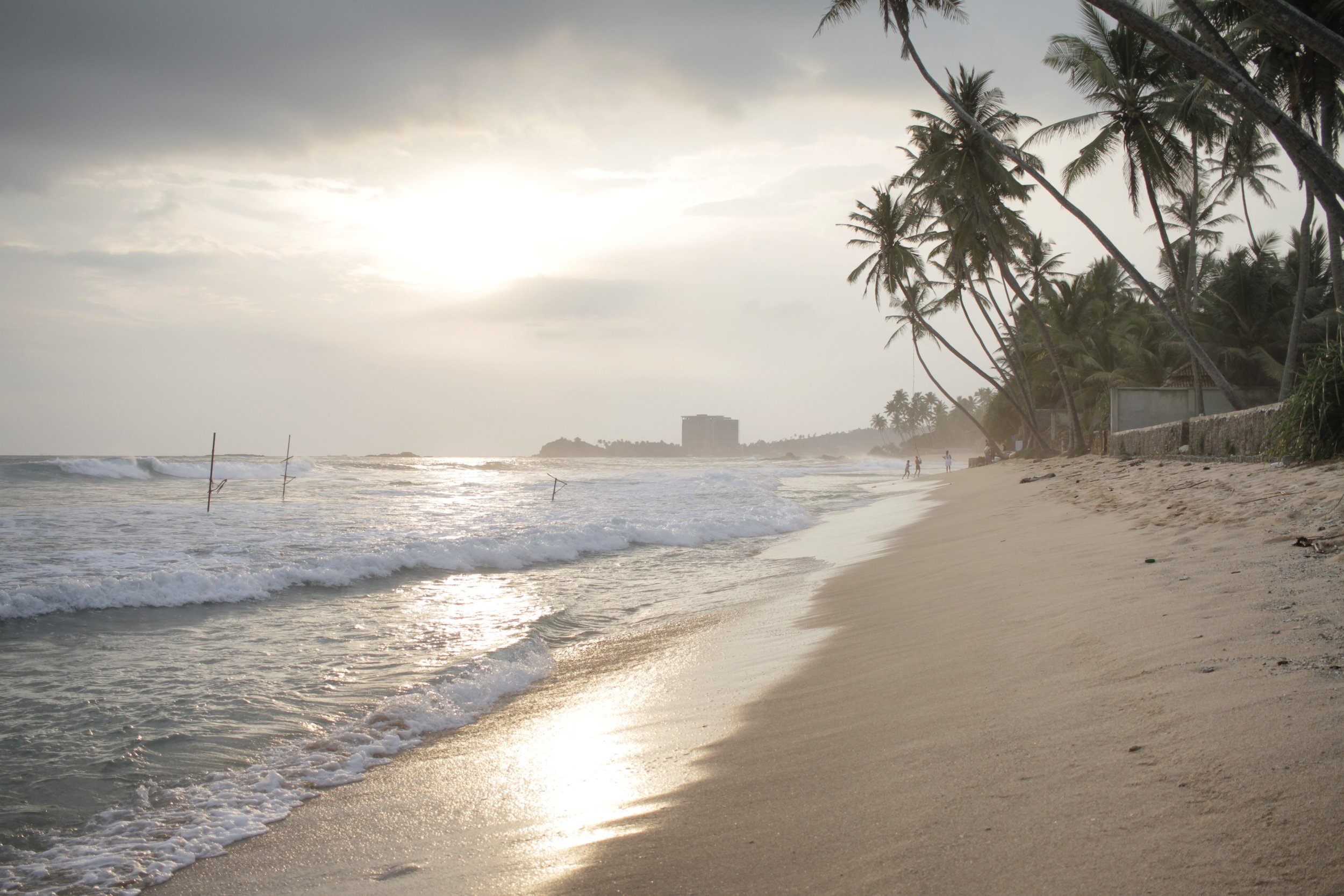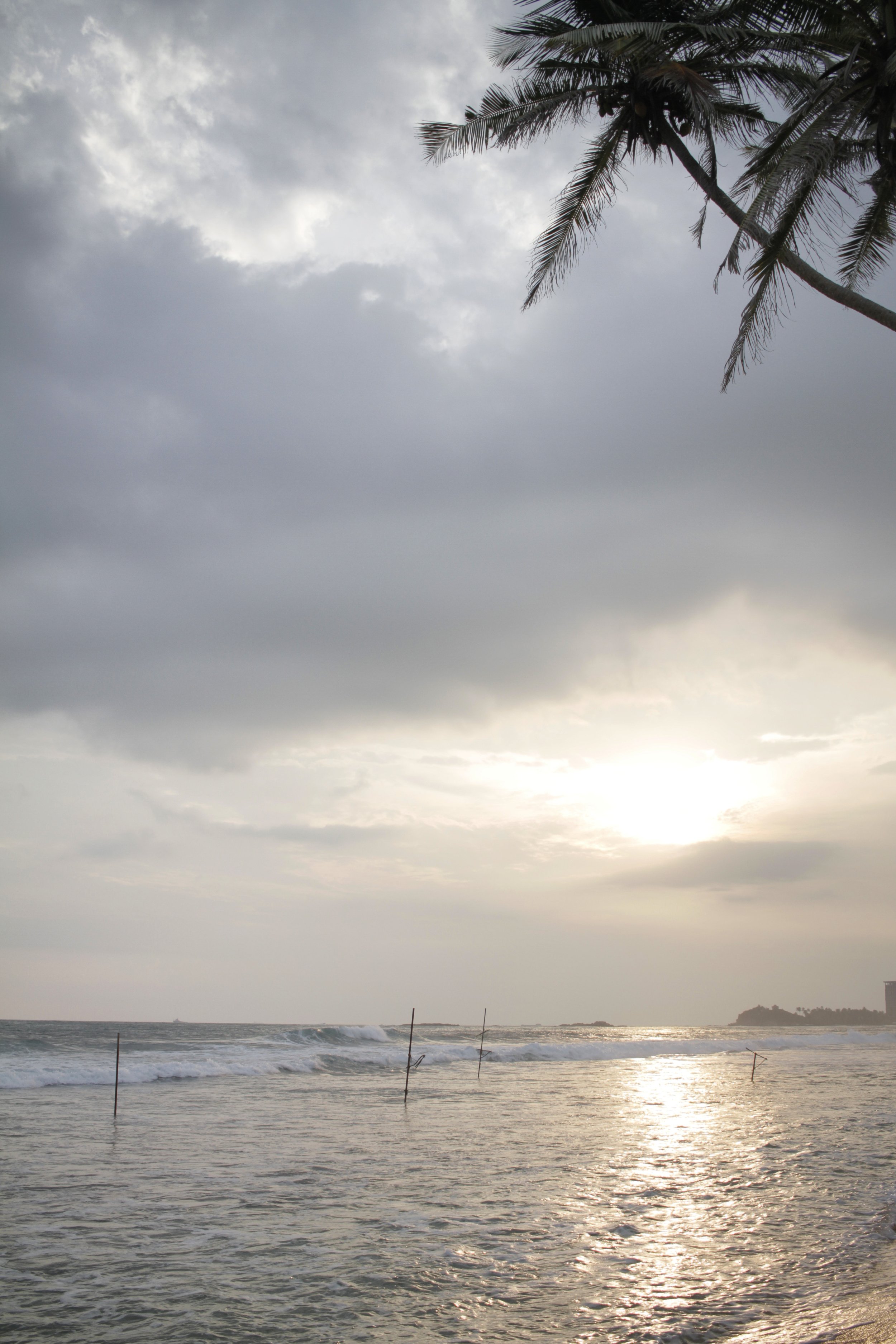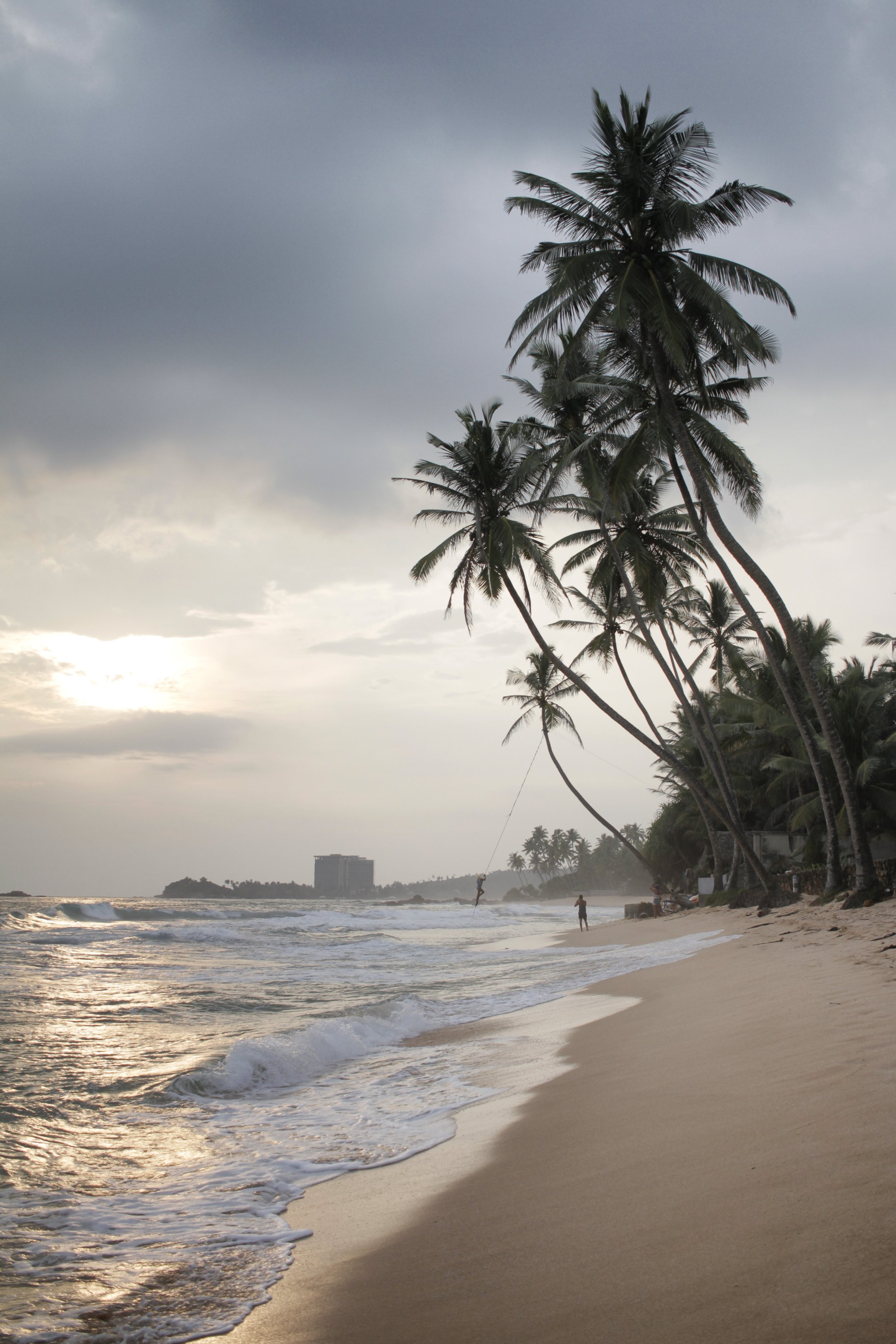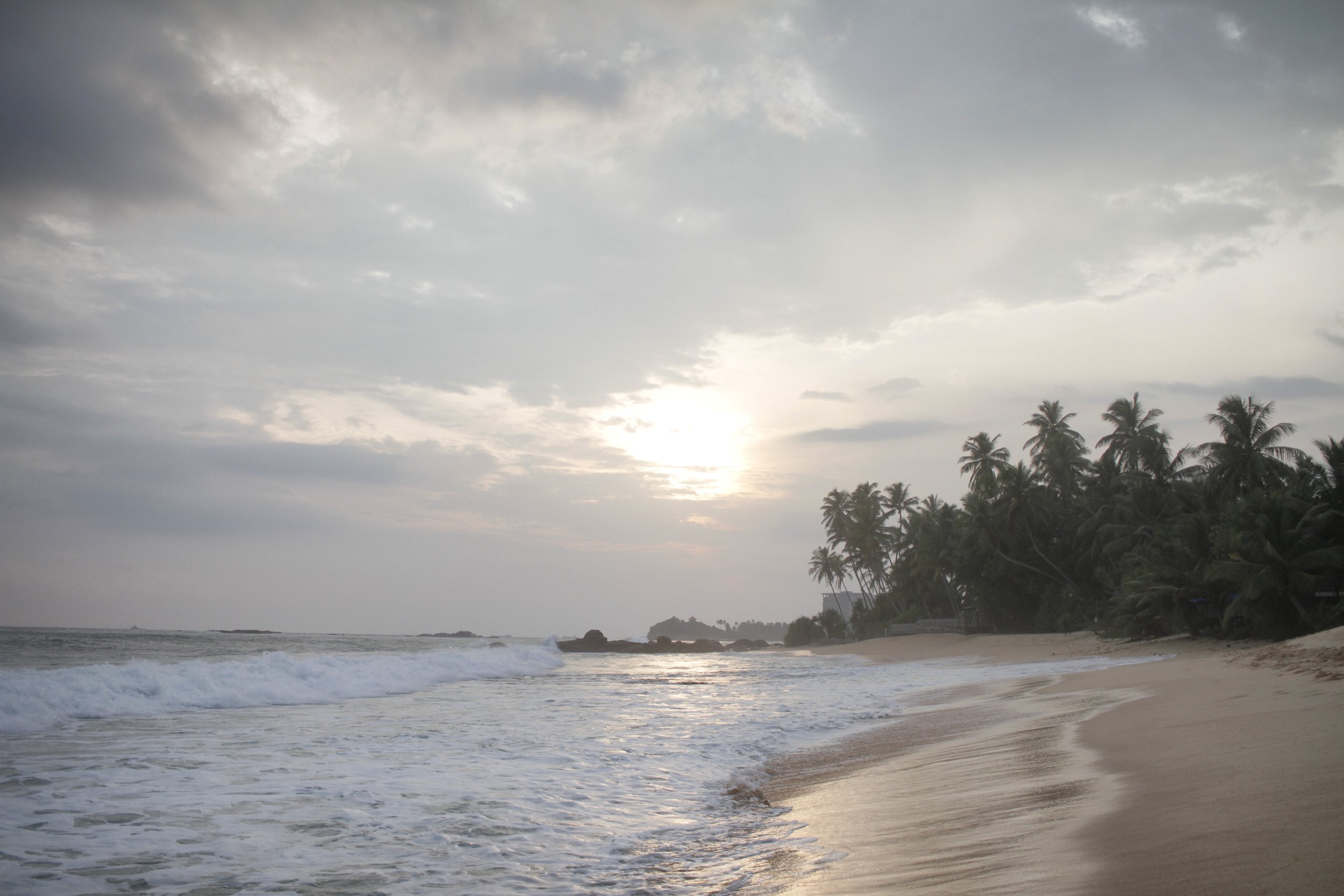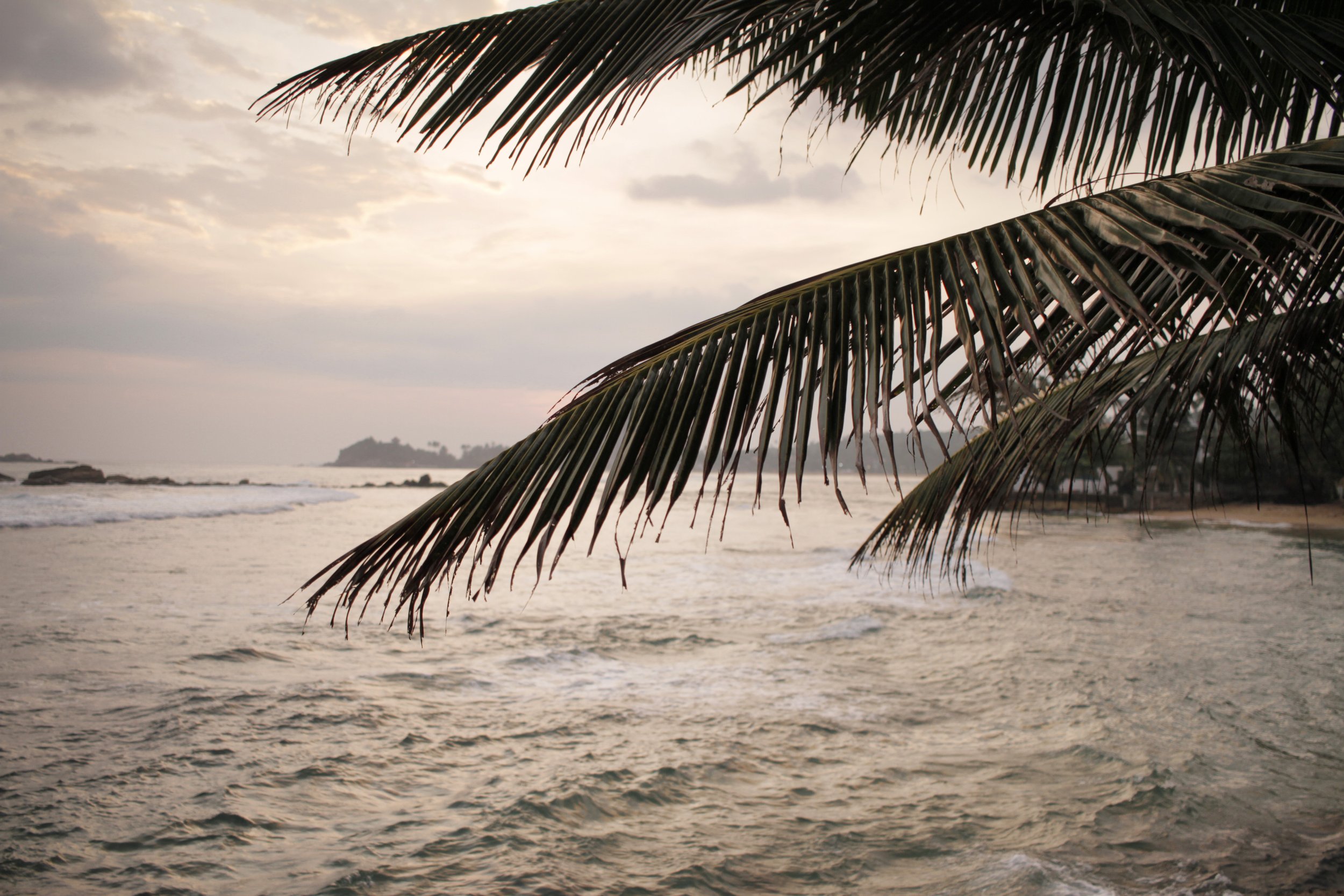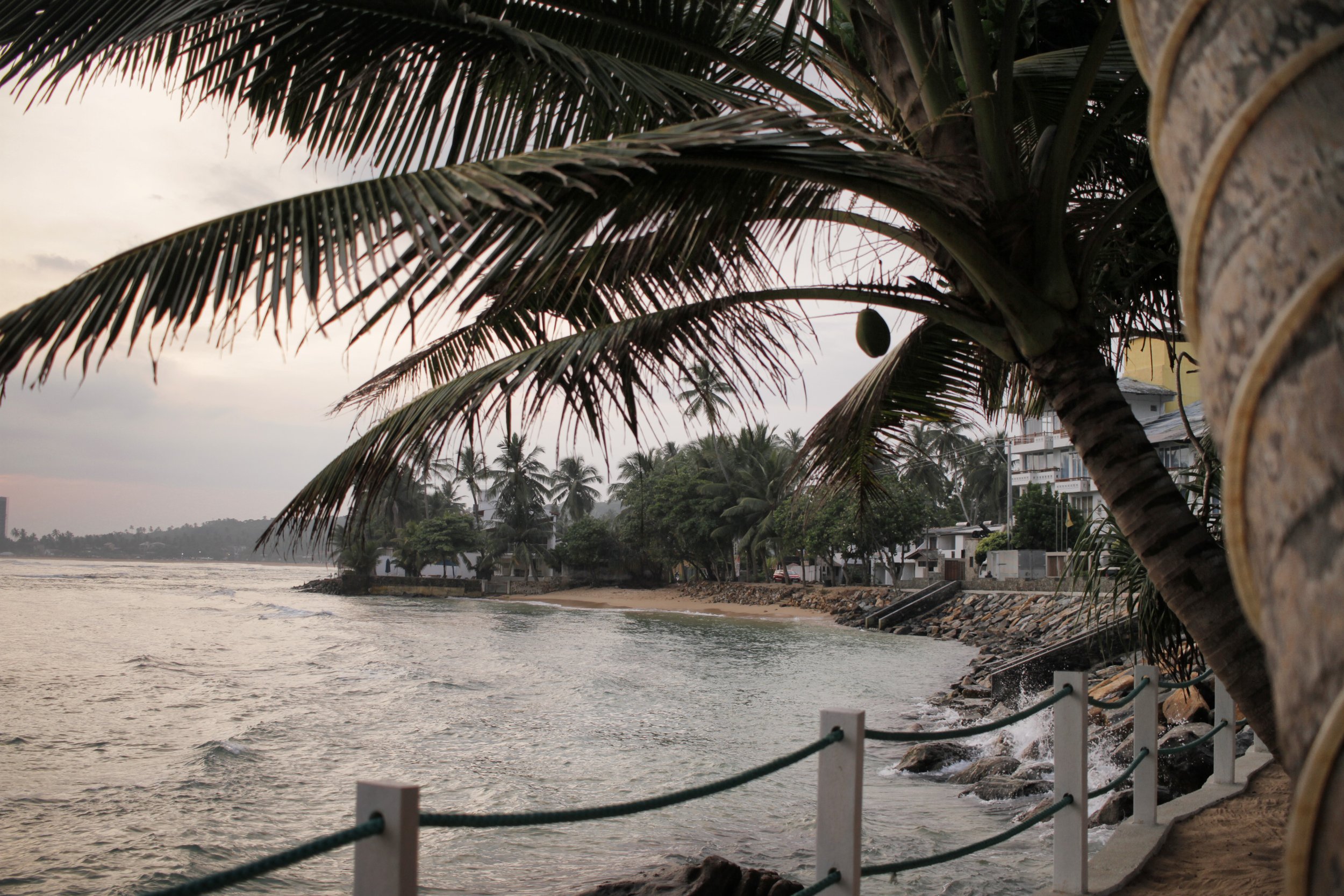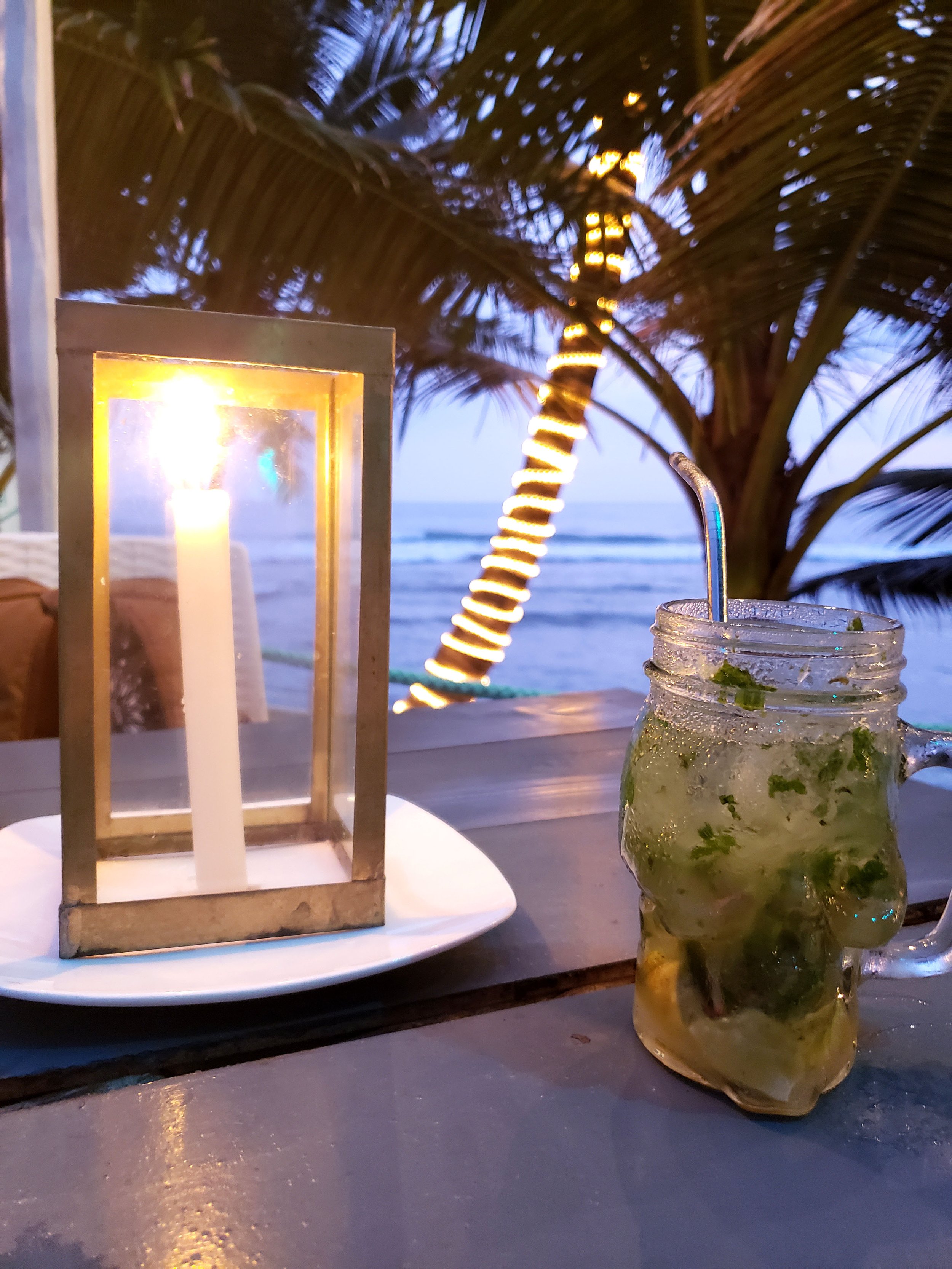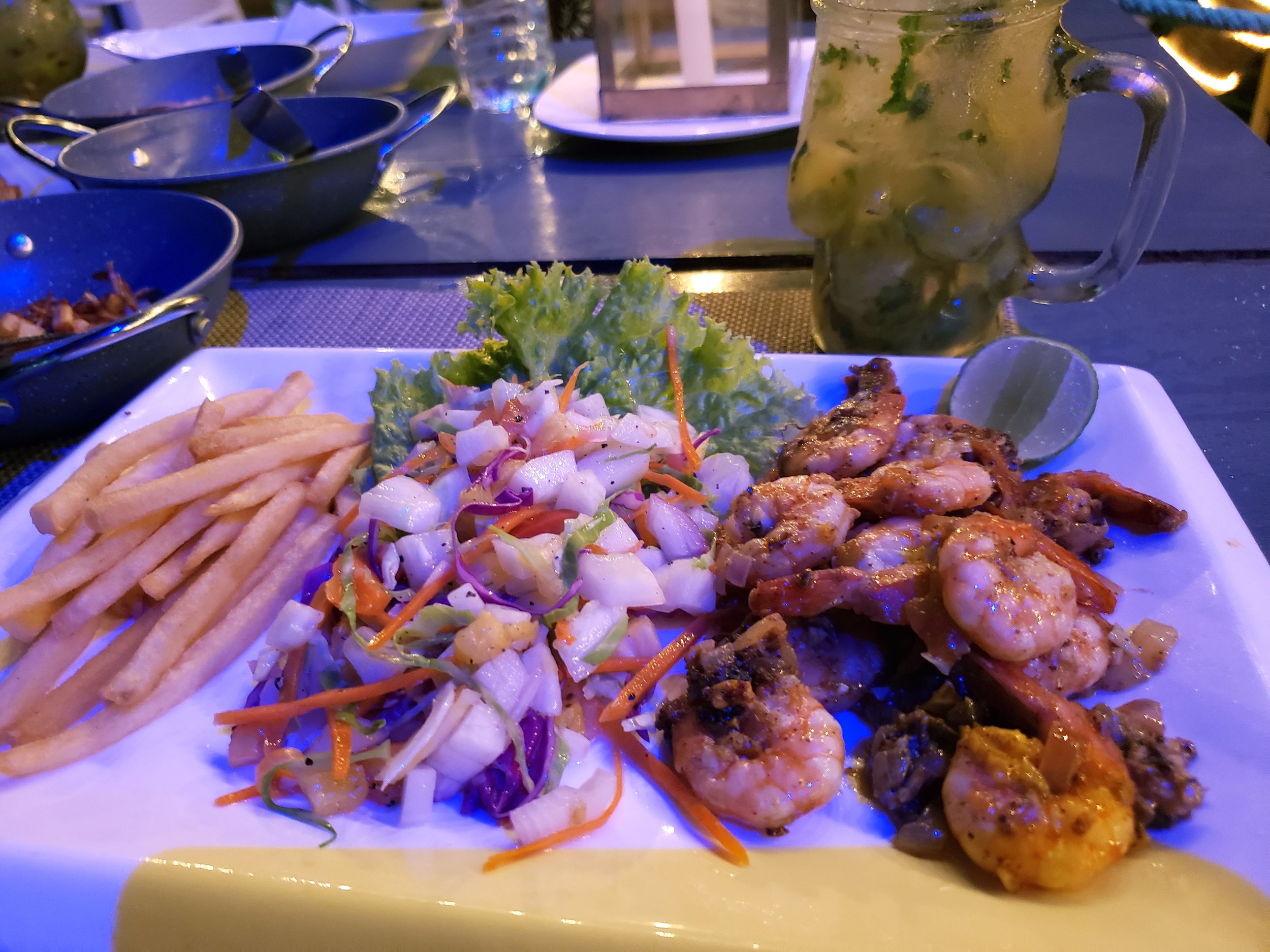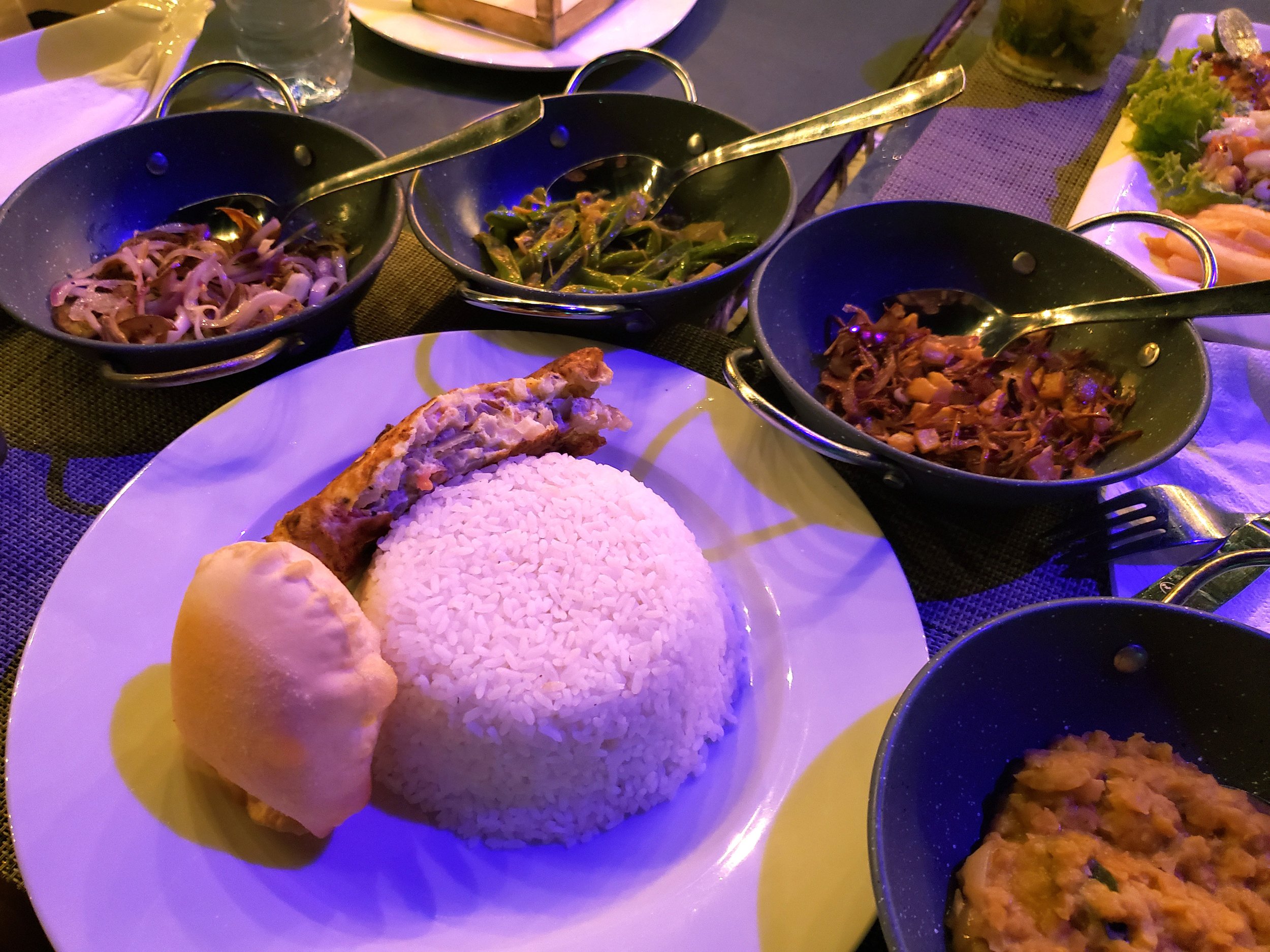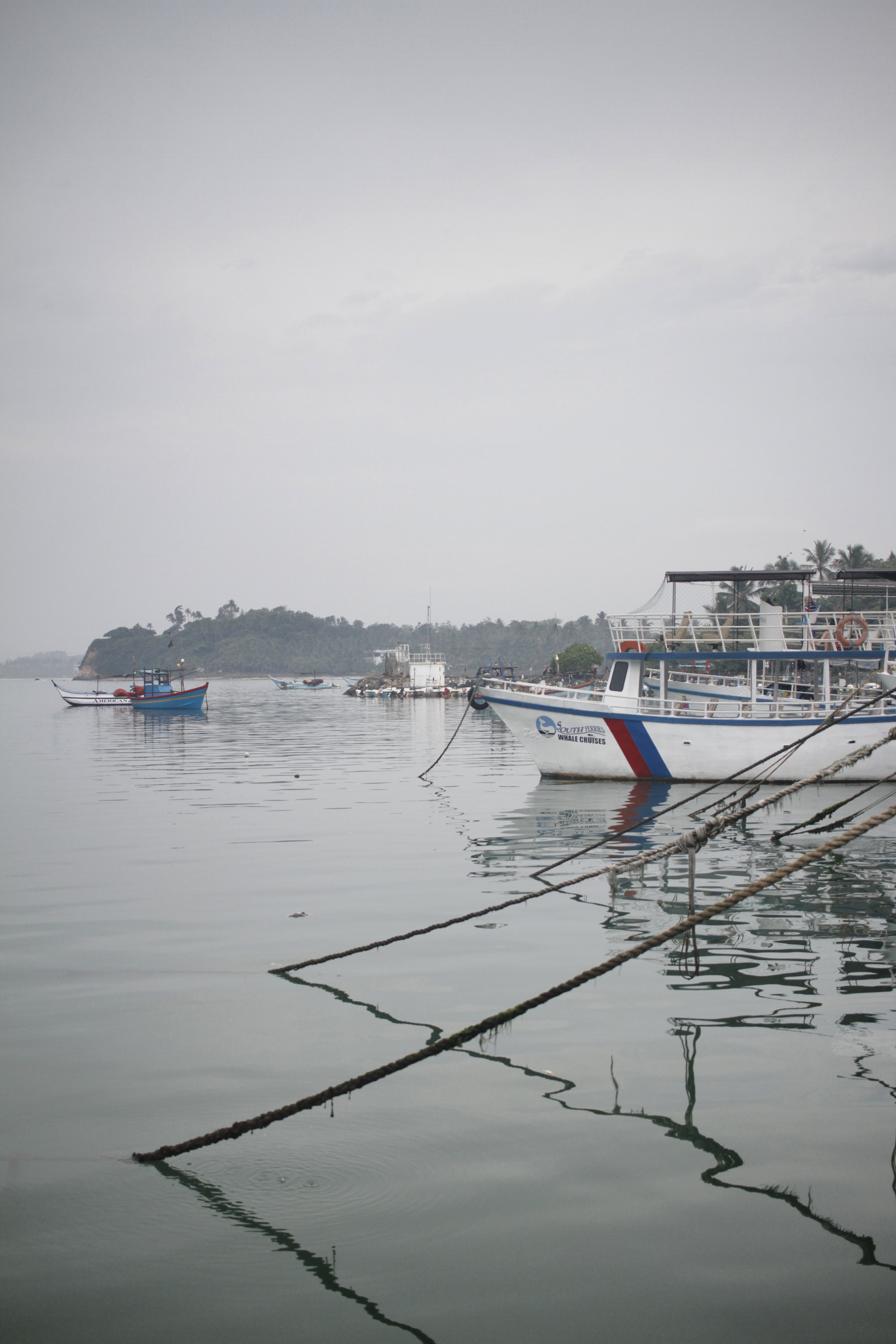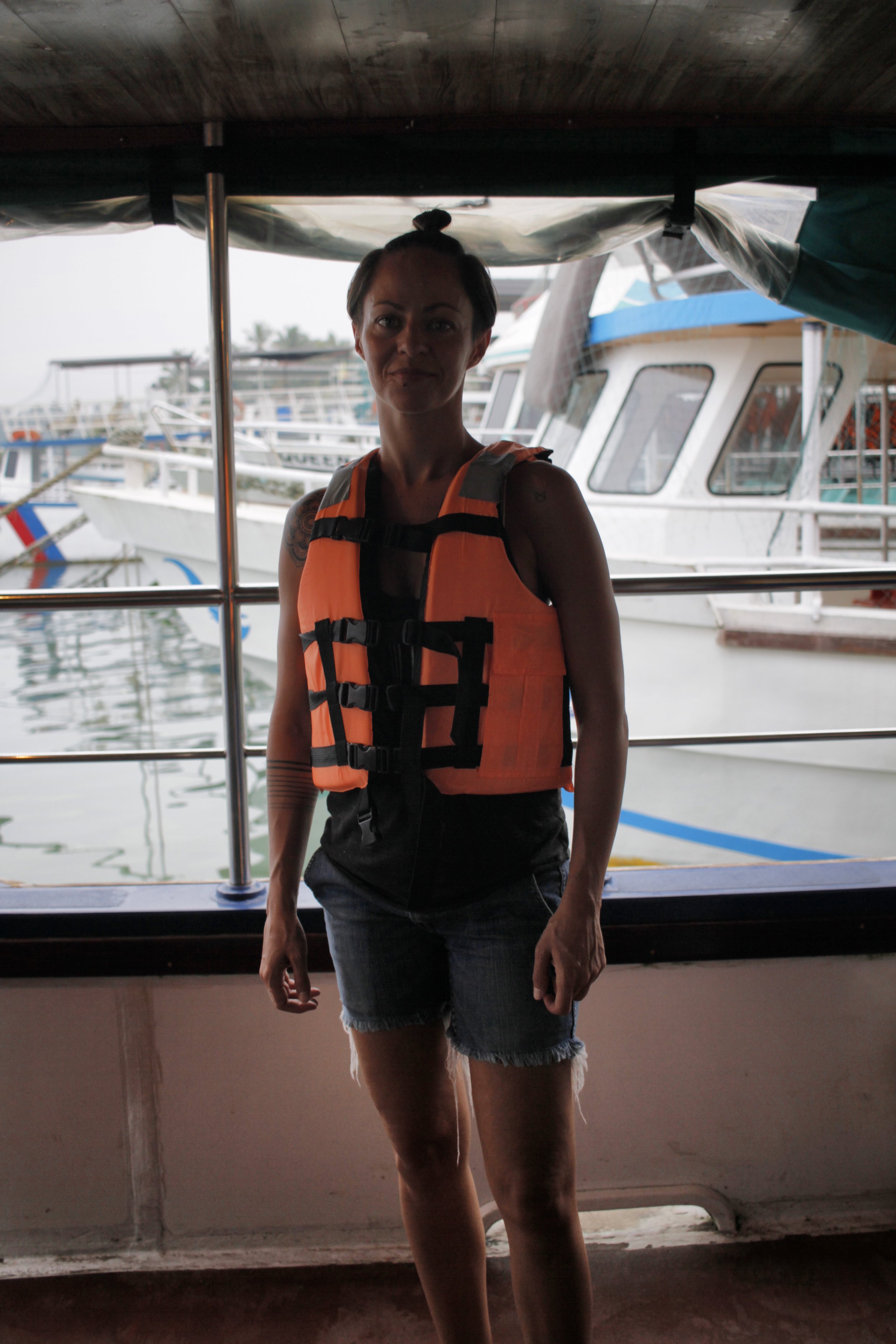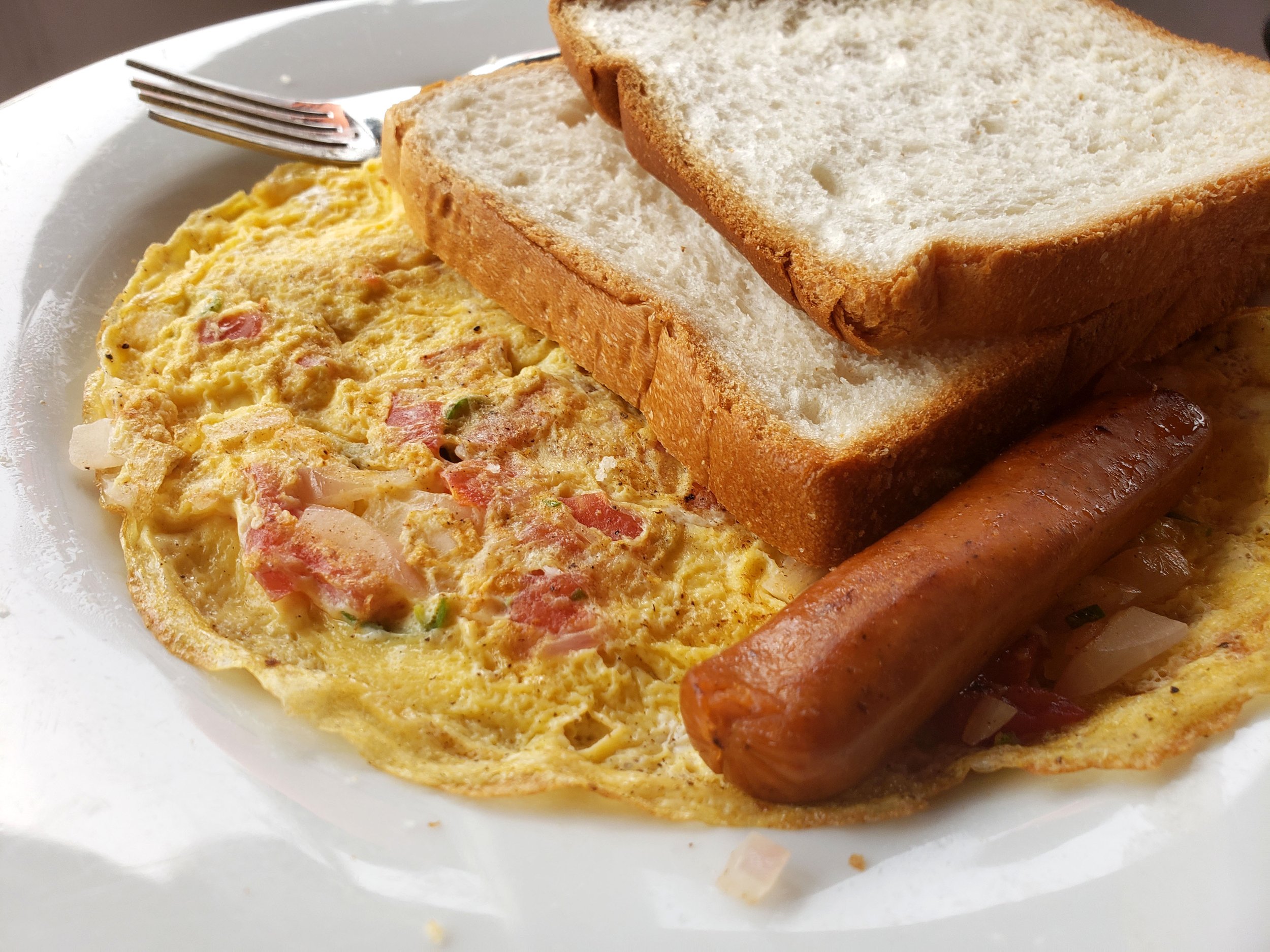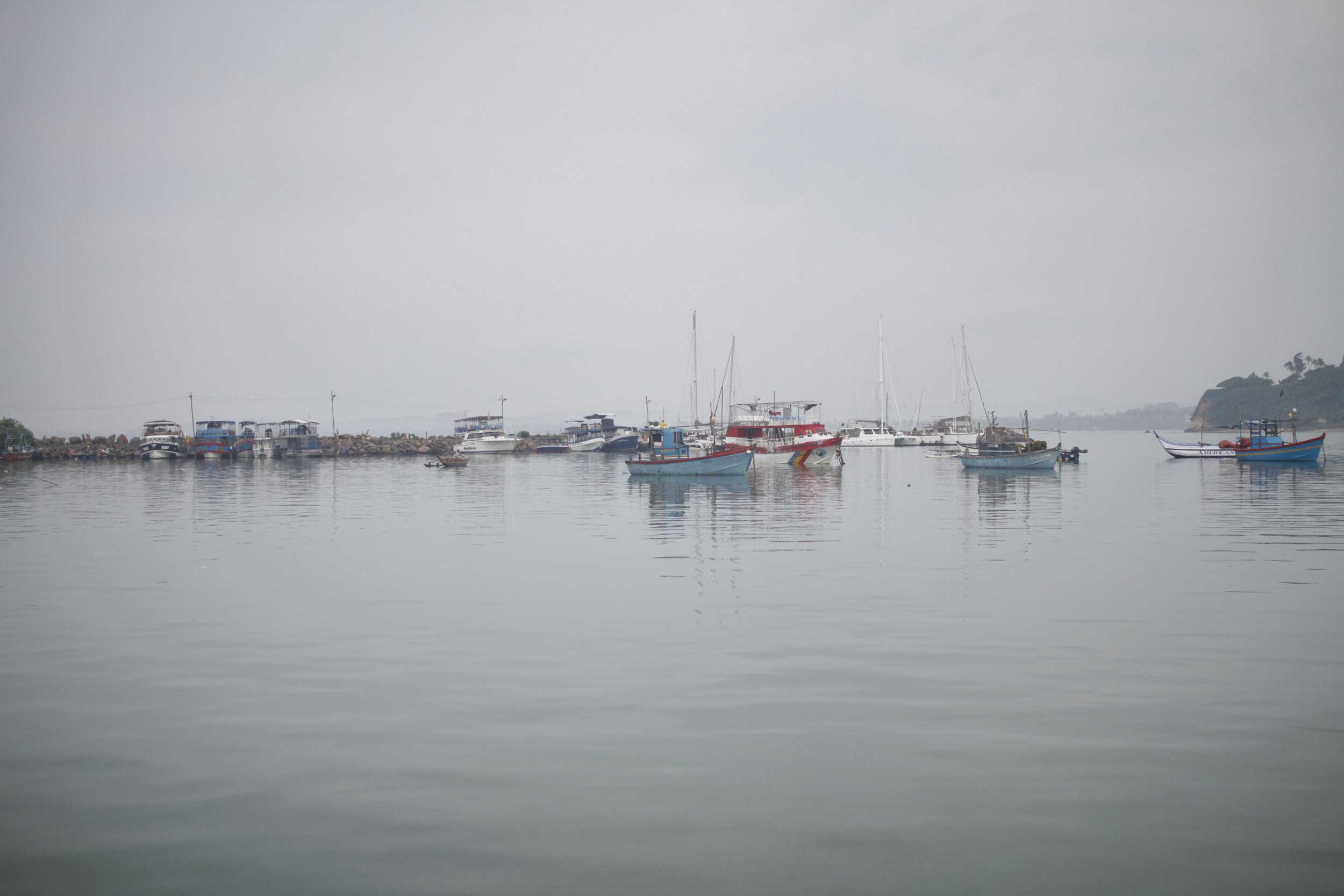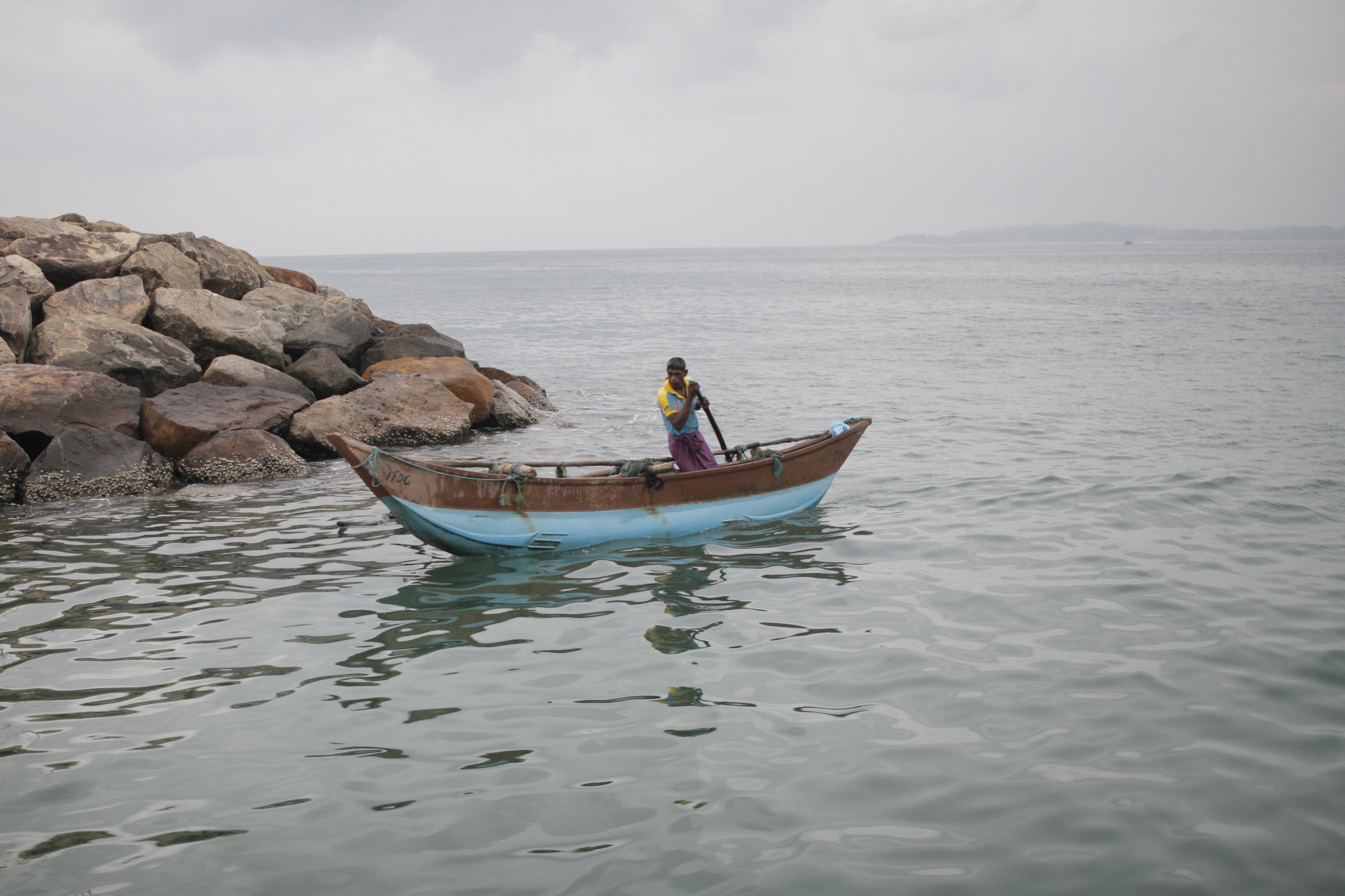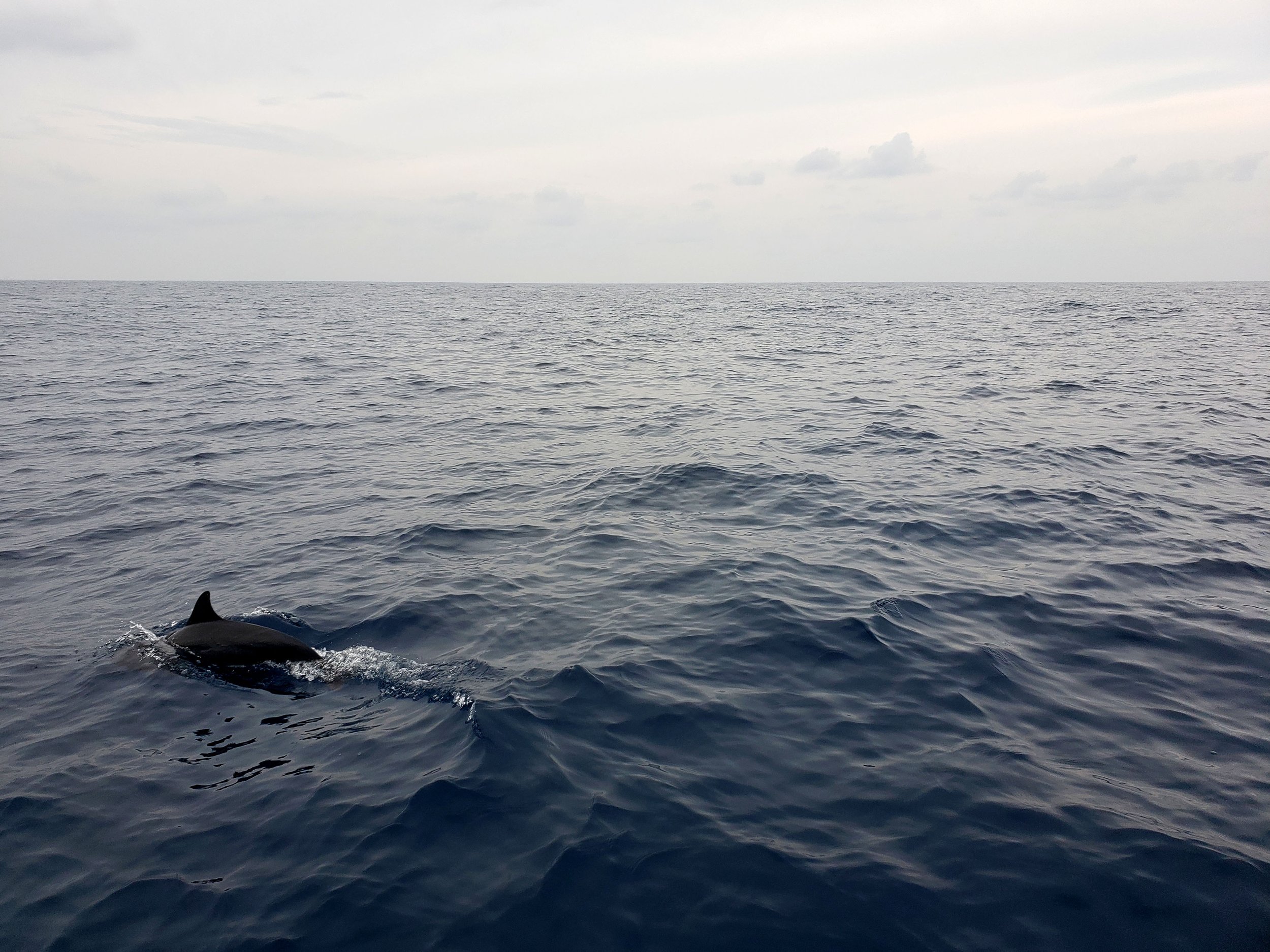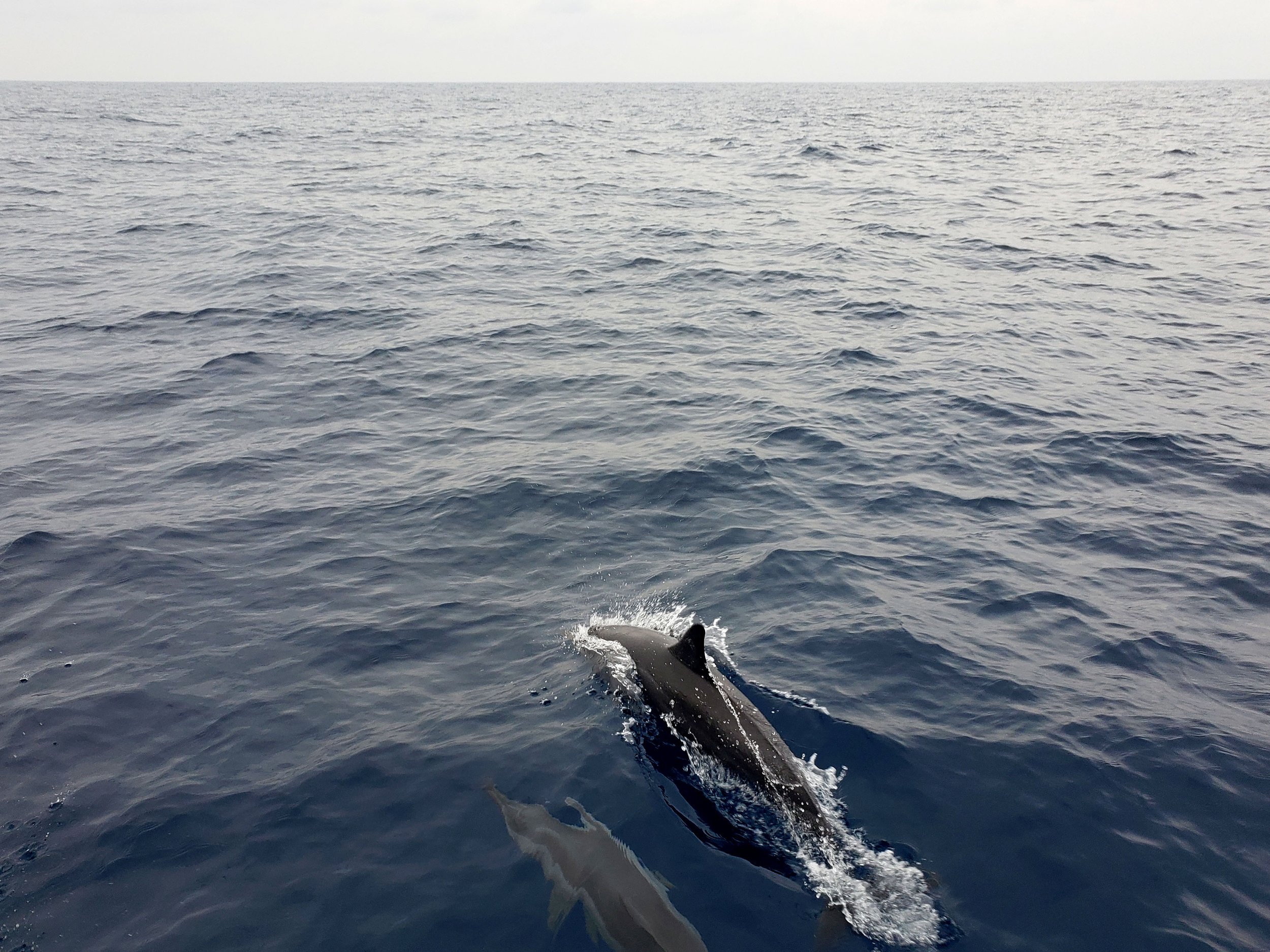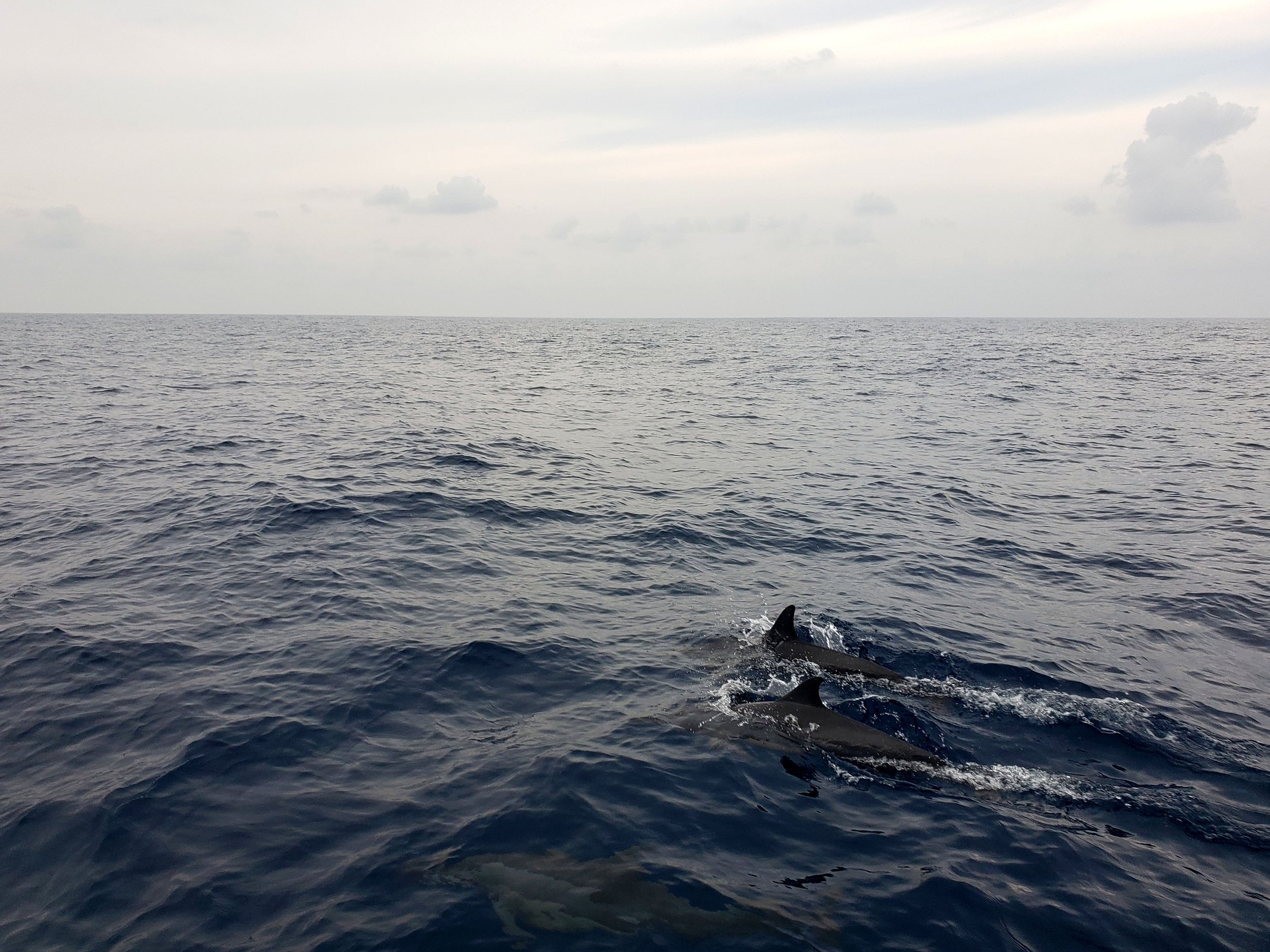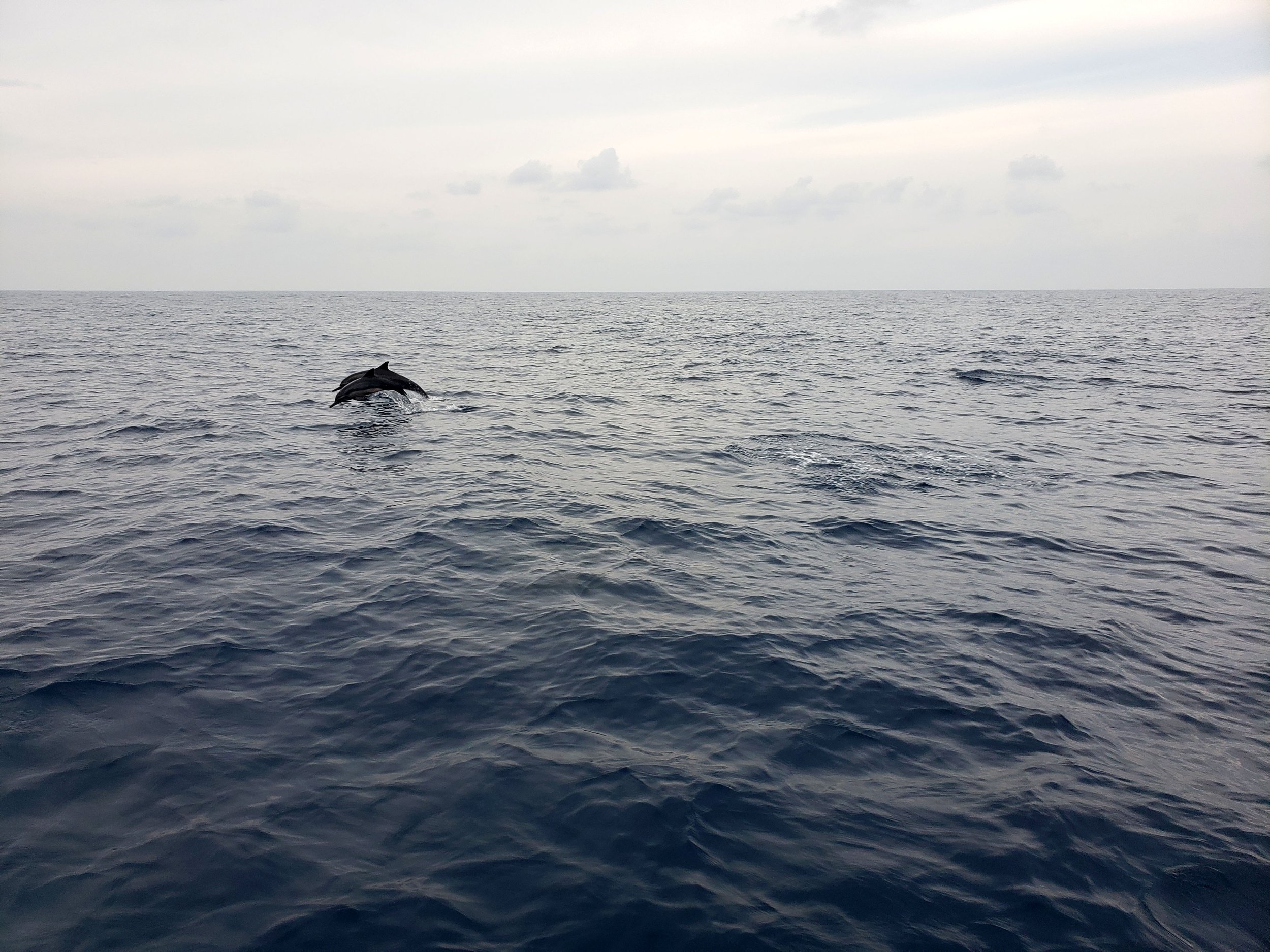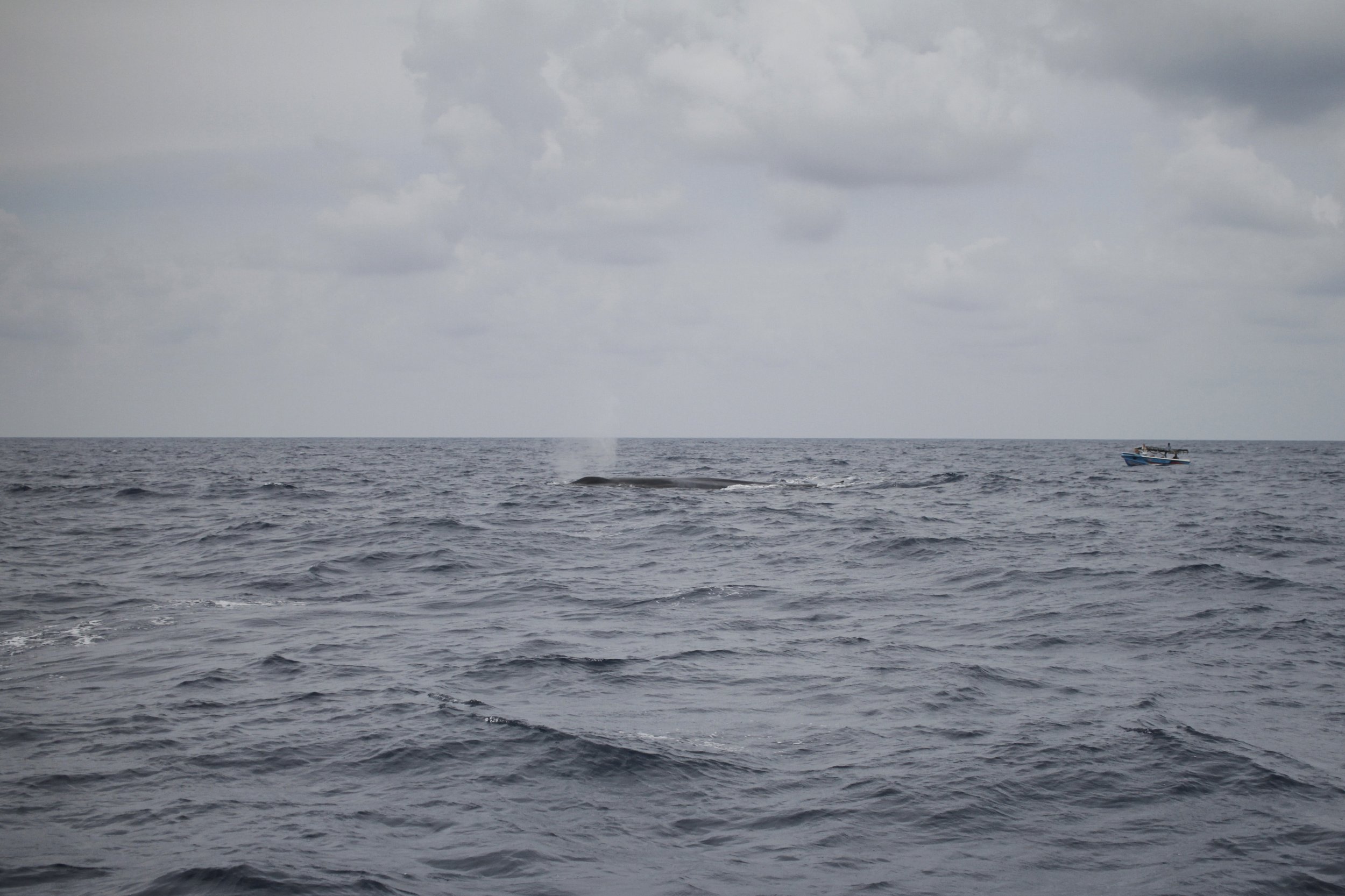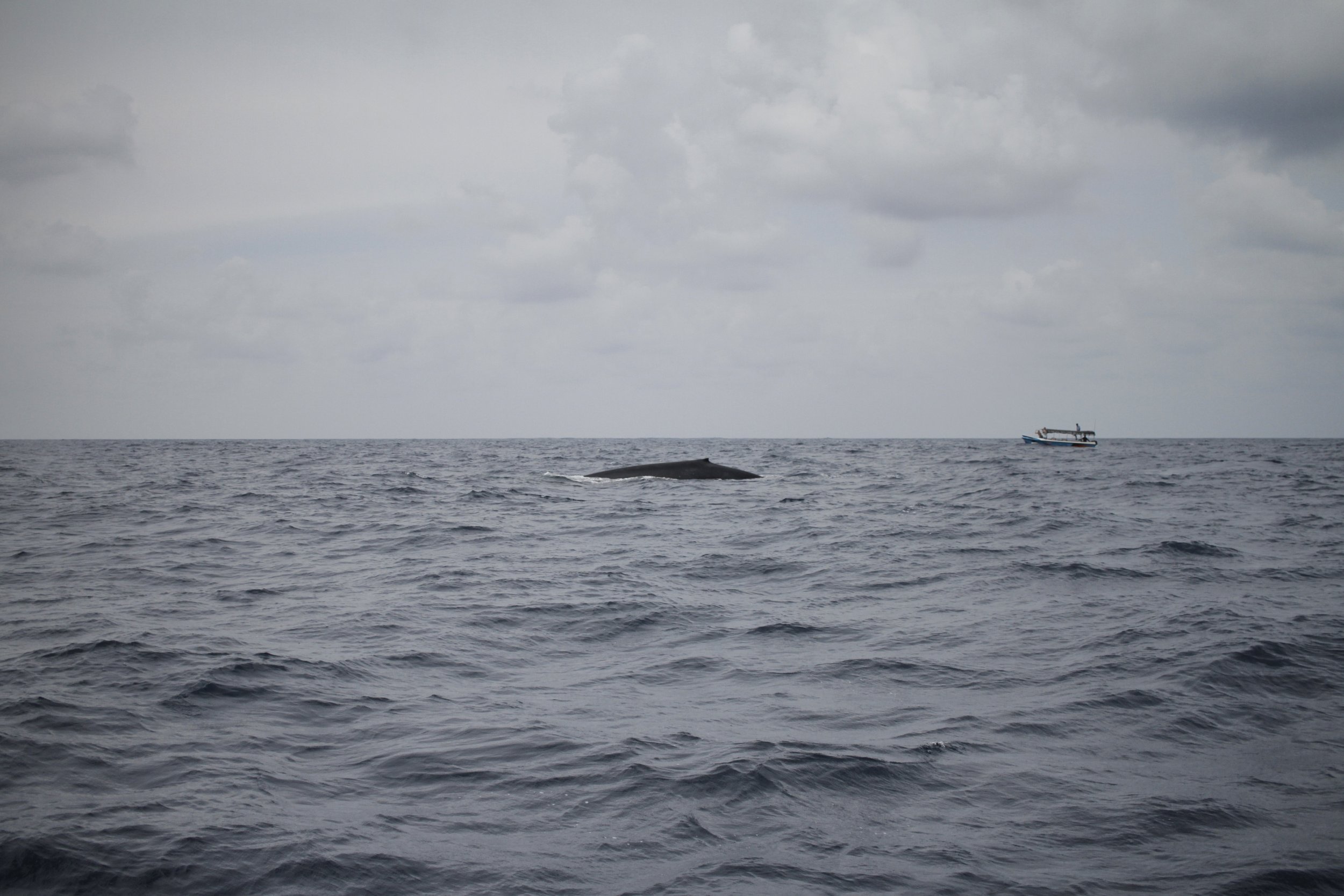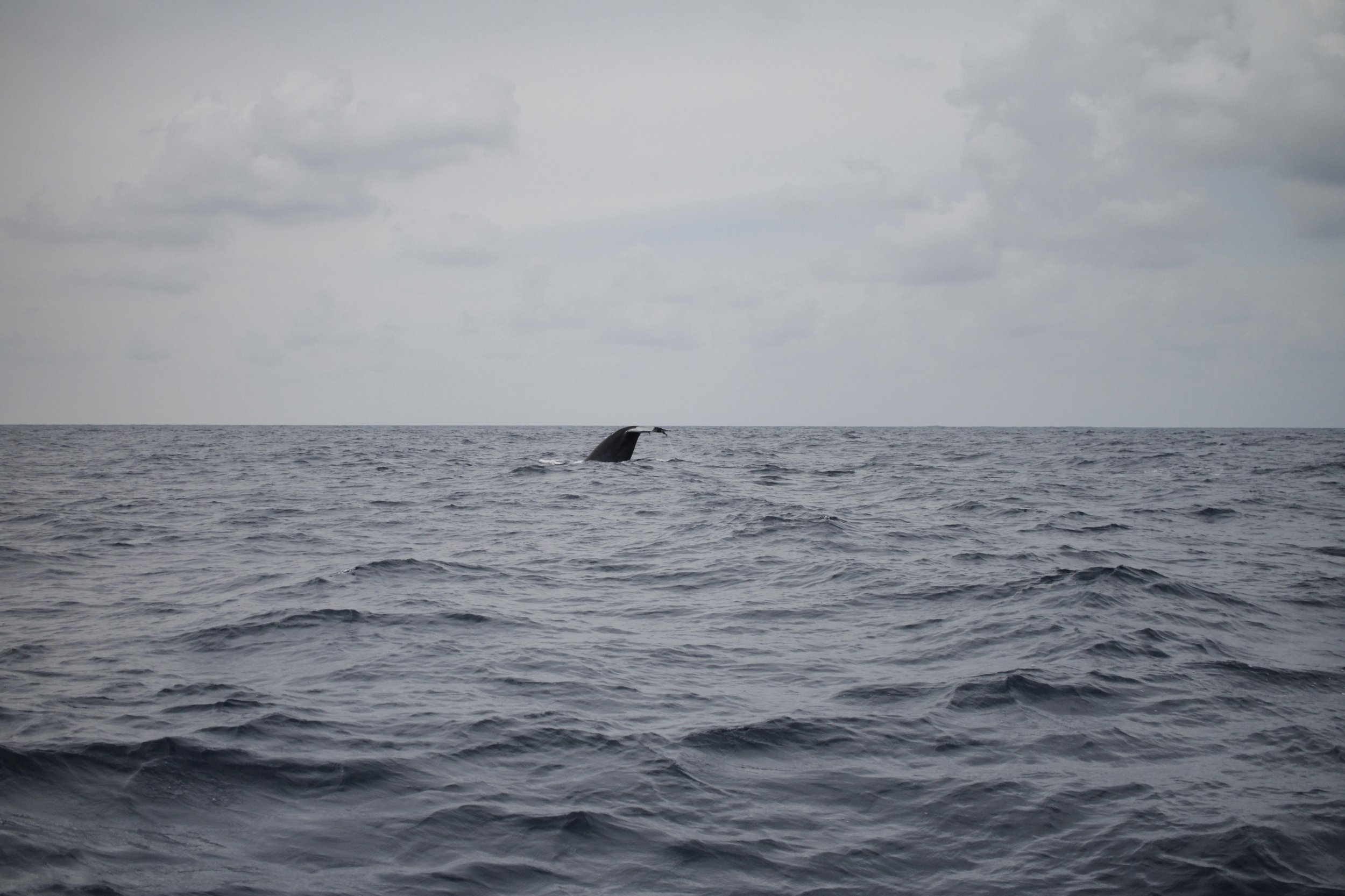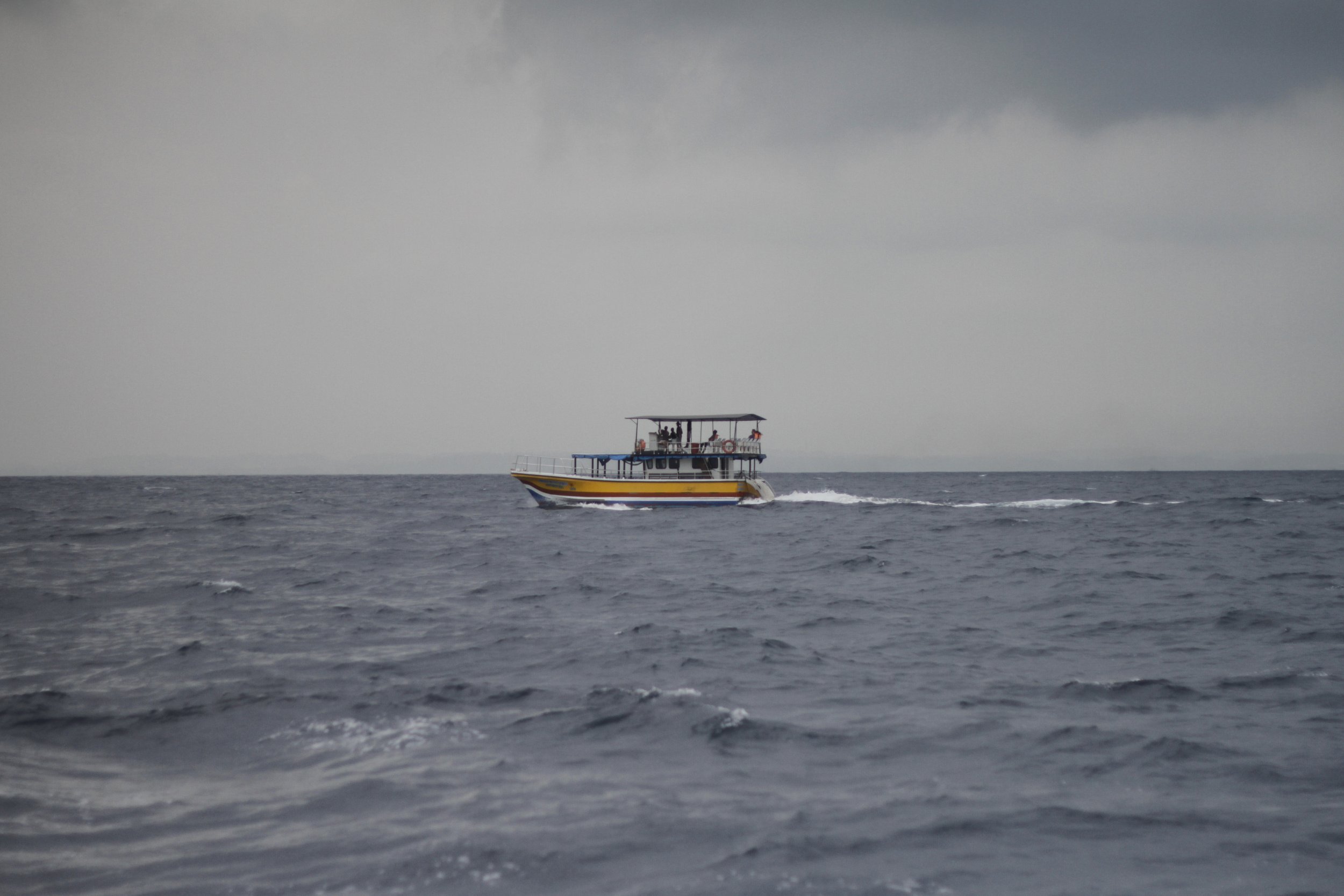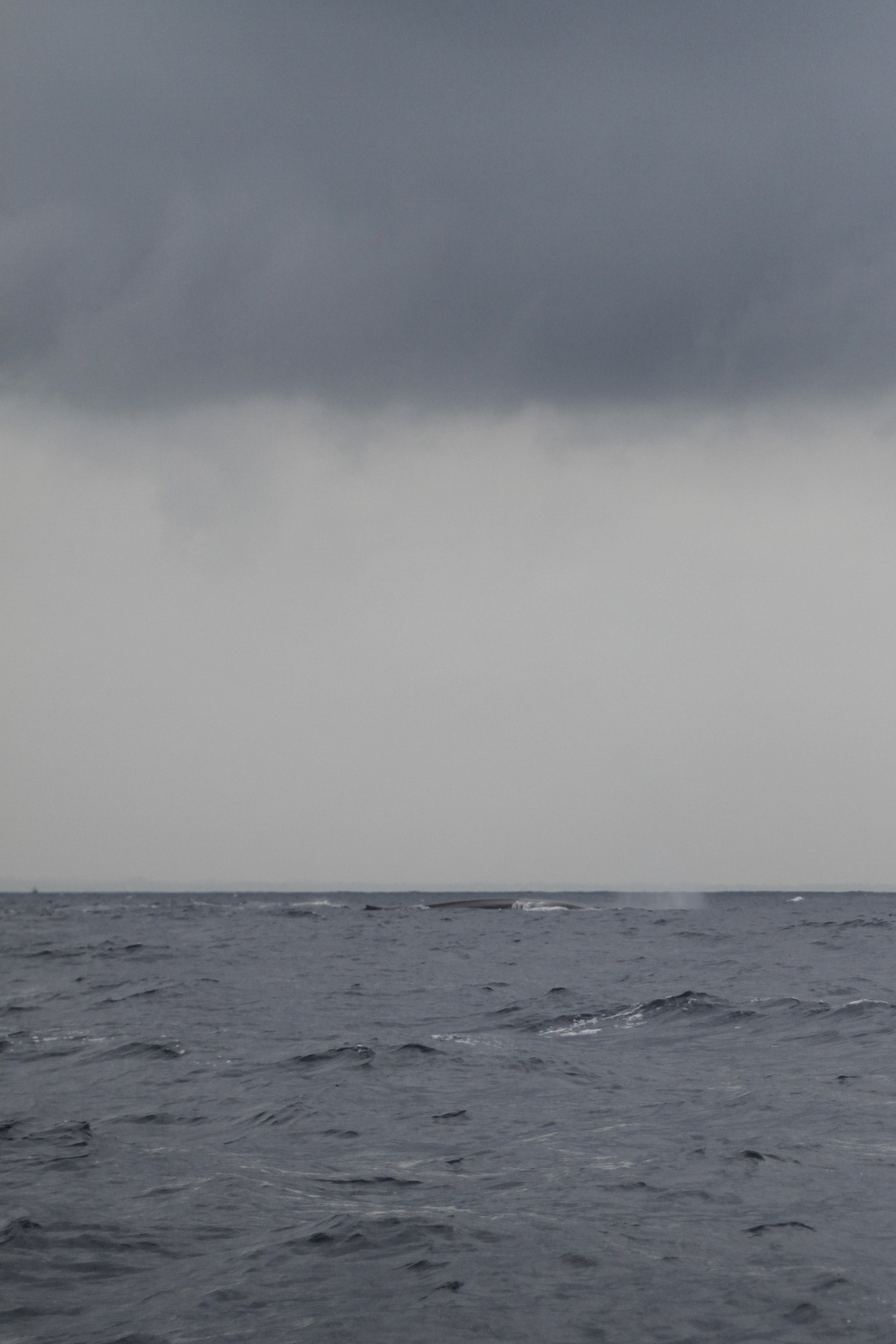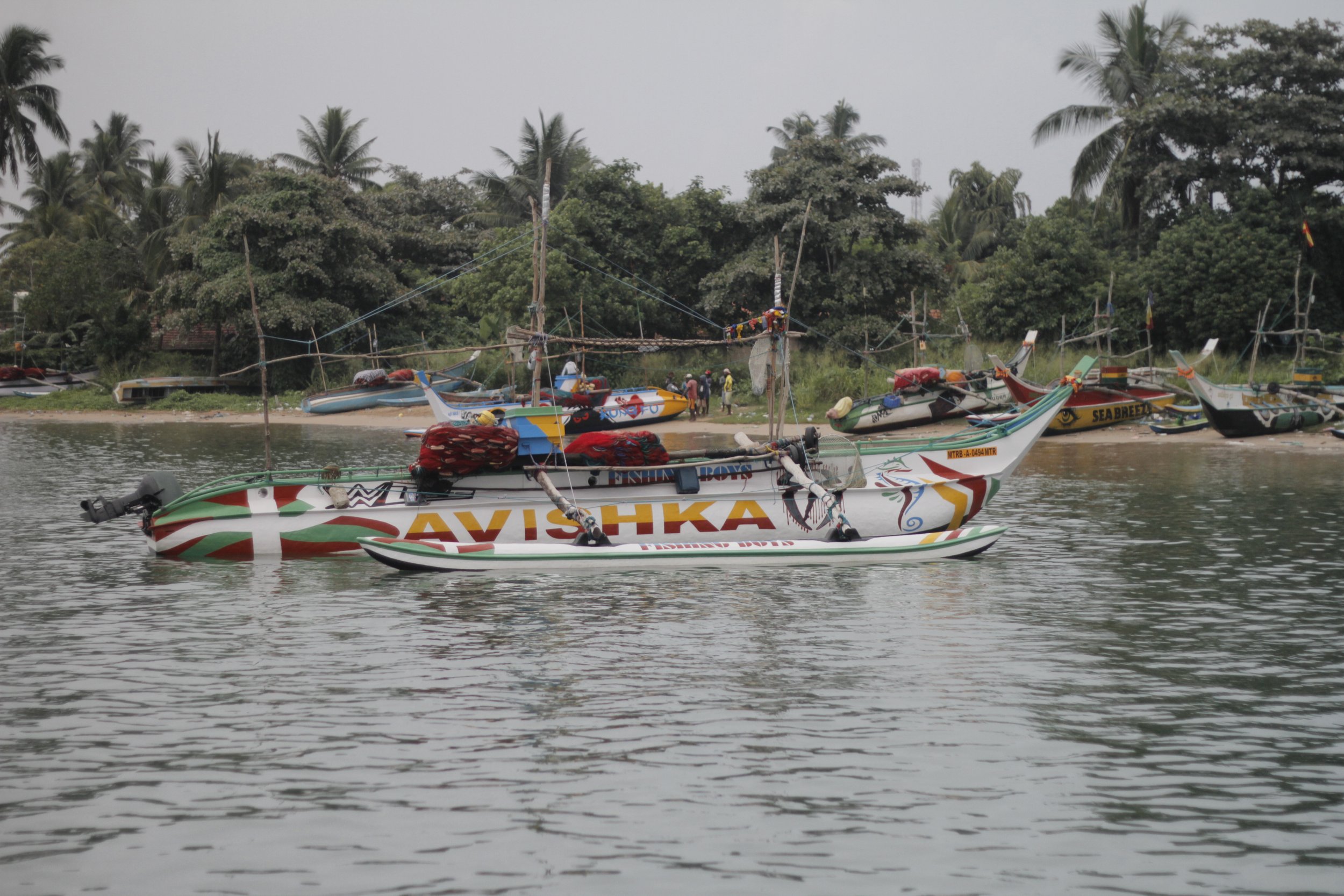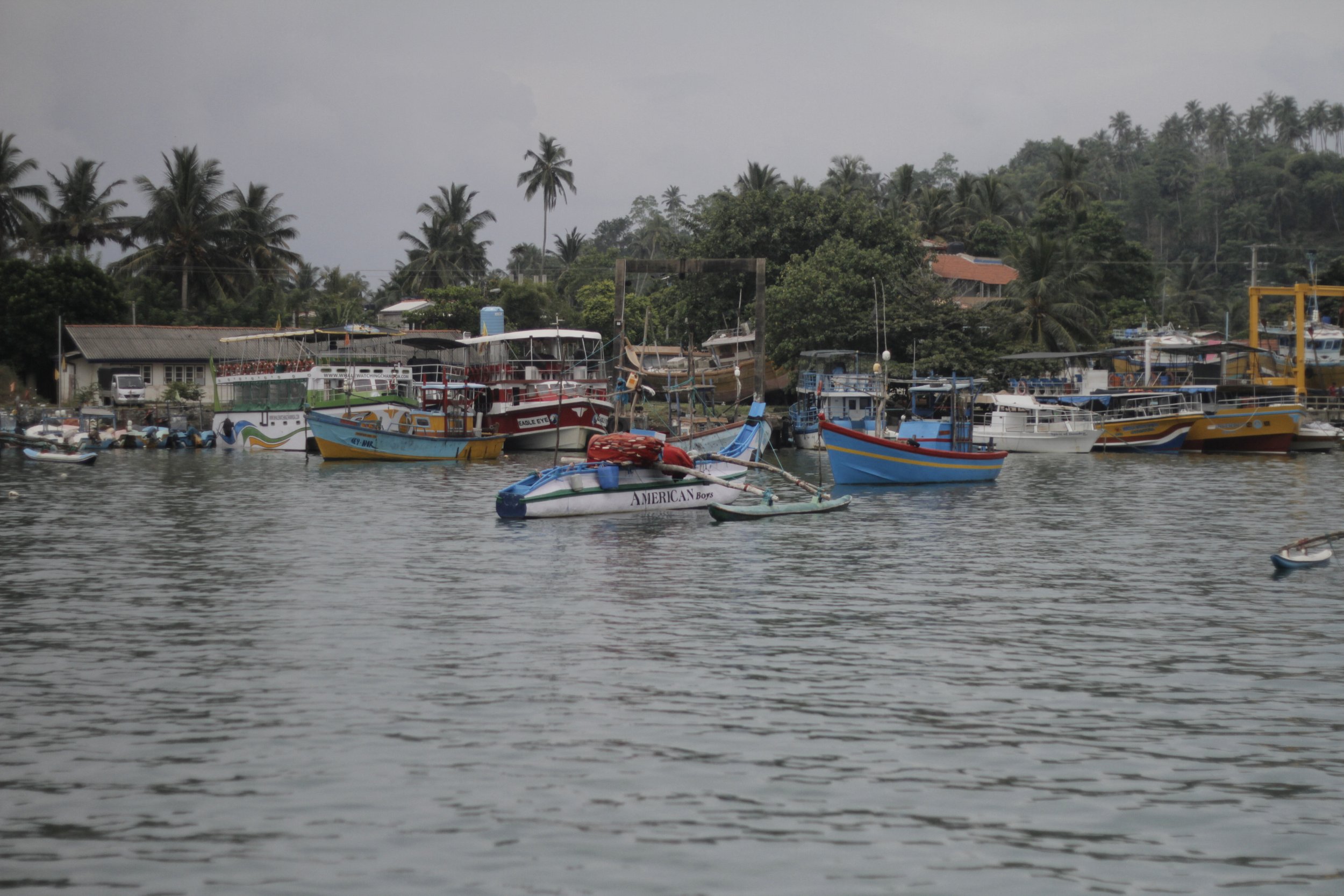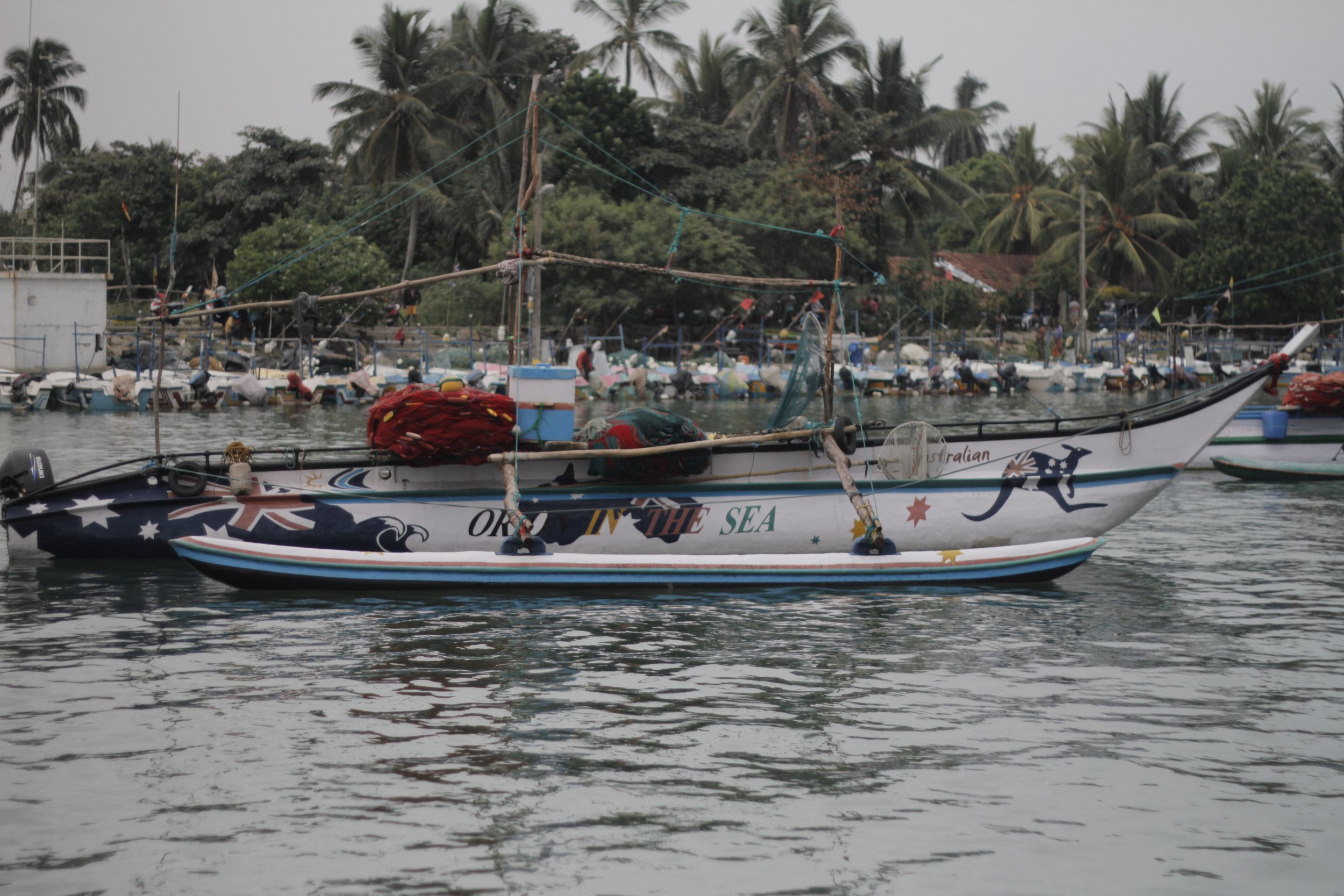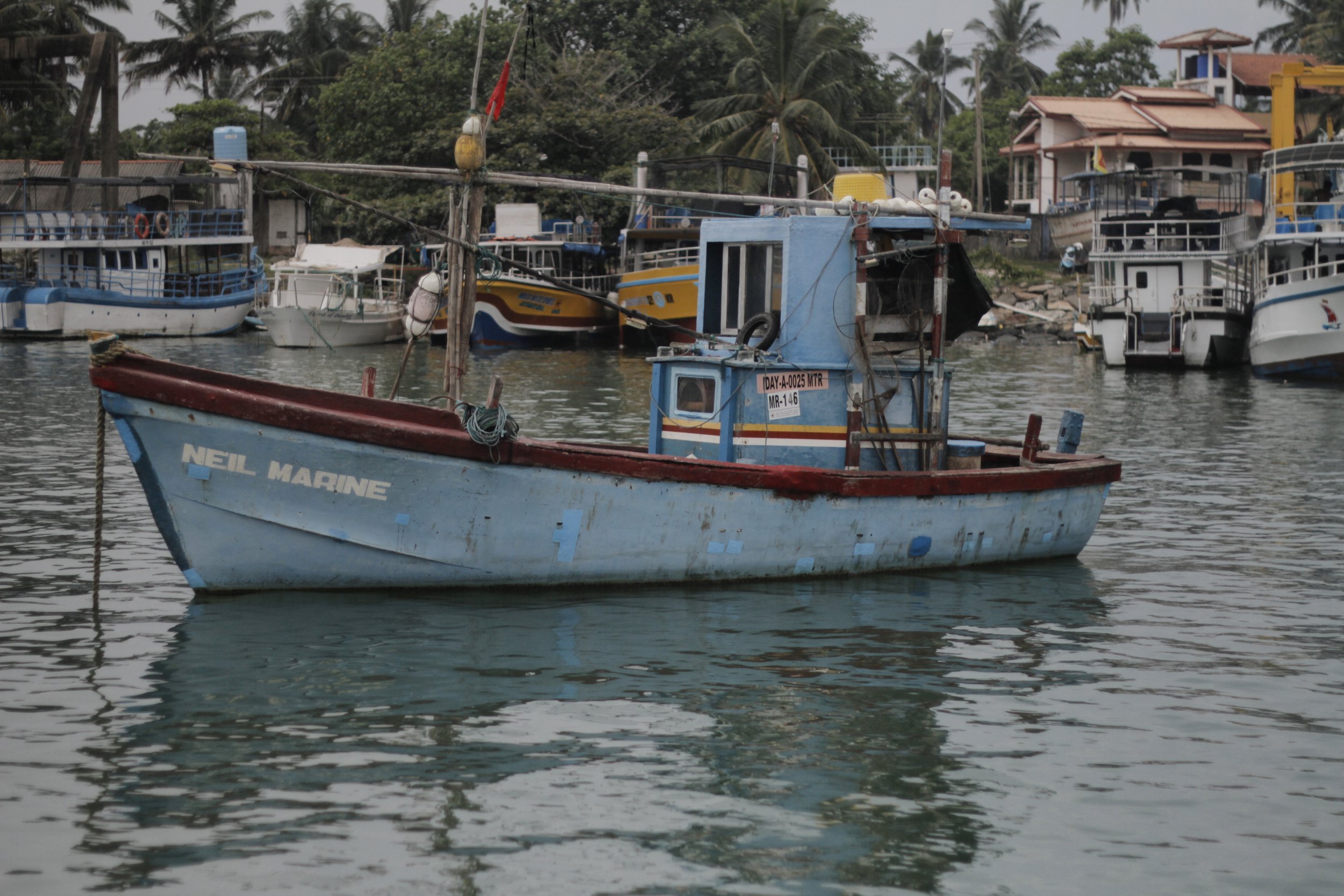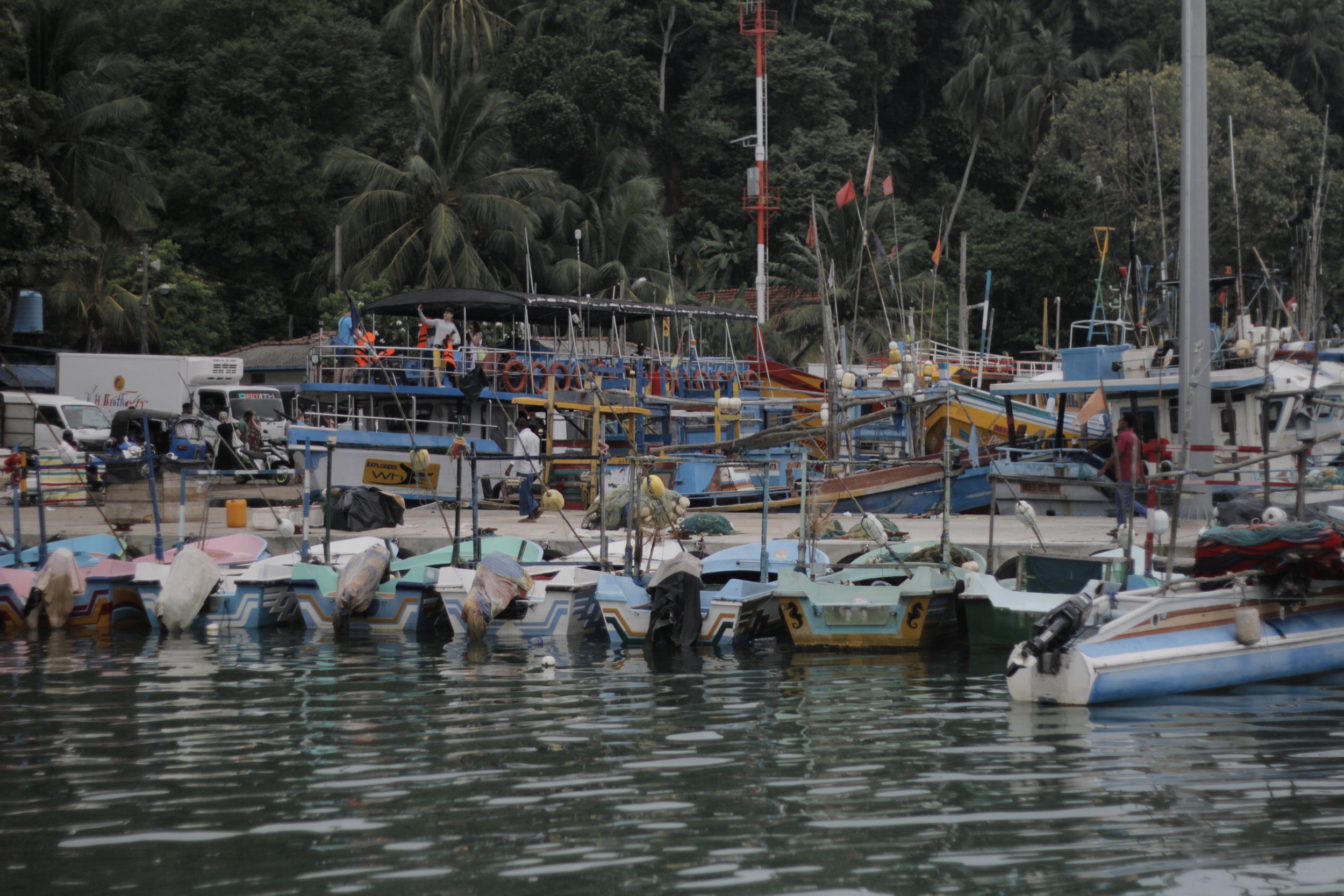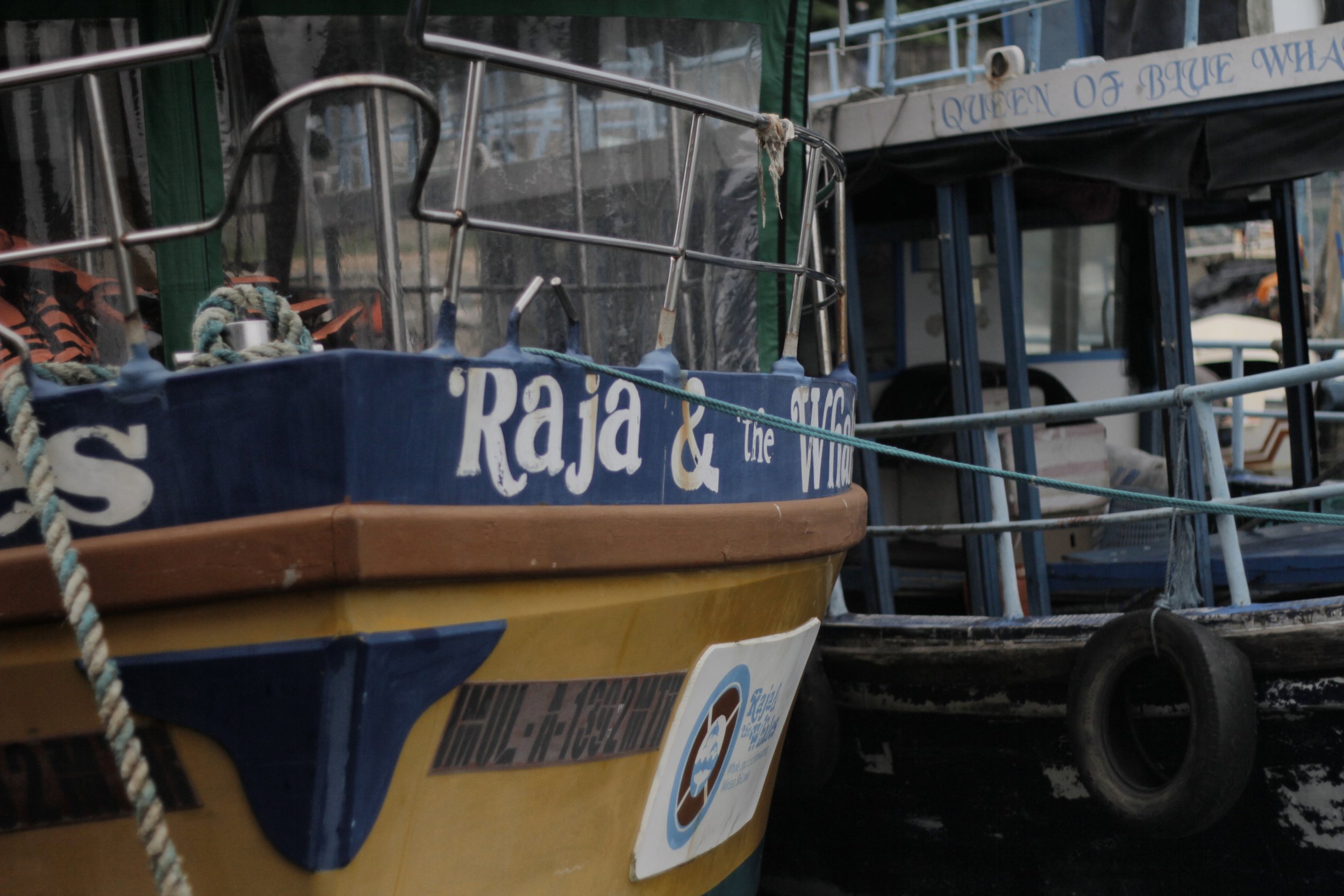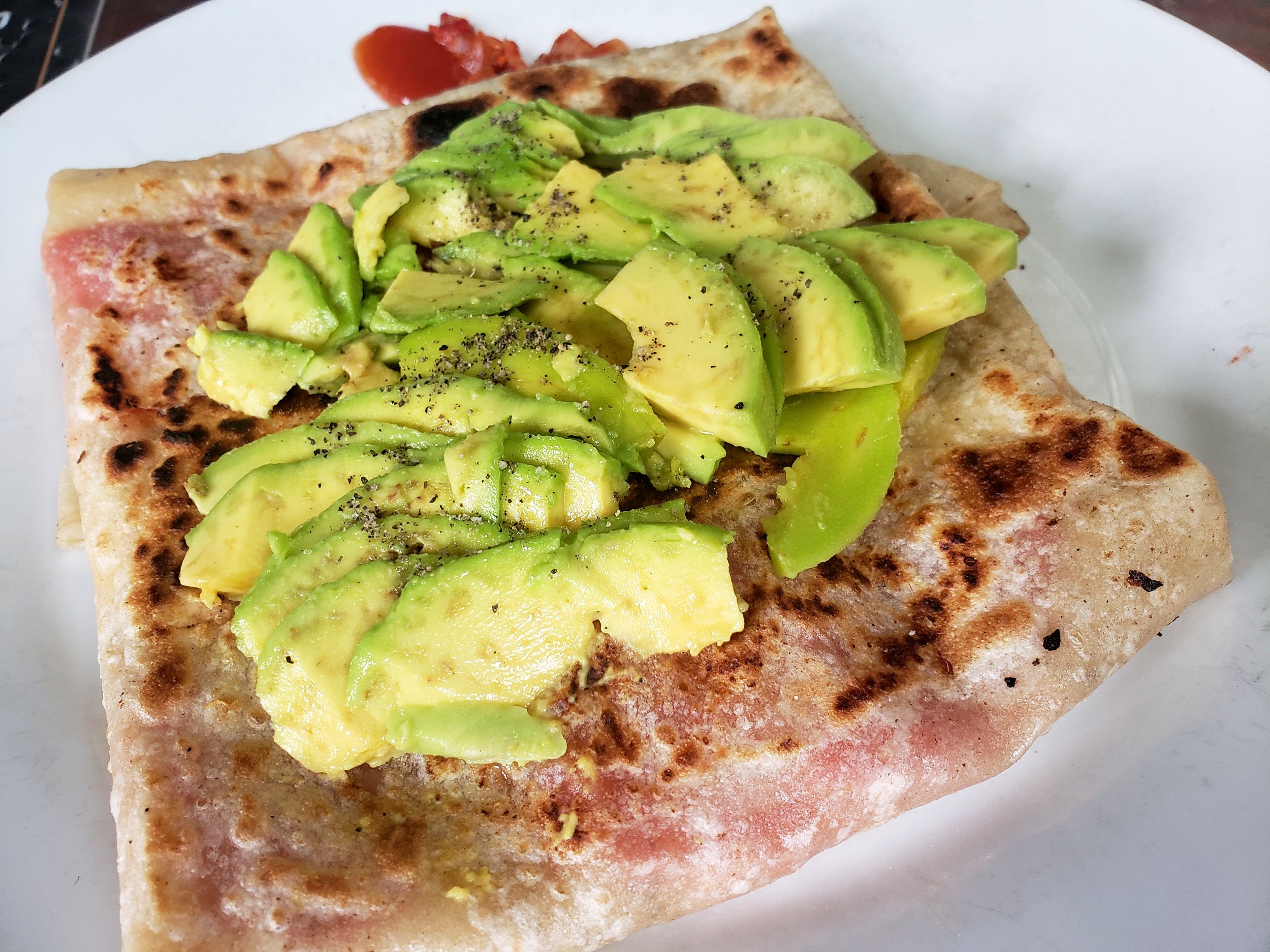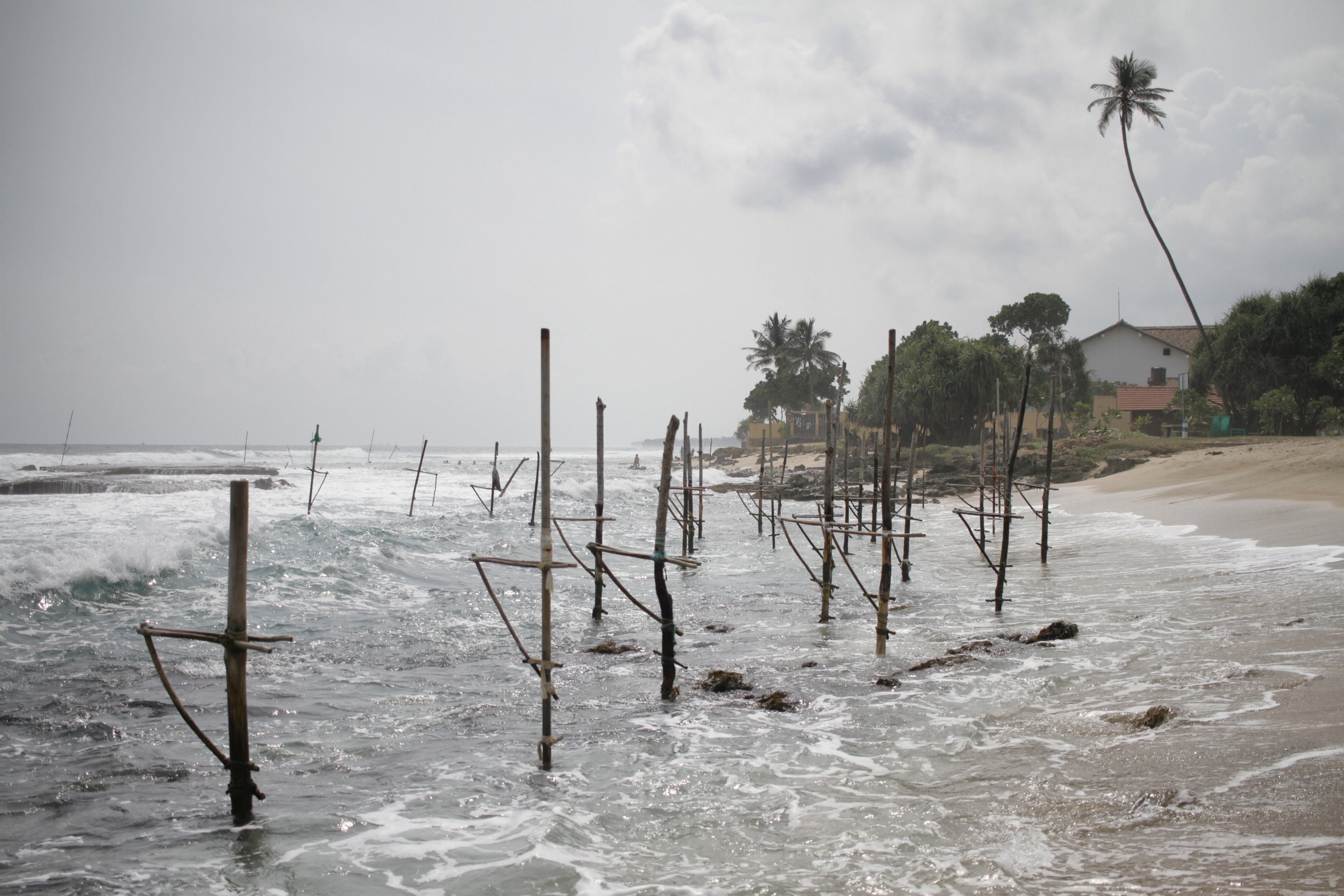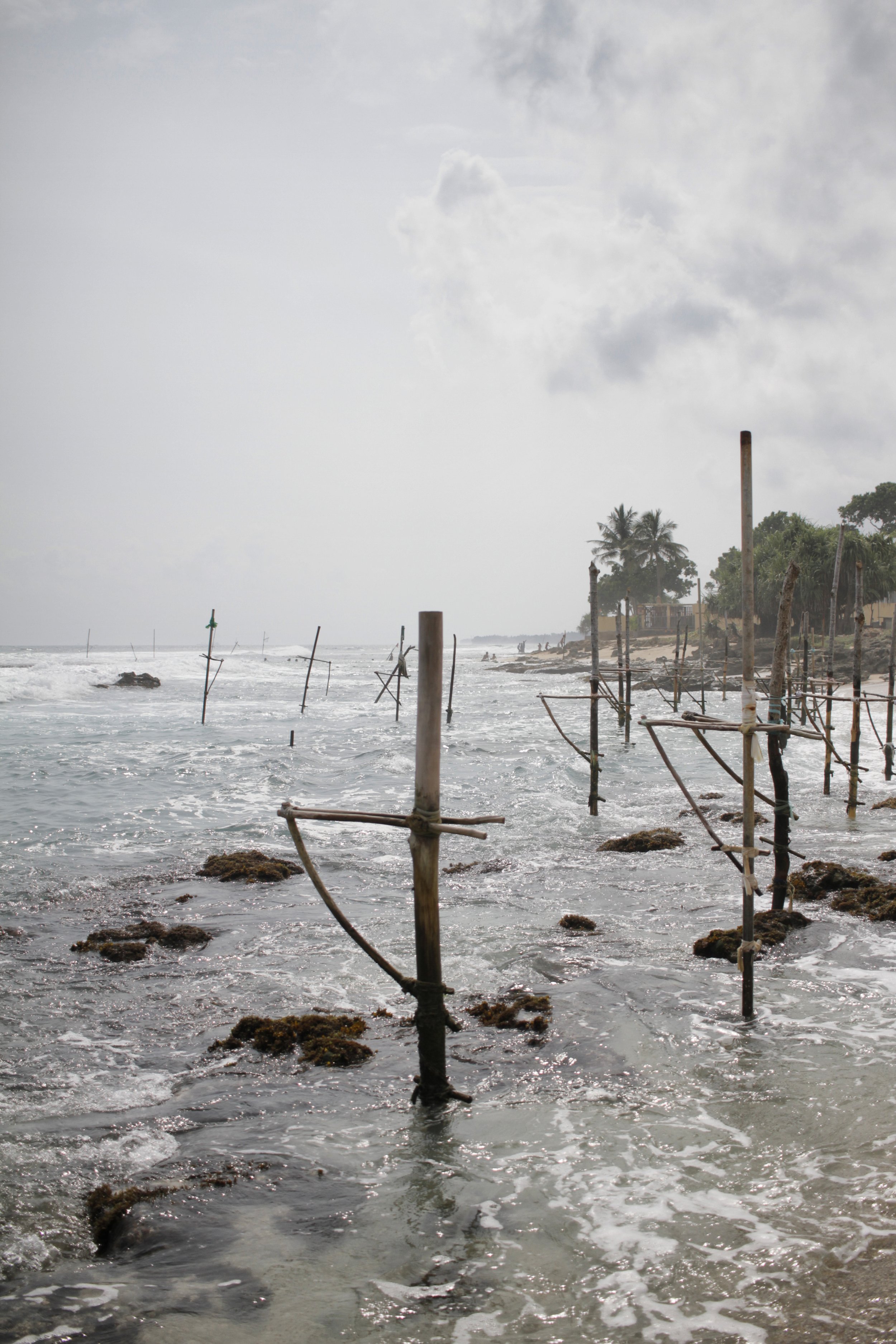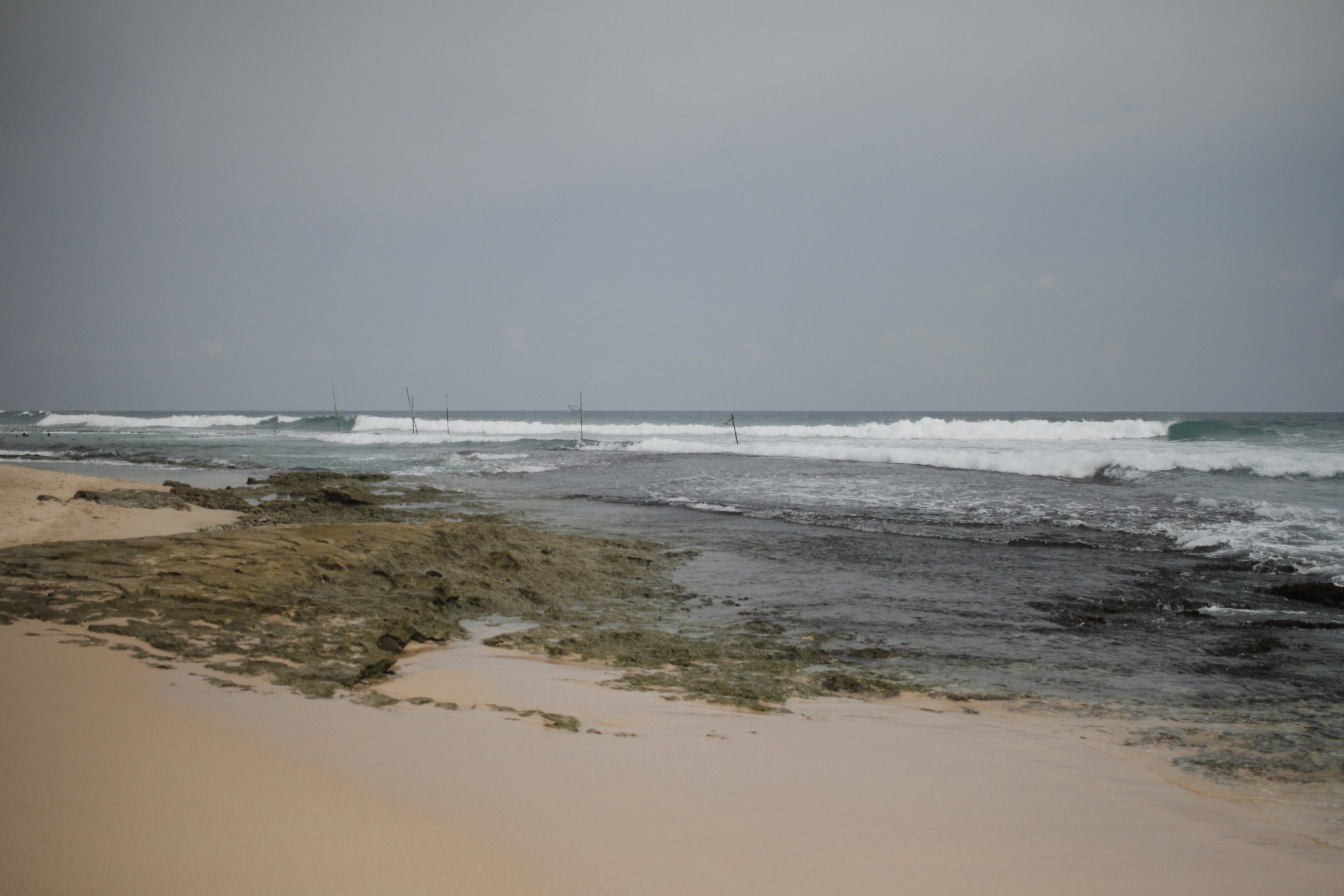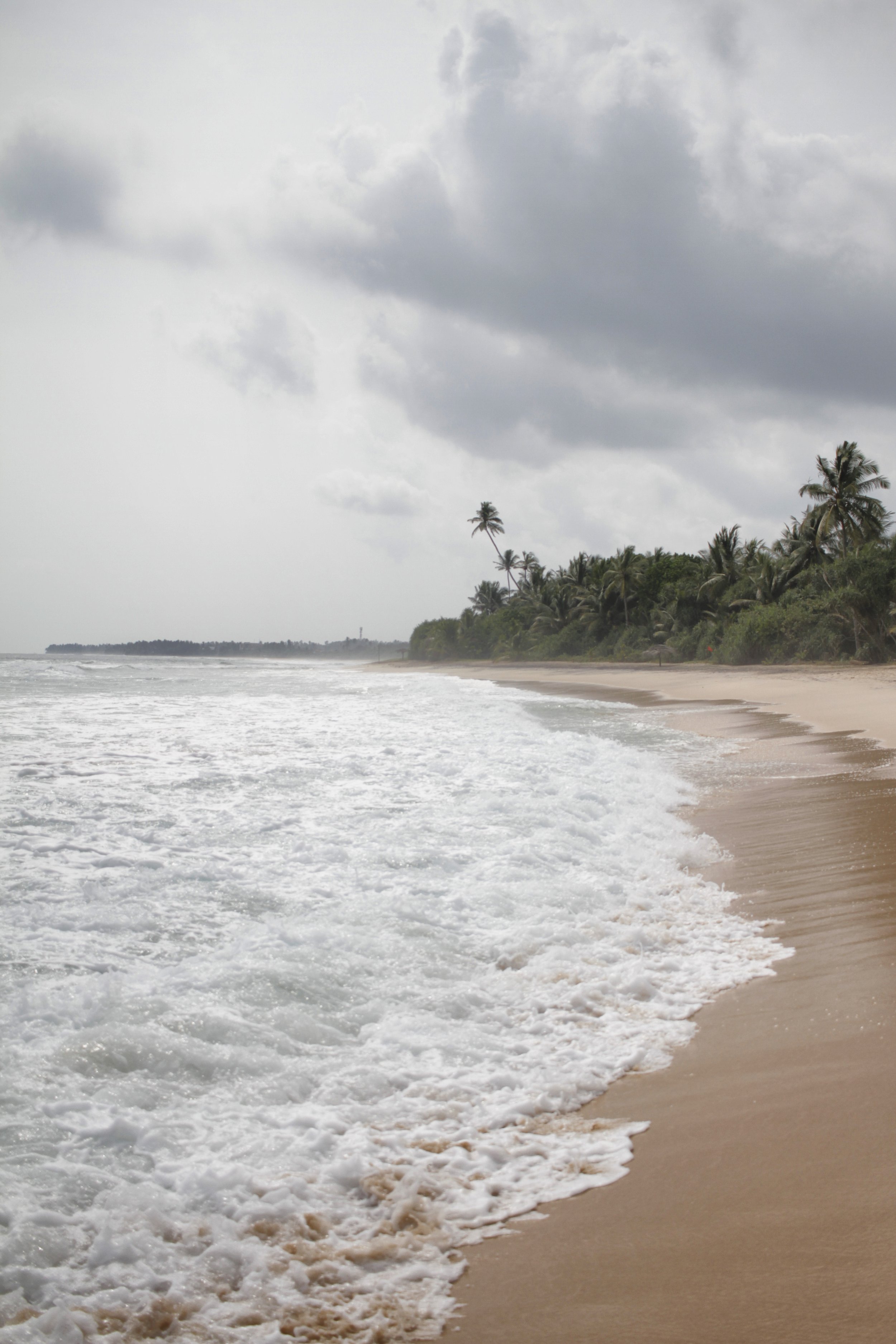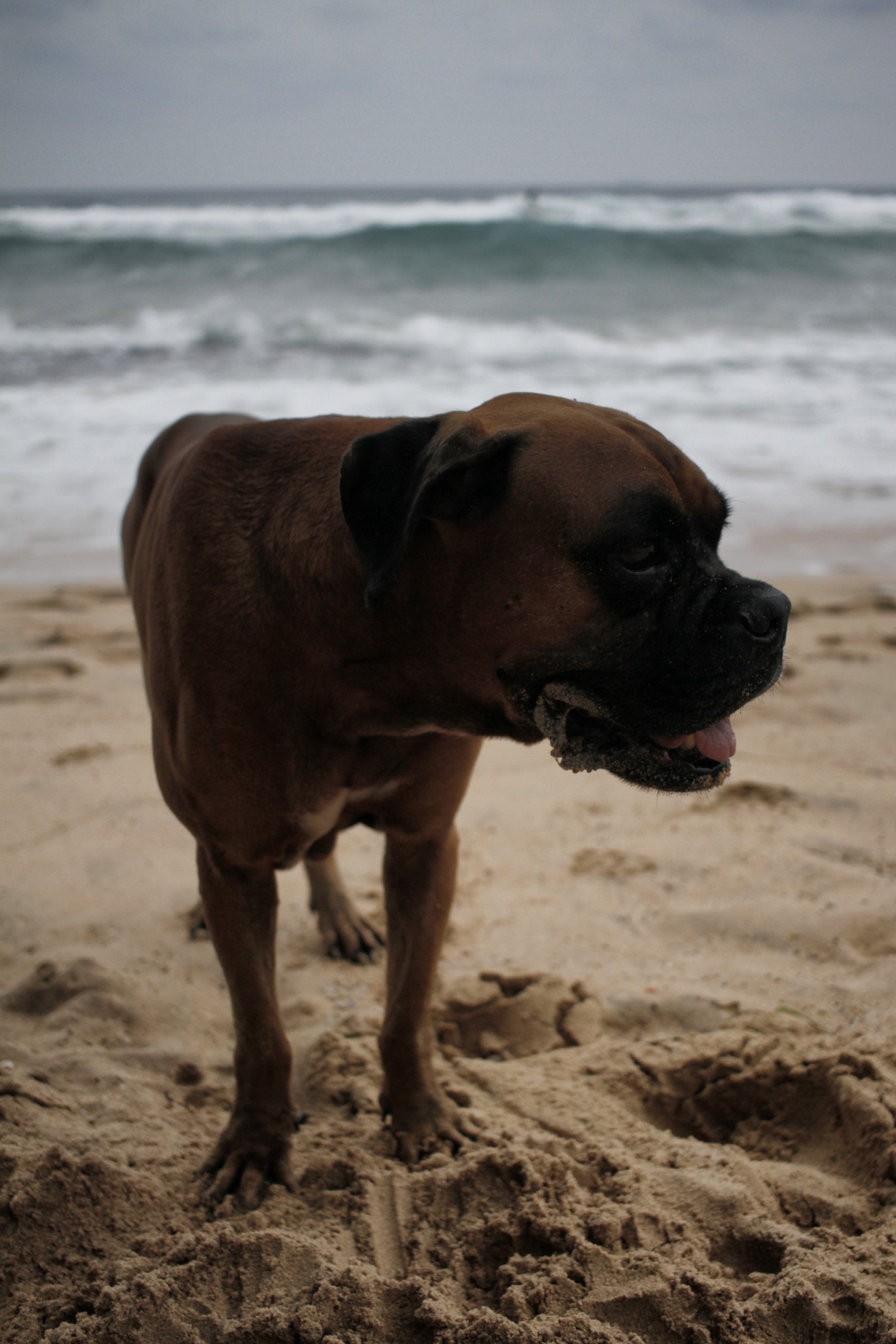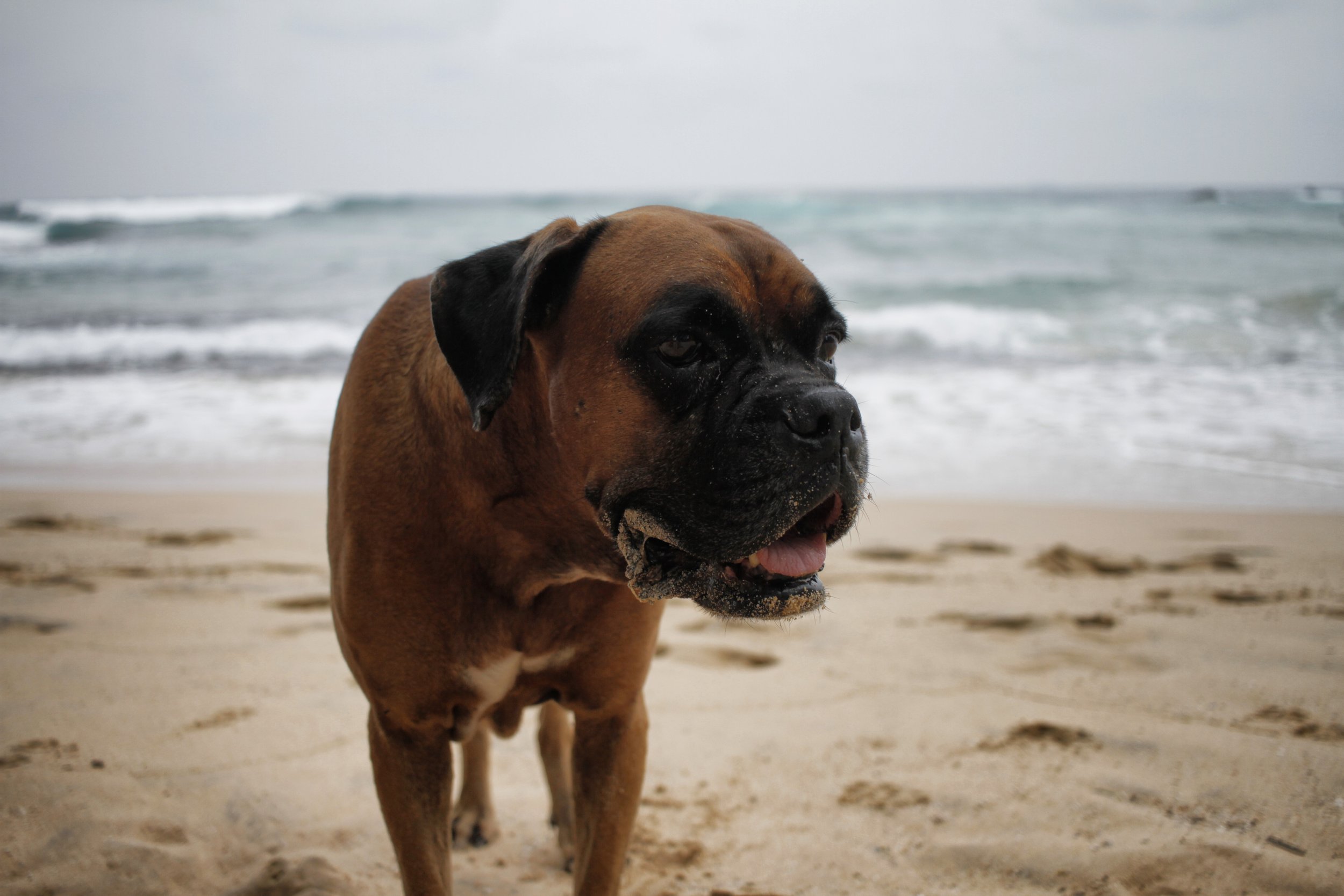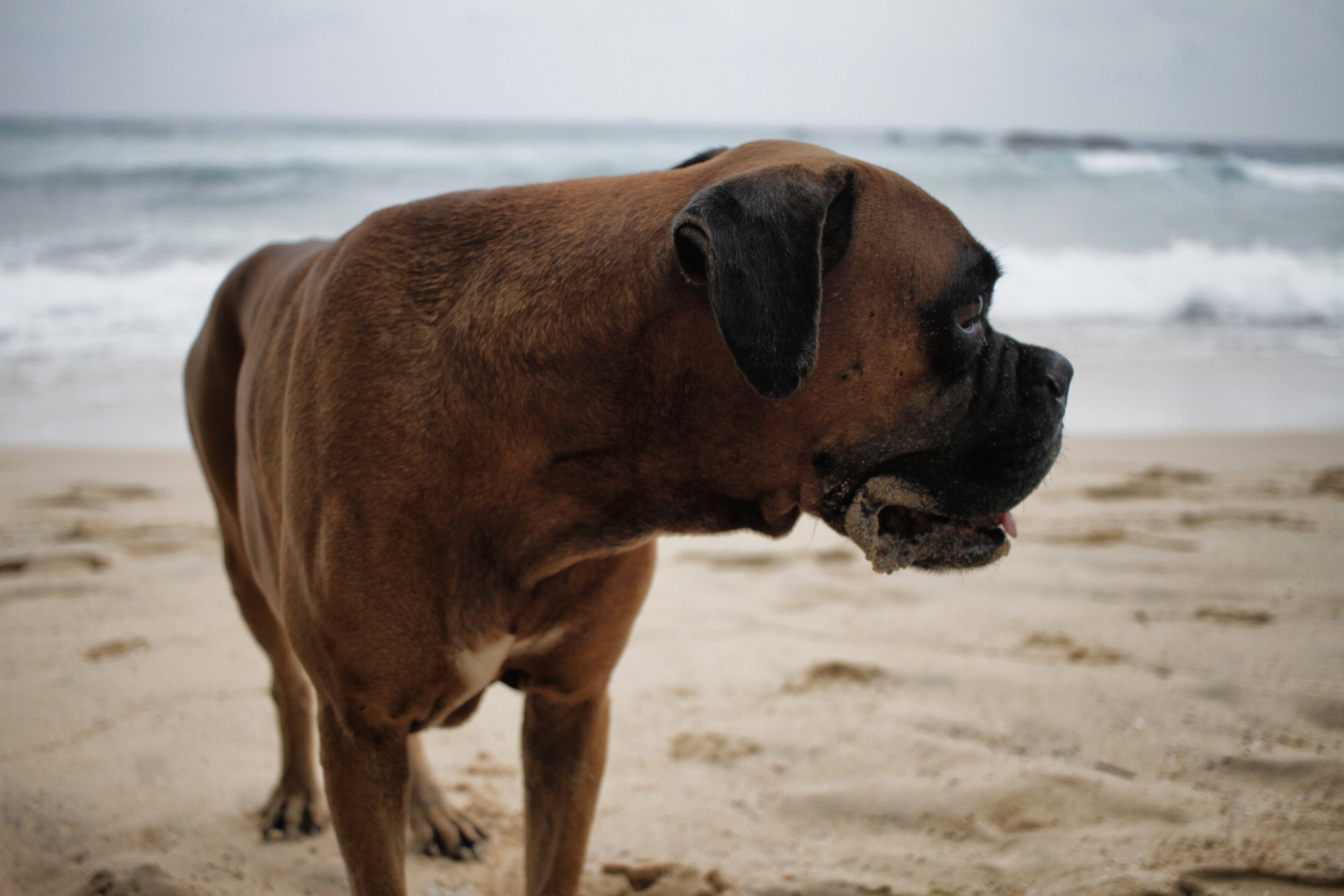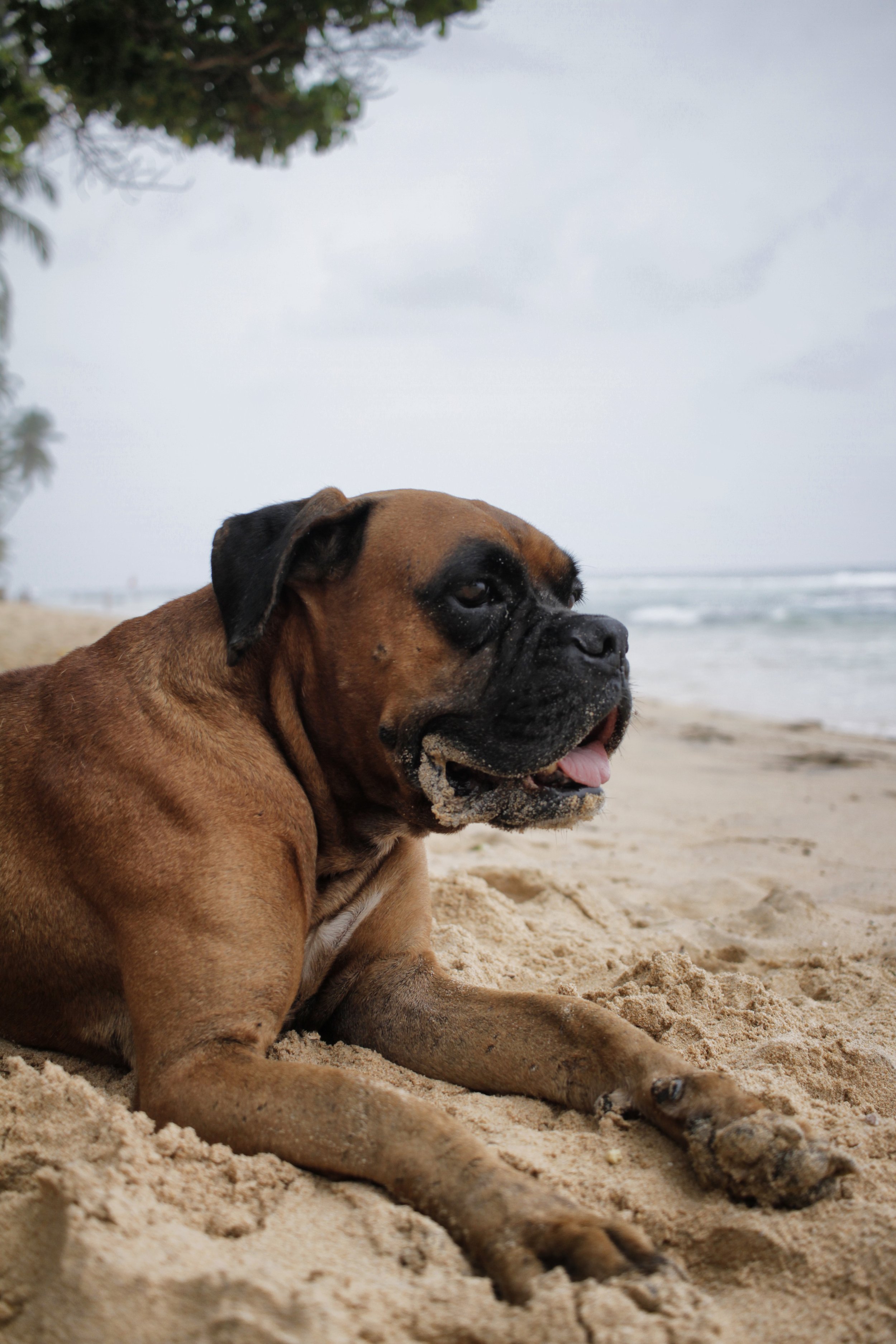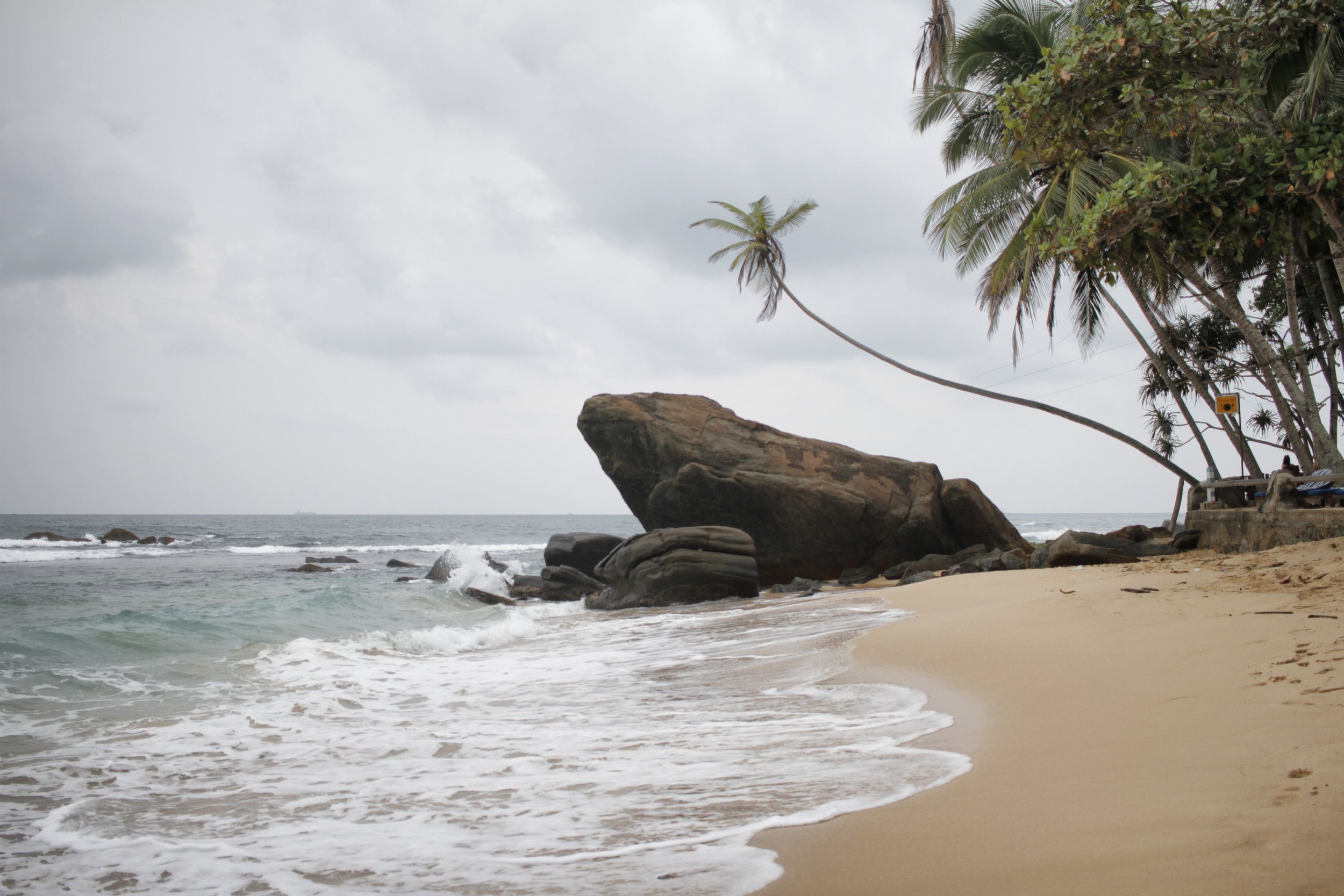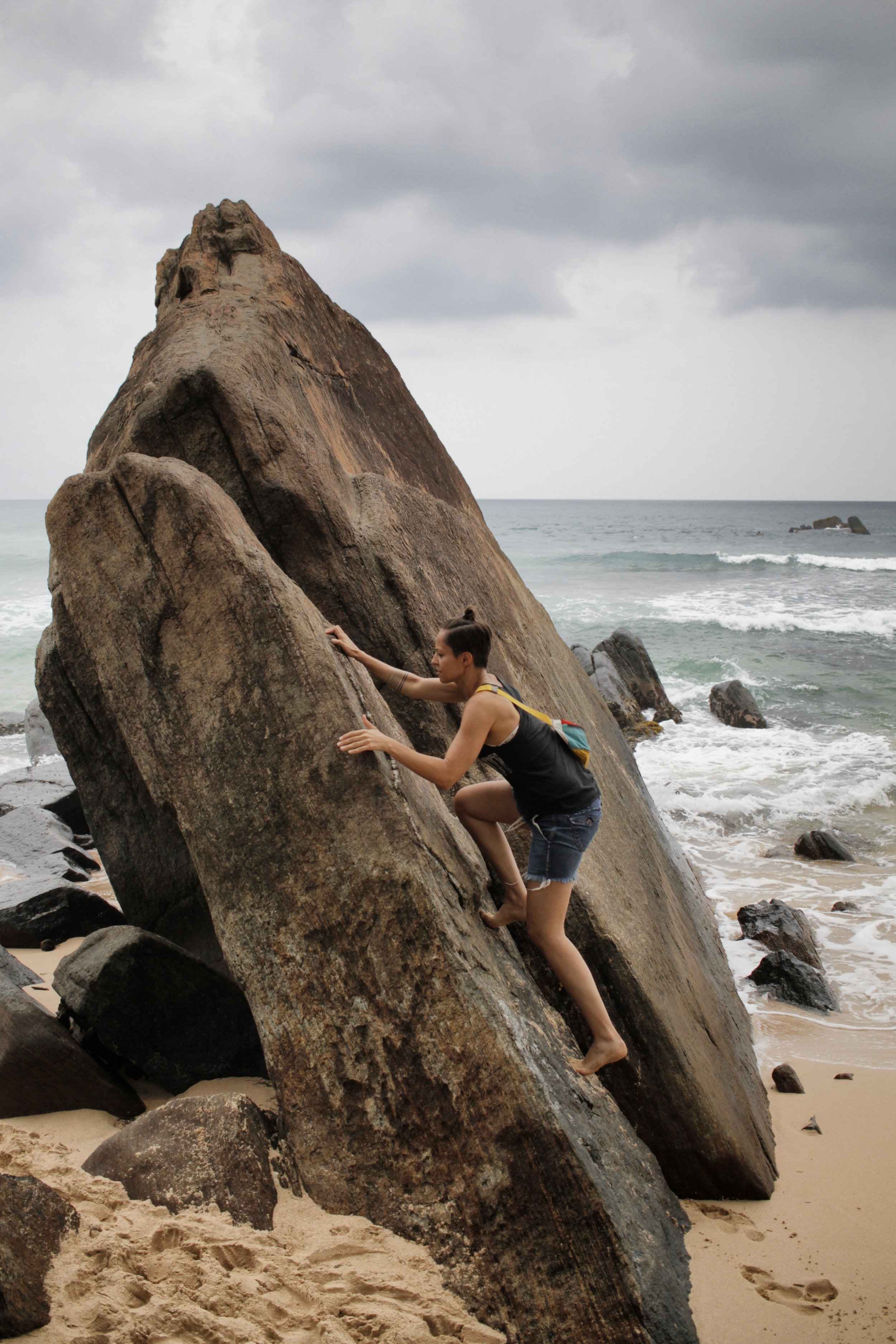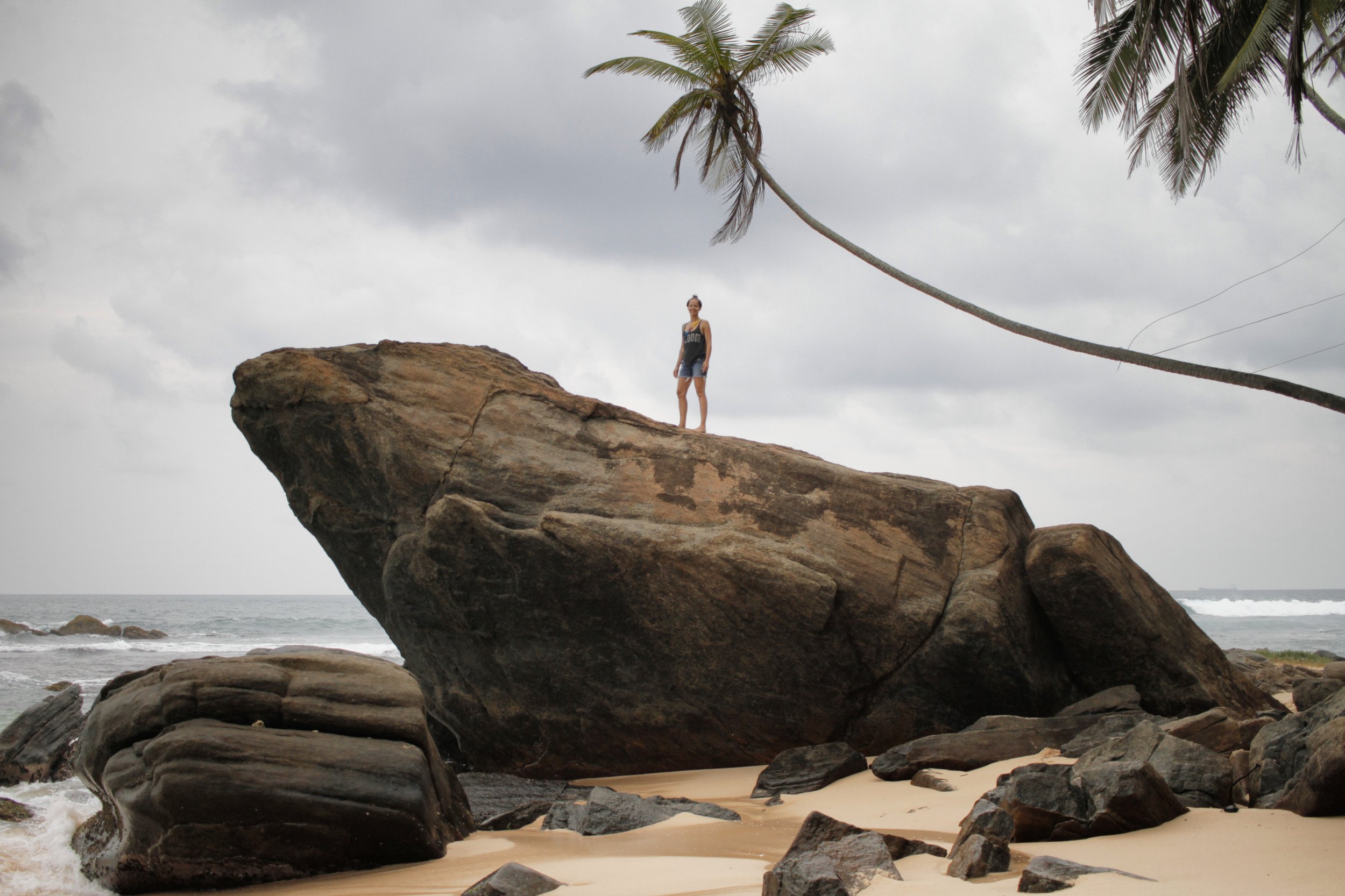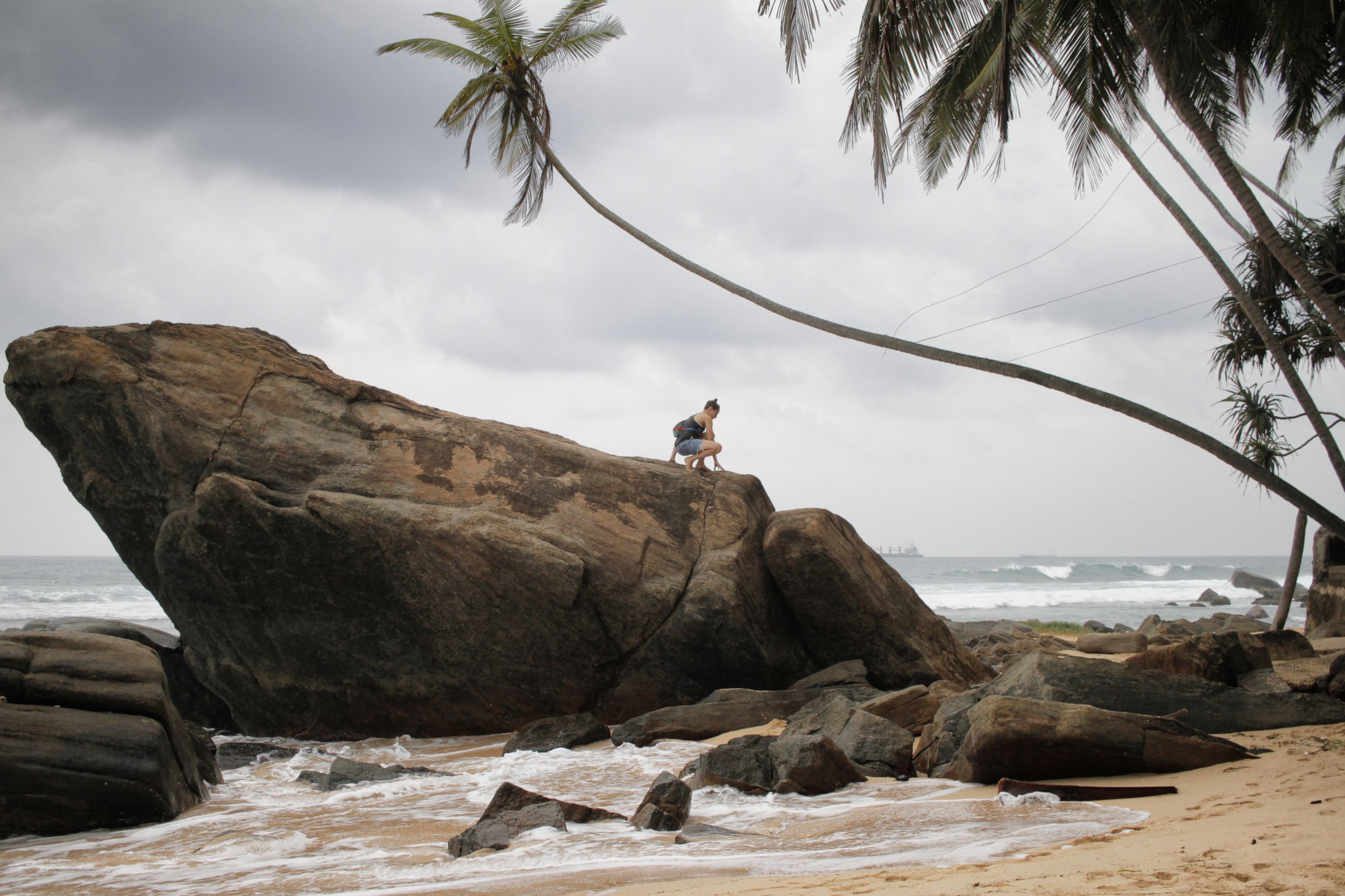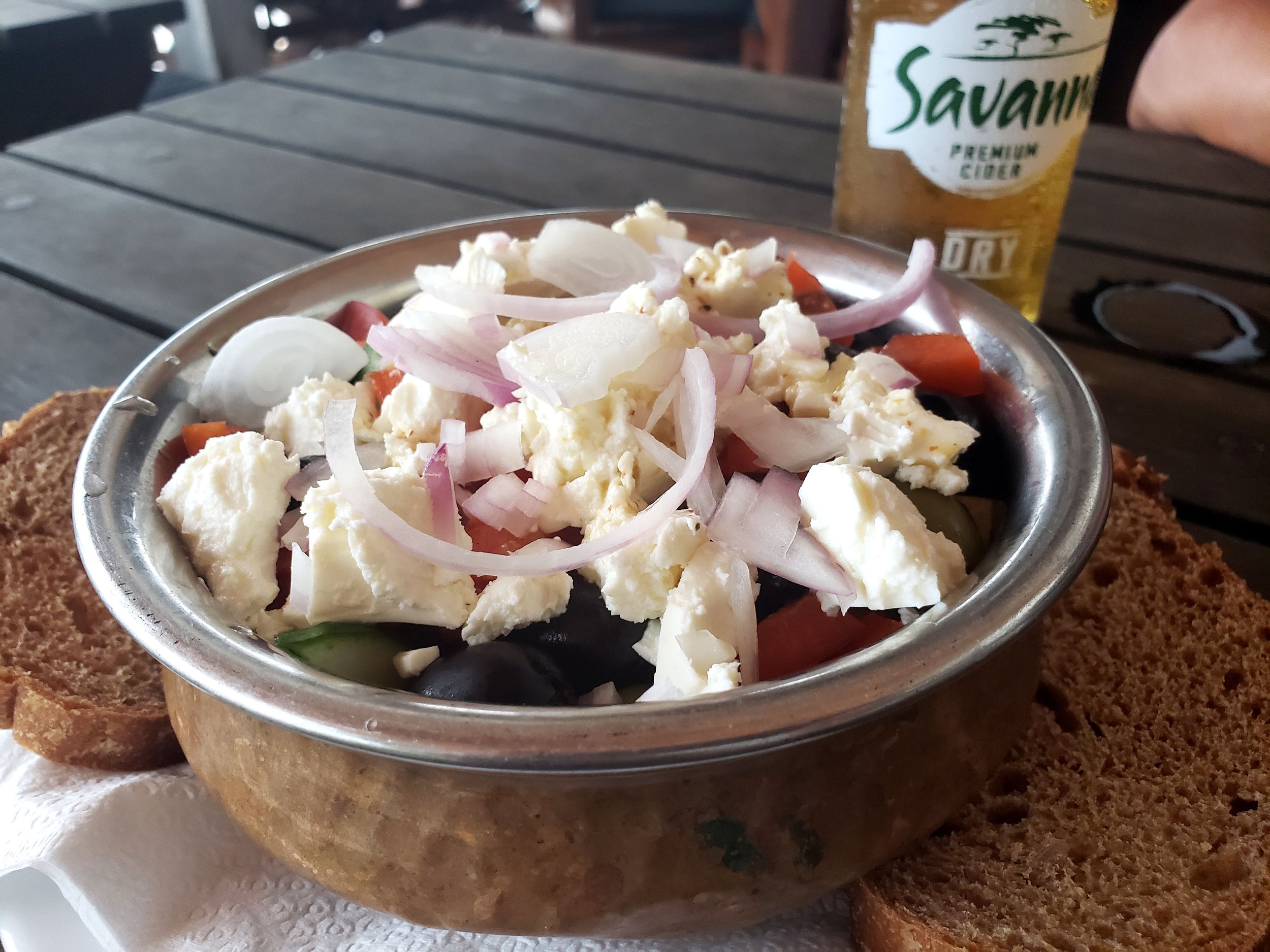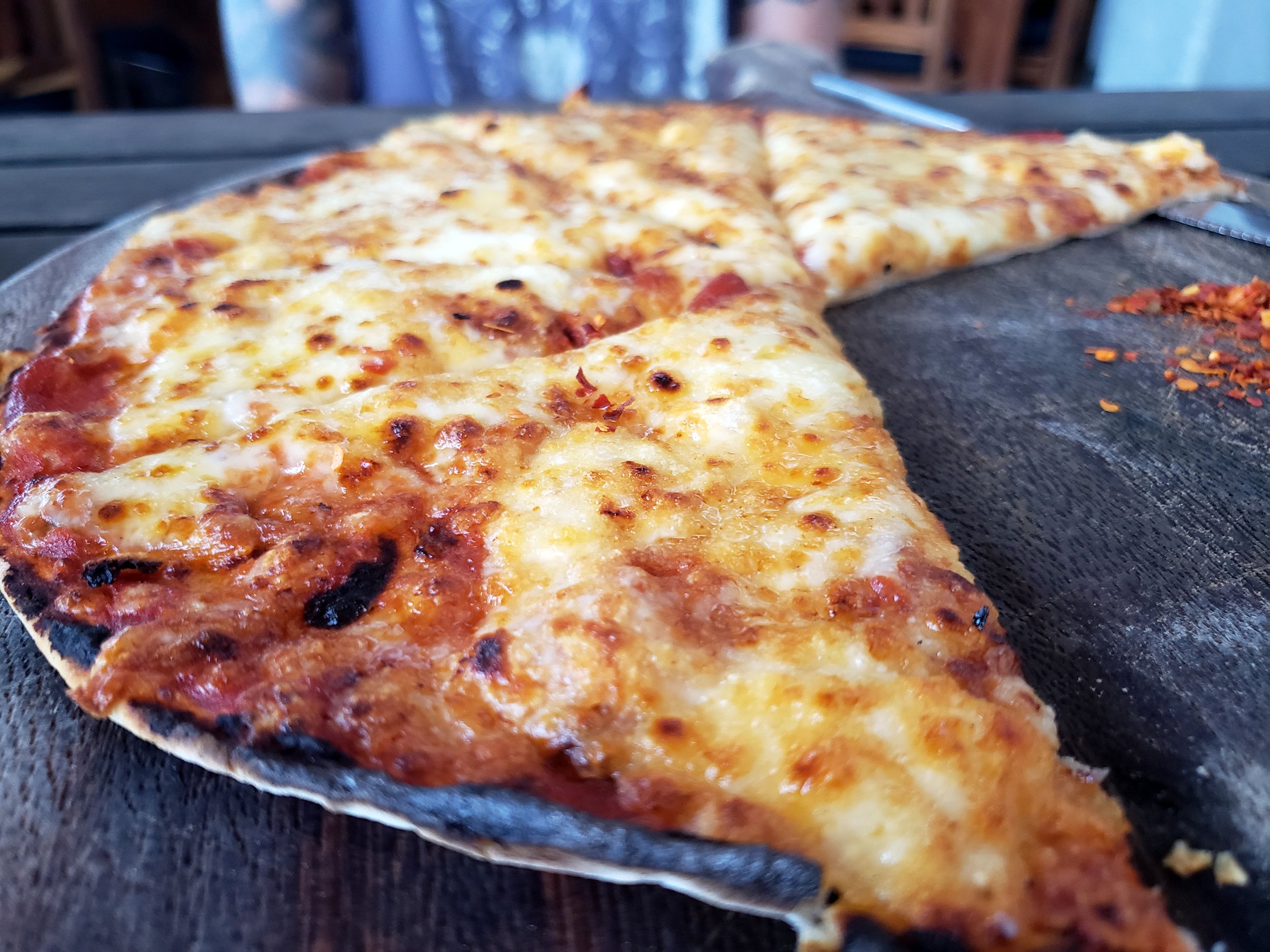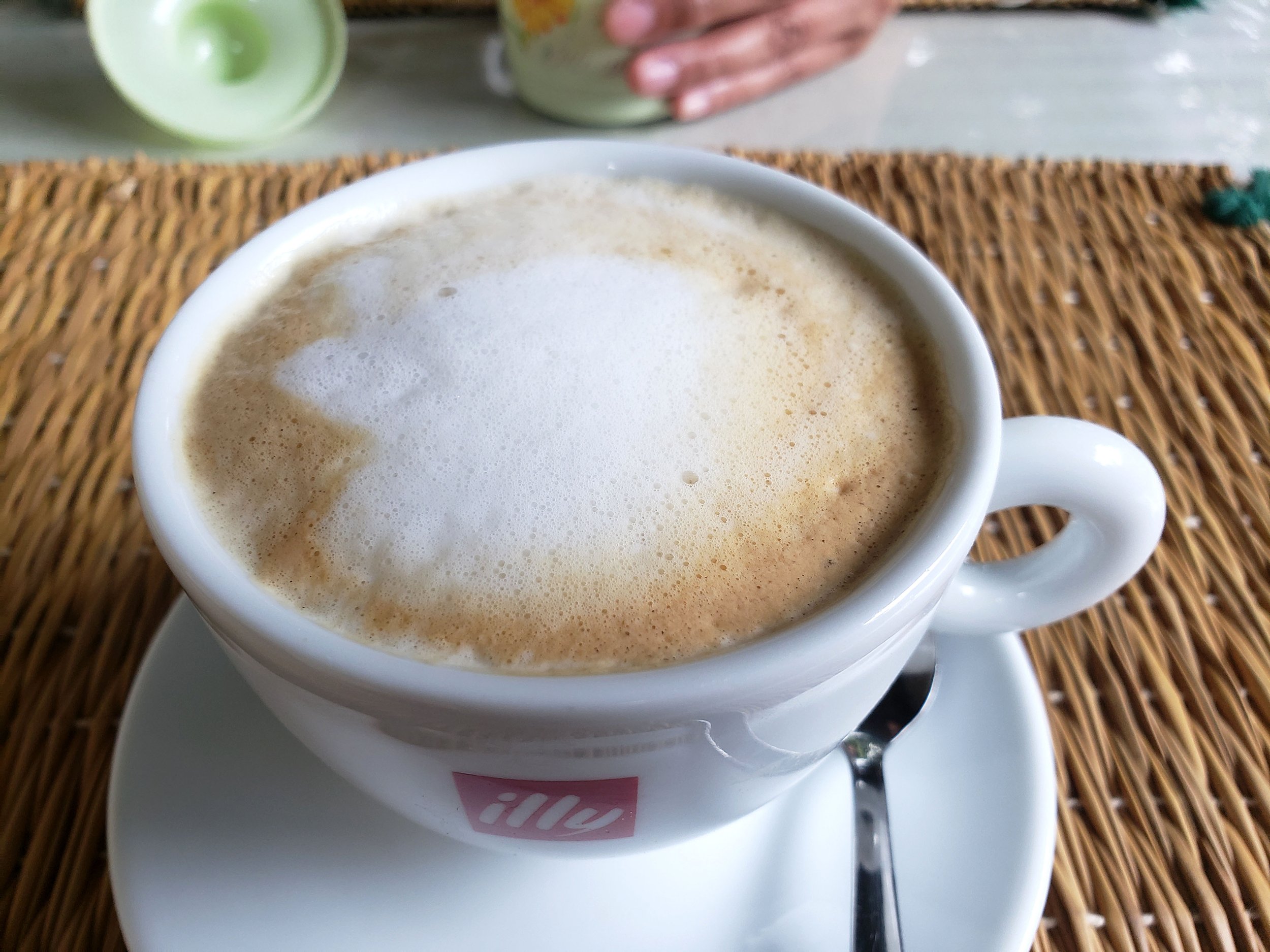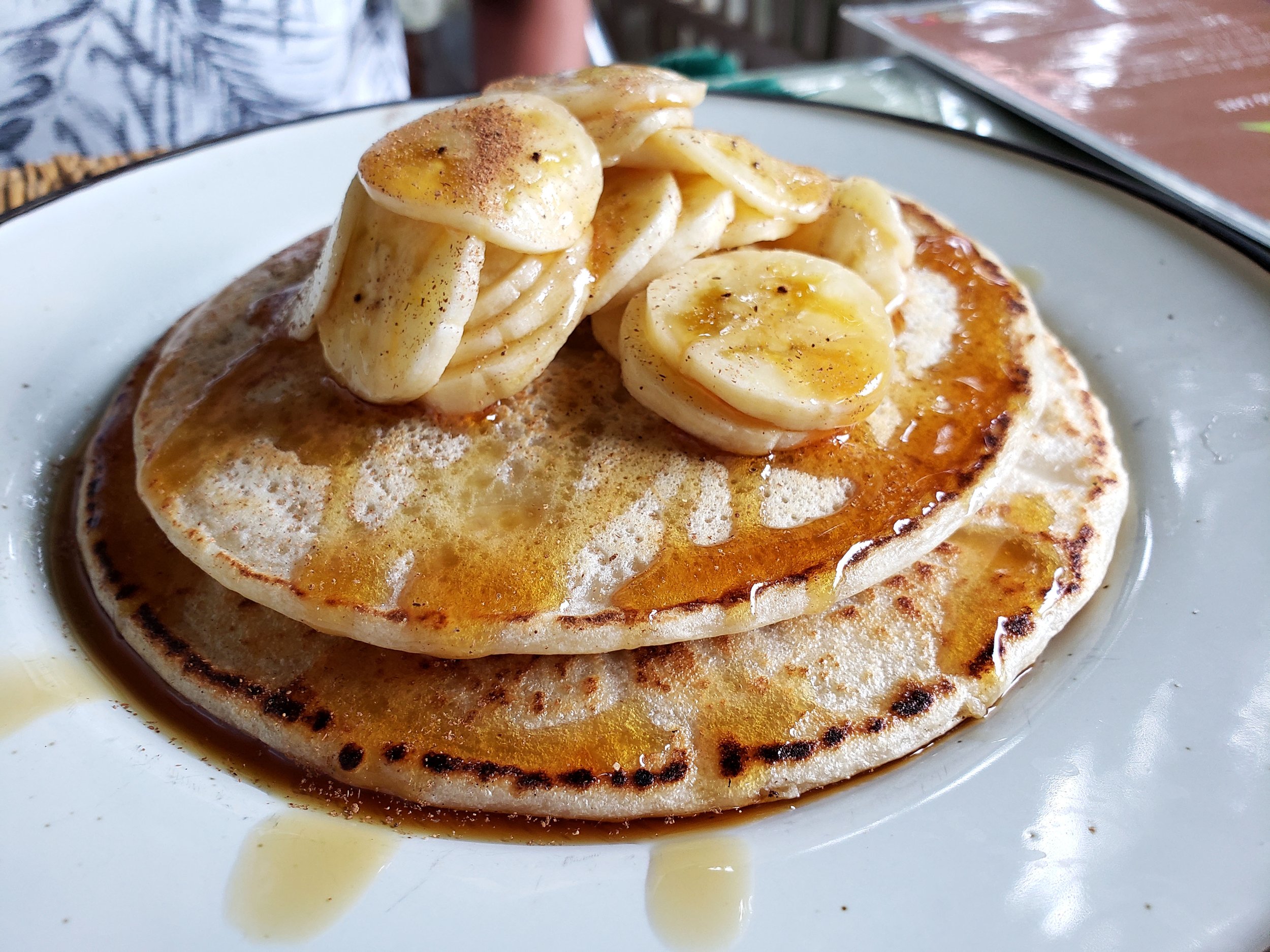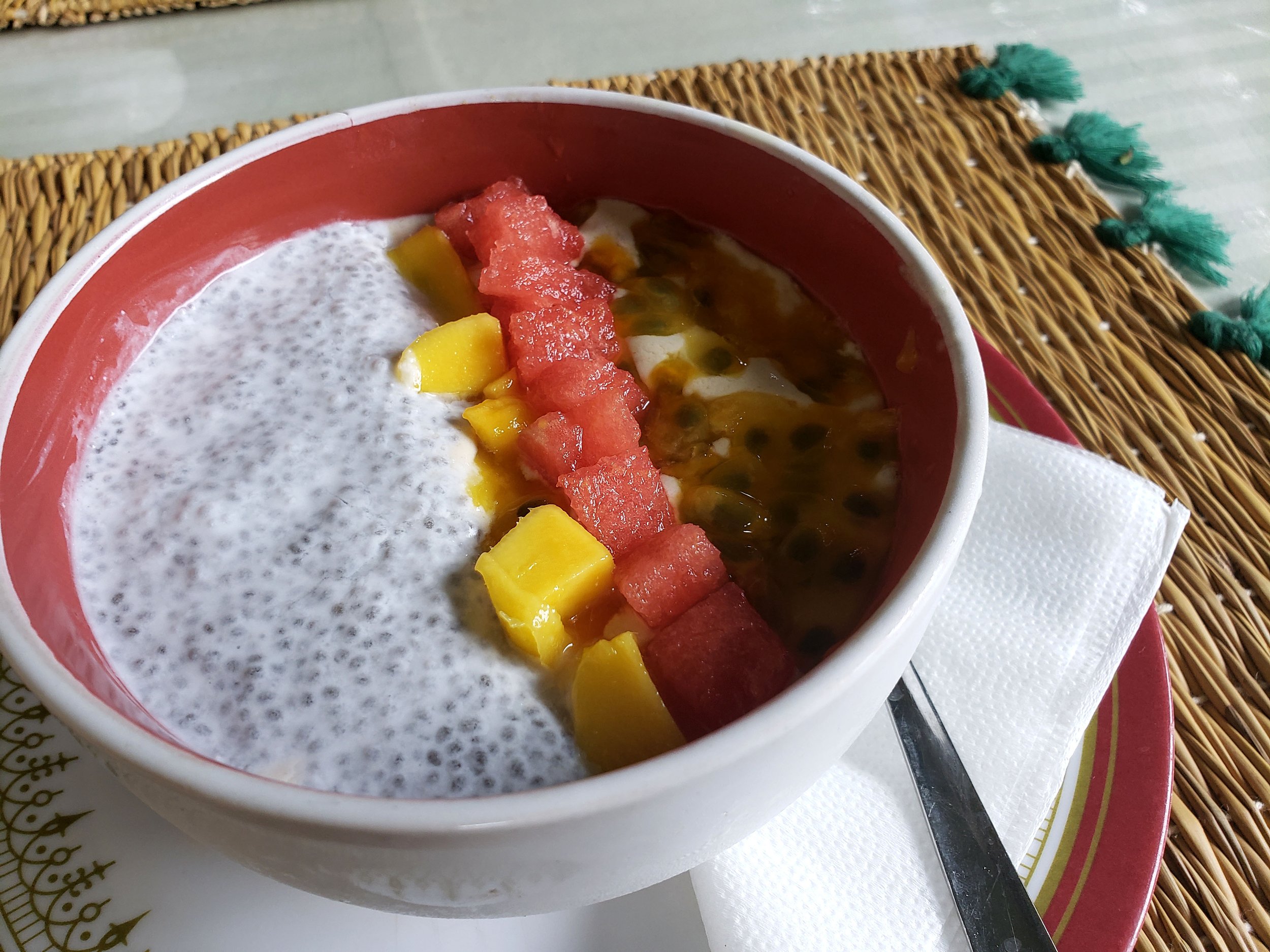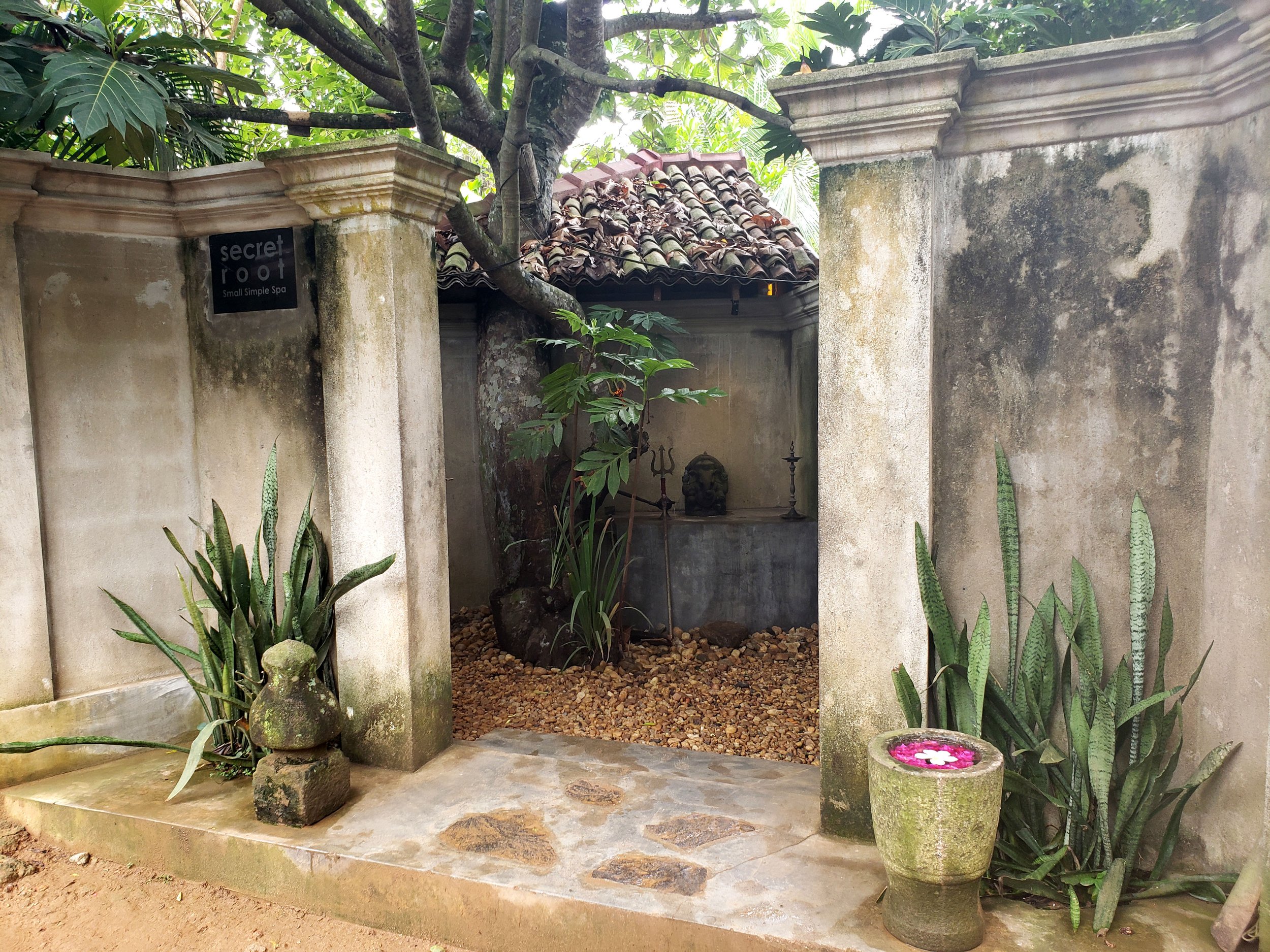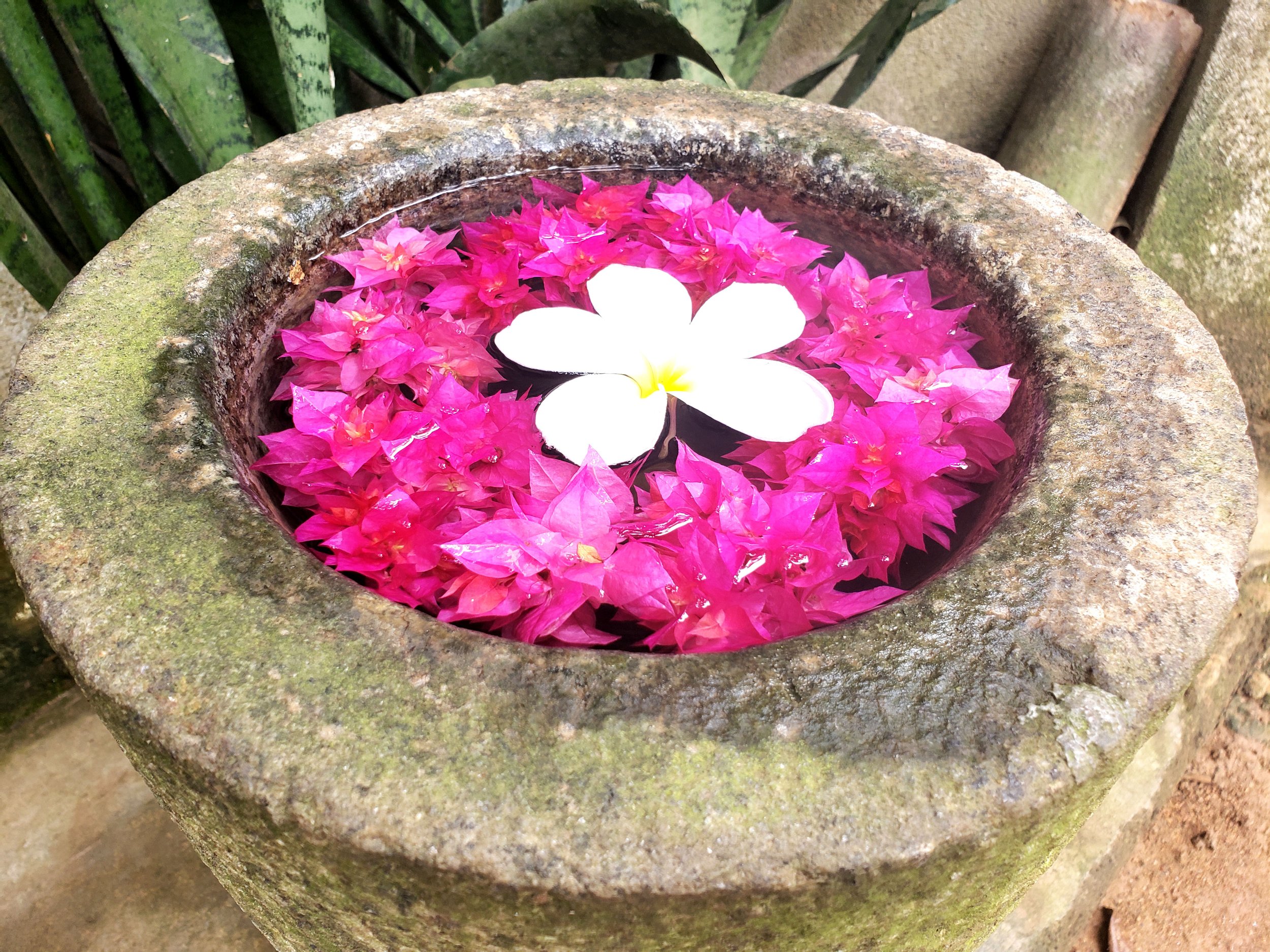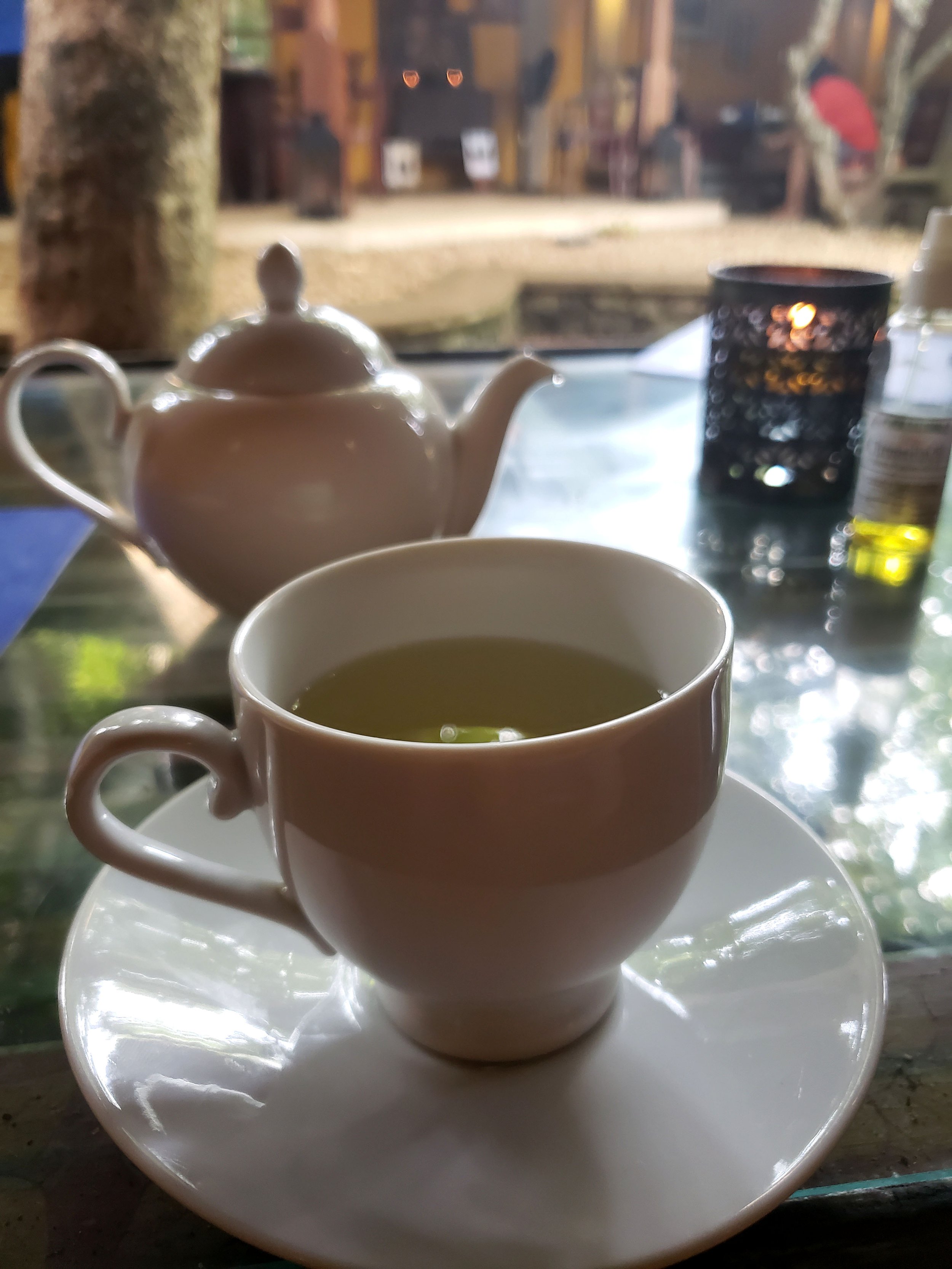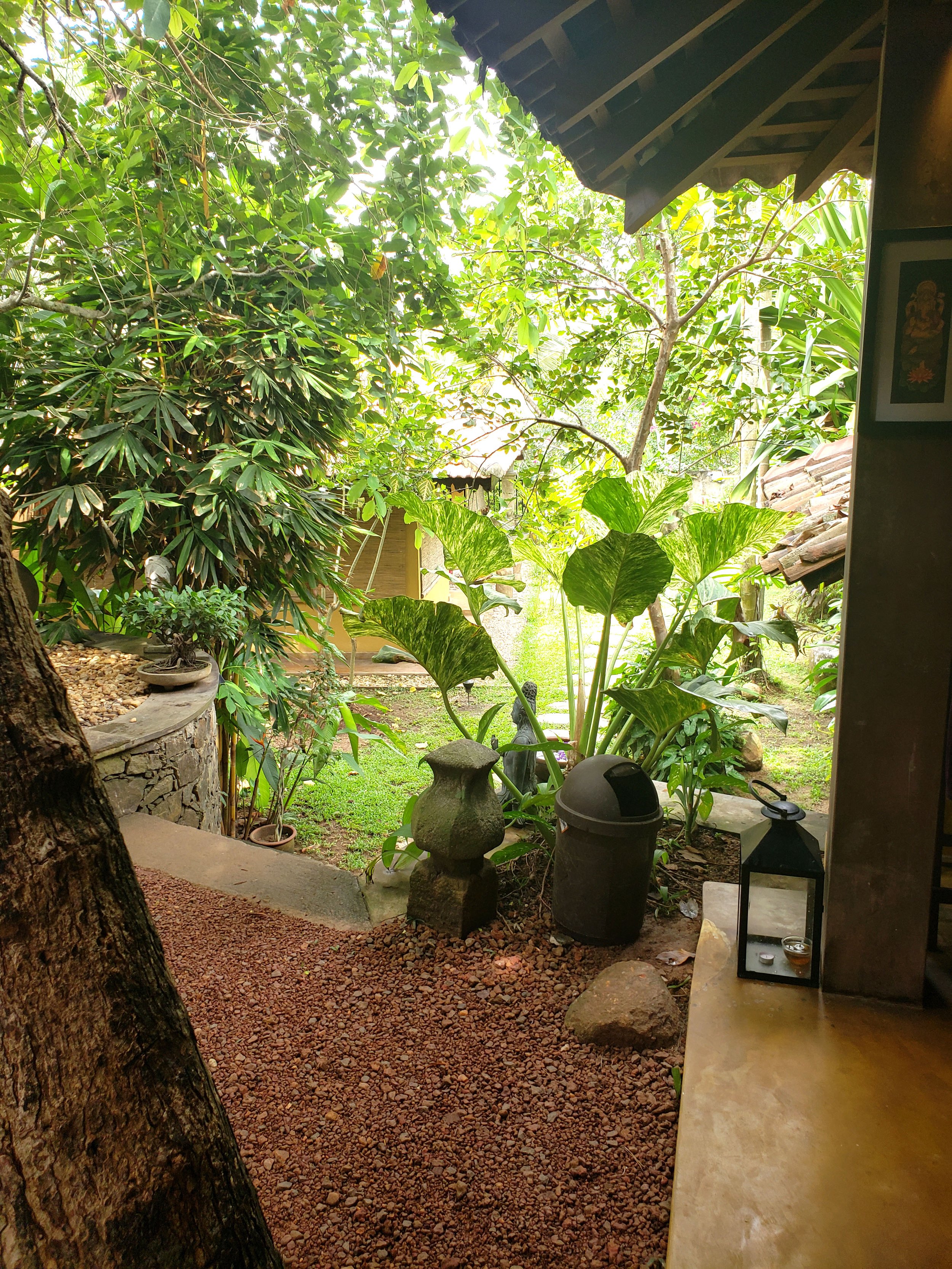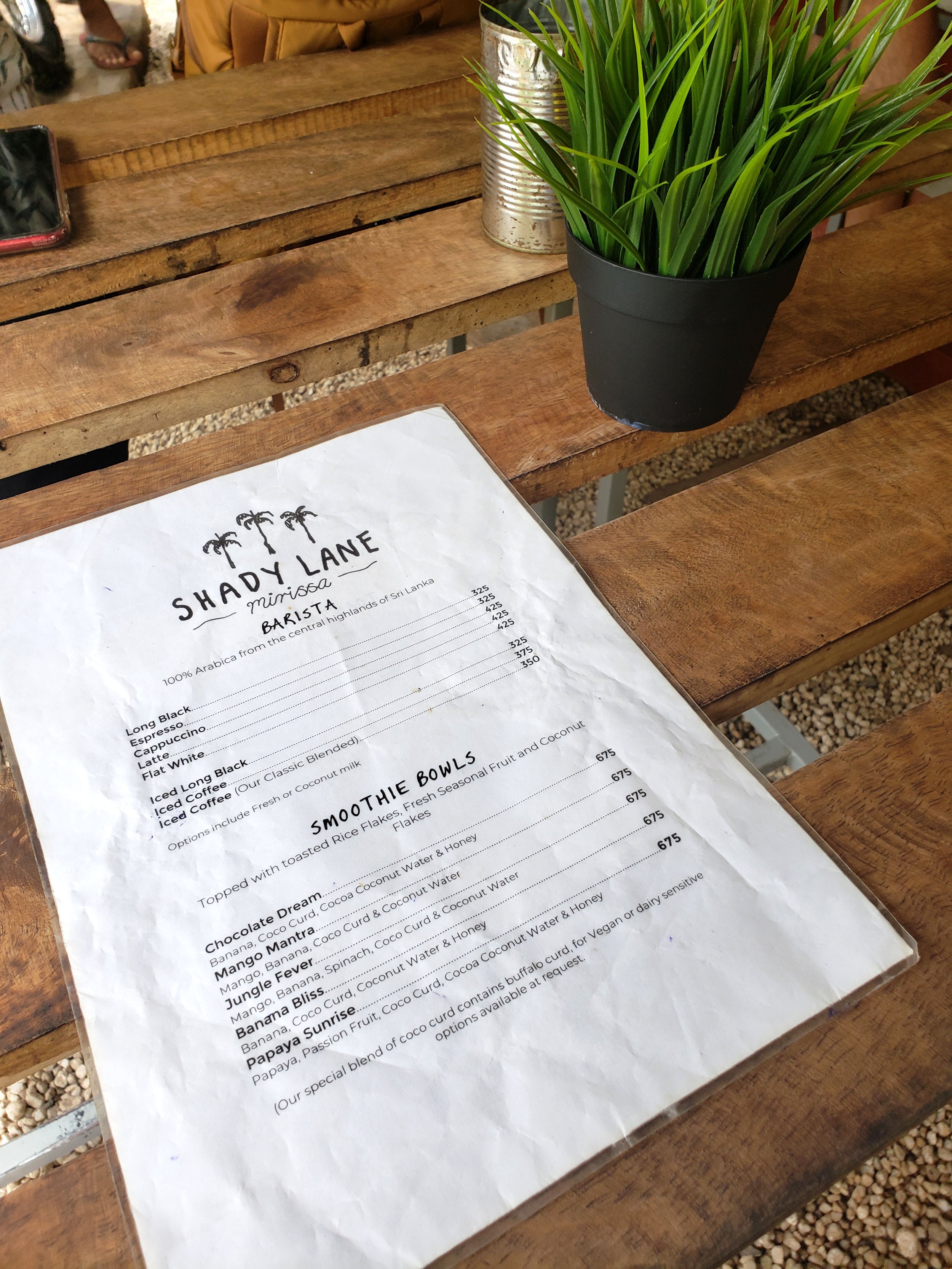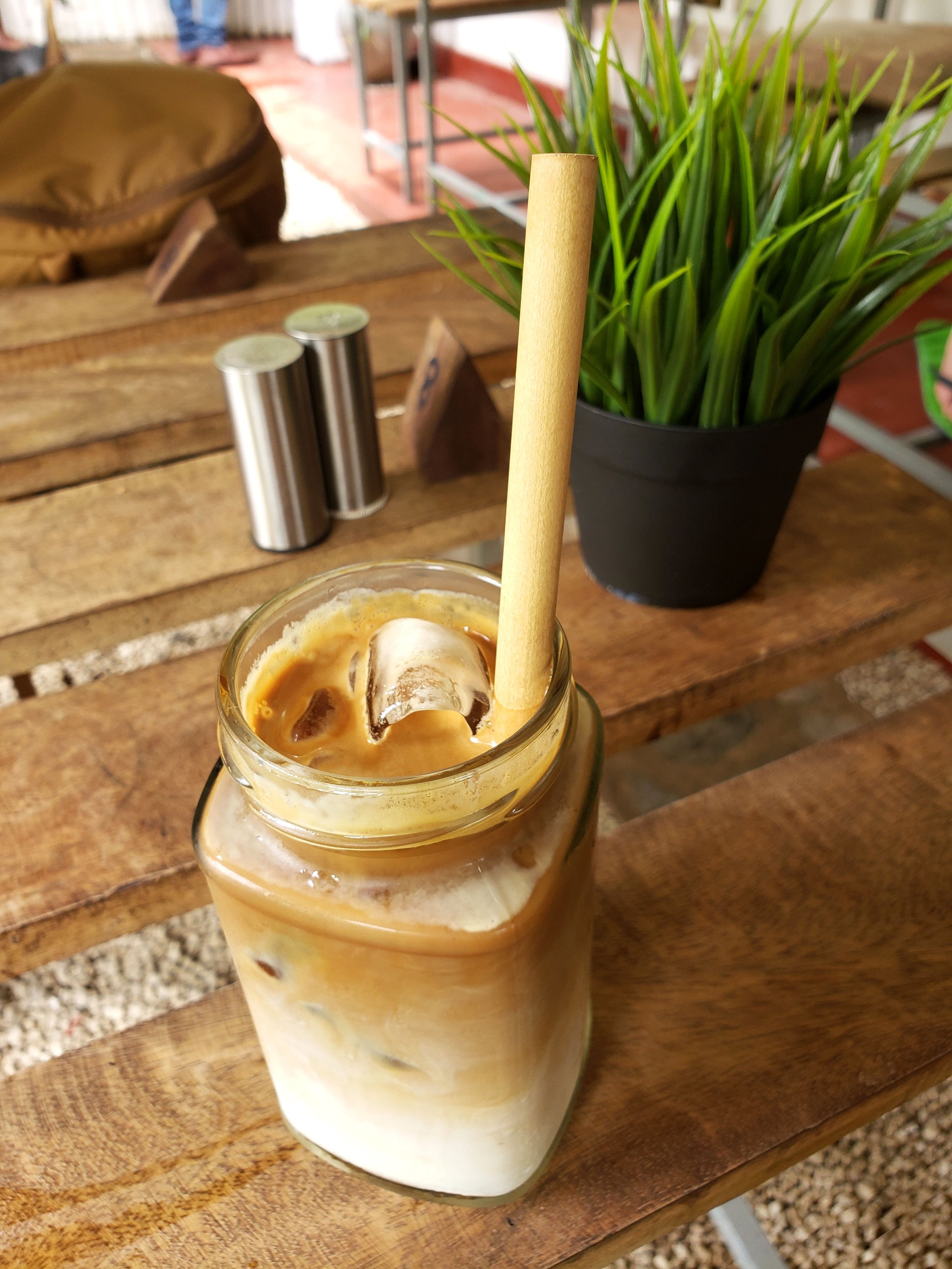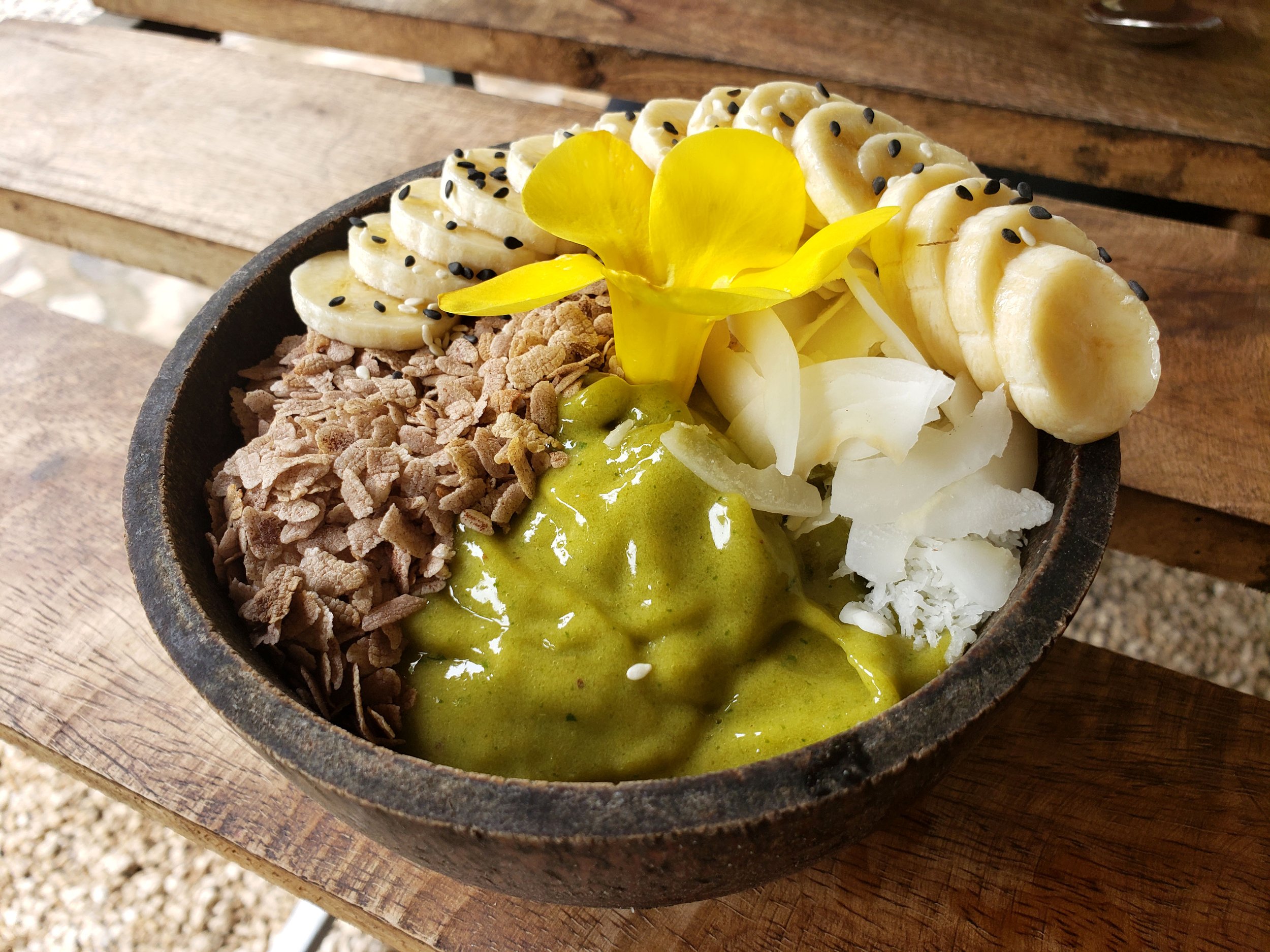Mirissa, Sri Lanka
Iconic Old City of Galle, Whale Watching & Stunning Beaches
Covered in lush rainforests and jungles, rice plantations and gorgeous beaches, Sri Lanka is a tropical island paradise located in the Indian Ocean. Formerly known as Ceylon and officially the Democratic Socialist Republic of Sri Lanka, this country captivates visitors with its delicious cuisine, abundant wildlife, lush green countryside and wealth of ancient Buddhist and Hindu ruins. Nicknamed the Pearl of the Indian Ocean and Teardrop of India, due to its natural beauty, extraordinary biodiversity and precious gemstones, along with its teardrop shape just off the coast of India, this small nation packs a punch.
Mirissa is a small town on the southern coast of Sri Lanka located in the Matara District of the Southern Province. As the largest fishing port in the area, there's no shortage of delicious seafood such as tuna, mullet, snapper and butterfish. Mirissa also offers a great launching point for whale watching excursions that won't disappoint. And if that's not enough, its beautiful beaches, historical towns and wild nightlife make it a popular destination for tourists.
Traveling through Sri Lanka for three incredible weeks was something quite magical. The journey began north of its capital city, Colombo, circling the country clockwise with our first stop Elephant Watching in Pinnawala. Then, it was on to the arid landscape of Sigiriya to visit the Eighth Wonder of the World (So They Say), Ancient City of Polonnaruwa and Minneriya National Park for an authentic Elephant Safari. Exploring Giant Buddha’s, Botanical Gardens & Fire Dancing in Kandy was next, then Nuwara Eliya, also known as the City of Light and Ella for its Epic Waterfalls, Train Rides & Jungle Mountains. Finally, we visited Tissamaharama’s Yala National Park and the sun soaked town of Mirissa to enjoy the iconic seaside city of Galle, go whale watching and explore its stunning beaches.
Settle In to Mirissa & Visit Parrot Rock
Catching a ride with two Australian travelers from Tissa, we drove two hours west to the southern tip of Sri Lanka, reaching the small coastal town of Mirissa. Immediately, we checked in to our stay, N 34, a modest hotel near the beach.
Straightaway, it was time to explore the area on foot and grab a quick bite. Just a few minutes walk were a handful of coffee shops, cafes and restaurants like Samagi which sold mostly fast food like hot dogs, burgers and strangely, cupcakes. Thankfully, they also had some local fare, so we ordered roti: two veggie and a chicken with vegetables. Folded into different shapes, the roti were light and exploded with fresh herbs.
Another few minutes walk was Mirissa Beach, a popular beach home to many seafood restaurants, known best for surfing and seasonal whale watching. Lined with palm tress and covered with soft sand, Mirissa beach is one of the nicer beaches I’ve come across. Albeit more active than others in the area, it was still a beautiful spot to relax and catch some sun. They also offered surfing lessons and rentals for those who dare.
Parrot Rock is a small rock crop serving as an isolated viewpoint about 50 feet from the shoreline. There, you can catch incredible panoramic views of the famed Coconut Tree Hill and gorgeous beach. Though it looks as if you could hop from stone to stone to reach Parrot Rock, they’re surely spread too far apart, leaving the only option to wade through the often waist-high water. Once across the waters, a wooden staircase leads to the top of the rock where you can admire the scene. Sadly, during my visit the waters were too rough to cross.
In the evening, we ate dinner at Coco Gate and although the food didn’t look particularly exciting, the taste was surely there. Preferring seafood, I chose the tuna steak with french fries, a side salad and banana milkshake, all reasonably priced at Rs1500 (less than $5 USD).
Praise Kosgoda Sea Turtle Sanctuary
Waking early for breakfast and a day trip to the fortified city of Galle, our meal was served on the back patio of the hotel. A bit late and honestly, not my favorite, they served tea and coffee with fresh fruit, chicken sausage and an omelette with toast.
Grabbing a tuk tuk was easy and requesting a ride to Galle wasn’t a problem. The ride would be about an hour long up the coast. About halfway there, our driver asked if we’d like to stop at a turtle farm in Kosgoda and we were more than pleased. Kosgoda Sea Turtle Conservation Project has been in operation since 1988 with the goal of monitoring local sea turtle activity and conserving local nesting sites. They also help bring awareness to the public about endangered turtles and just how important it is to protect them before it’s too late.
With a small entrance fee of Rs500 RUP ($1.50 USD), visitors can enter the hatchery and receive a guided tour, learning details about the project. Signage throughout also helped describe the activities of the sanctuary, along with fun facts about turtles. Some of the turtle varieties they highlighted were the olive ridley turtle, hawsbill turtle, loggerhead turtle, green sea turtle, leatherback turtle, flatback turtle, kemp’s ridley sea turtle and the black sea turtle.
We were guided to large pools of water filled with different varieties of turtles. Occasionally, they would pop their heads out of the water to gulp air and then sink back down below the surface. We learned that some turtles didn’t like being placed in the same tanks as others and were therefore, separated purposefully. Then, we were shown turtle eggs and tiny hatchlings. The best part was that they allowed us to carefully hold the baby turtles, making sure to stay away from their head and legs, and not gripping too tight.
In the back was a hatchery. This area was covered with sand and marked with signs describing each egg just below the surface. The hatchery is one of the most important parts of the project because it’s vital to give collected and rescued eggs a safe way to hatch away from predators and before being released into the sea. As expected, the experience was fascinating; I learned so much about turtles and got to see many being nurtured safely back to health.
Explore the Fortified City of Galle
Another 30 minutes by tuk tuk was the fortified old city of Galle. Founded by Portuguese colonists in the 16th century, the stone sea walls of this southwest coastal city were expanded by the Dutch and surround gorgeous car-free streets and architecture reflecting the Portuguese, Dutch and British rule. Noteworthy buildings include the 18th century Dutch Reformed Church and of course, Galle Lighthouse, standing on the fort’s southeast end.
An onshore lighthouse, Galle Lighthouse is Sri Lanka’s oldest light station. This concrete lighthouse was built by the British in 1939 about 330 feet from its original site. Galle’s first lighthouse was built by the British in 1848. Standing 80 feet high, it was constructed from cast iron plates imported from England. Sadly, it was destroyed by fire in 1936.
Galle Fort, or Dutch Fort, located in the Bay of Galle on the southwest coast of Sri Lanka was built first by the Portuguese in 1588, and then greatly fortified by the Dutch during the 17th century beginning in 1649. It’s an extremely valuable site with architectural, archeological and historical significance with the Sri Lankan government and local Dutch people wishing to make this one of the modern wonders of the world. The site has also been added to the list of UNESCO World Heritage Sites, stressing that it represents an intersection of European architecture and South Asian traditions during the 16th to 19th centuries.
Incredibly, if the timing is right you’ll want to catch the Crazy Jumpers. As a tourist attraction and to earn money to support their families, men perform by jumping from the top of Galle Fort into the sea. It’s a treacherous jump with strong gusty winds and sharp rocks below and only a narrow landing zone that’s safe. Give the jumpers a donation if you’re lucky enough to catch them completing this amazing feat.
Of course, Galle is so much more than exterior stone walls and a lighthouse. On the interior, are countless adorable coffee shops, restaurants, cafes, ice cream stores and gift shops. One of my absolute favorites was Exotic Roots where they thoughtfully source unique and beautiful pieces like antiques and handmade goods. Honestly, maybe the best shop I’ve ever come across while traveling, this little gem was full of magic and wonder.
Highlighting home decor, artifacts, clothing, accessories, artwork, textiles, jewelry and natural beauty products I could’ve spent all day inside. Some of the most exciting objects I came across were the jewelry, clothing, rugs, soaps and antiques. They even had a charming coffee shop in the rear where we sat down to enjoy their take on iced Vietnamese coffee. What an incredible experience at Exotic Roots and hopefully one day, I’ll make my way back.
Another stop along the way was Rocket Burger, a retro inspired diner serving up homemade peach iced tea, french fries and hamburgers. Then, it was along to Il Gelato for some authentic Italian gelato in passion fruit and coconut. Il Gelato has multiple locations throughout Sri Lanka and has even expanded to Italian dining at La Trattoria and Park Street Trattoria, so keep your eyes peeled for this local treat.
Stroll Along the Beaches of Mirissa
Late in the afternoon, with the beach calling our names, we hopped back into a tuk tuk and rode out to Dalawella Beach in Unawatuna. Pulling off near Wijaya Beach Restaurant and making our way through the patio, the sandy beach unfolded before us. It was so gorgeous, even better than Mirissa Beach. There were calmer waters and less restaurants, which translated to fewer people and a cleaner quieter beach.
Peering down the beach to the right, there was a large rock jutting out into the ocean and a palm tree lined shore with trees reaching high up into the sky. The beach was fairly small and tight against the warm ocean water as it rolled in.
On the lefthand side, was a narrow sandy path against a short stone wall packed with sand. About 100 feet down, there was a rope swing hanging in the air, one I had previously heard about, so without hesitation, we began walking toward the swing to check it out.
As we reached the coconut rope swing, a man popped out of the bushes and asked for a small fee to ride. Unsure what else to do, I forked over a bit of money and asked him how to get on. Securing one foot in the bottom loop and the other on top of the horizontal stick, I grabbed on tightly and jumped on. Out of nowhere, the man pulled the rope and flung me out over the ocean.
Reaching safety once again and then pushing off for another swing over the water, left me a bit dizzy, as the rope twisted and turned out of control.
Eventually, I slowed and was able to hop off once and for all, thoroughly enjoying my experience though a bit unsteady from the jostling. Though not nearly as intense, the experience had reminded me of the time I bungee jumped off a bridge in South Korea, leaving my body so sore I could hardly believe it.
Shaky from my wild experience, we slowly moved toward the other end of the beach near the large rock pushing out into the ocean.
Frog Rock is a rock formation resembling the shape of a frog and used as a tourist spot for photos. If you dare, you can make your way around the back of the rock and climb up to the top but don’t be fooled, it’s a tough climb.
Once past Frog Rock, the shore eventually became so rocky that it blocked most of the walking path. The only way to pass was to carefully climb up and over the piles of rocks.
With stunning views of the sun beginning to set, the walk along Dalawella Beach was quite a wonderful adventure. Not really sure where we’d end up, we carried on.
Almost completely empty, this was my kind of beach. It felt as if no one had ever been there and if it weren’t for the footprints in the sand, I’d say it were true. It was noiseless, other than the wind pushing the waves around and the swooshing of the palm trees.
There were also a handful of stilt fishing poles just off the shore. Fishermen balance for hours on these stilts looking to catch their next meal but more on that later.
Further down the beach, was another rope swing. This time, locals were having some fun.
Ultimately, the landscape opened up into a sprawling beach. It was around this area that we hiked up to the main road in order to loop around and reach Kabala Sunset Cafe, a restaurant overlooking the rocky shoreline.
With seats along the waters edge, we rested our feet after such a long walk and ordered passion fruit mojitos that arrived in skull-shaped mason jars. With that, we began to enjoy the gorgeous sunset over the glistening ocean water.
The view was beautiful, absolutely everything. It was the perfect spot to appreciate the end of the day and grab a few delicious cocktails.
After the first round of drinks, we moved up to the dining area for a proper meal. As the sun lowered, sparkly lights wrapped around palm trees became the highlight.
Serving up fresh local seafood in a cool setting, Kabala Sunset Cafe made it tough to order just one dish. Ultimately, we chose shrimp with a side salad and french fries, along with vegetable curry and white rice with a number of unique vegetarian accompaniments.
The vegetable curry was surely the stand out and although slightly on the higher end price-wise, the entire experience was wonderful, service and ambience included. The total price was around Rs6,500 or $20 USD.
Go Whale Watching
The next morning was highly anticipated; an exciting day of whale watching out on the Indian Ocean. The day before, we’d stopped by Raja & the Whales to book an excursion and gather the necessary details. The first local company to offer dolphin and whale watching in Mirissa, Raja & the Whales, is a local family business running tours nearly year round. They also adhere to international whale watching regulations and provide valuable research data to many international wildlife research and conservation organizations.
Just after sunrise around 6 a.m., we jumped in a tuk tuk near the hotel and made our way to Raja & the Whales. After checking in, we patiently waited for others to arrive; there would be nearly 50 of us in total. Anxious about the rough waters, I made sure to request a few motion sickness pills (and thank God I did). Finally, everything was set and it was time for our guide to lead us over to the boat, walking distance by foot.
One by one, the group hopped aboard, strapping into life jackets, as required. Almost immediately, the staff offered a few snacks, as well as a hot breakfast.
They served coffee, huge plates of fruit including pineapple, banana, apple, passion fruit, pomegranate and mango, along with omelettes, sausage and toast.
After about 45 minutes, we slowly pulled away from the dock, heading out into the open ocean. The skies were covered with a thick layer of morning fog and clouds but there was no rain in sight.
With hopes of seeing the largest creature on Earth and most common in this area, our boat made its way out of the bay and away from the shore. Besides potential blue whale sightings, other possibilities included sea creatures like fin whales, sei whales, sperm whales, orcas (killer whales), pilot whales, humpback whales, dolphins, flying fish, turtles, manta rays and whale sharks.
Straight away, we spotted a large pod of dolphins. Speeding along swiftly with grace and accuracy they chased alongside the boat, zigging and zagging. Occasionally, they would burst out of the water and up into the air, silently splashing back down into the deep blue water. It was absolutely an incredible moment to witness.
As time passed, we began to spot large blue whales. Each time, our boat would wait, still and silent, bobbing up and down in the ocean waters. Then, once the whale was spotted we’d speed over as fast as possible in order to beat the other onlookers. Getting close but not too close, we’d pause again and observe. We were even lucky enough to see a few of the whales blow air through their blowholes as they reached the surface to take a breath.
Our boat was careful not to get too close to the whales as to not disturb them. Still, we were able to see the shimmer of the whales back as it popped above the waters surface and the flick of the tail as it turned back underwater. And though I was enjoying myself too much to take notes, we learned that the more tail the whale shows, the deeper the dive. Additionally, throughout the tour, our guide made sure to give us many other interesting facts about whales.
The blue whales found in Sri Lankan waters are non-migratory and thought to be resident in the waters year-round. Far bigger than even the biggest dinosaur, the blue whale reaches nearly 100 feet long and 400,000 pounds, with a tongue weighing as much as an elephant and heart the size of a car. Honestly, I can’t wait for another opportunity to get in the water and swim with these magnificent giants.
Near the end of the excursion we were served cake and juice, along with water. The staff was very kind, helpful and knowledgeable and after a few hours of whale watching we began to head back to shore.
Clearly, I could’ve stayed out longer and wished we’d been able to see the whales even closer but, all in all, it was a wonderful experience for my first time whale watching. And I couldn’t have been happier about taking motion sickness pills since the waters were quite choppy and some of the others onboard didn’t seem as lucky. The outfit also emailed images from the day just in case you missed getting good shots.
Search for Stilt Fisherman at Koggala Beach
In the afternoon after some much needed rest, we went out for lunch at No. 1 Dewmini Roti Shop located just a few minutes walk from the stay. To eat, we ordered roti’s with egg, tomato, cheese and avocado, with iced coffee. The spicy sauce on the side was so delicious, a pepper and tomato mixture. To finish, we chose a sweet roti consisting of banana and chocolate.
After lunch, it was off to Koggala Beach in search of the stilted fisherman I’d heard so much about. To be honest, I wanted one of those stunning shots I’d seen online with the fisherman poking out of the water with their silhouettes set against the sky.
Stilt fishing is a method unique to Sri Lanka, particularly on the southern coastal strip. Typically, fisherman sit on a crossbar called a “petta” which is tied to a vertical pole, that is then driven into the sand about six to 10 feet deep offshore. From this position, the fisherman casts a line and waits for fish to bite. This tradition, though seemingly primitive, was developed during World War II during food shortages.
Overcrowded fishing spots meant local fishermen needed to try their hand on the open water, first using capsized ships and then placing their stilts in coral reefs. Today, the skills are still being passed down from generations of fisherman living along the shores between Mirissa, Unawatuna and Weligama. Sadly, the 2004 tsunami devastated much of the Indian Ocean coastline, reducing access to the fish using this method. Even so, the catch was modest, either small mackerel or spotted herring. Additionally, stilt fishing stops entirely during the monsoon season.
These days, it’s the beautiful scenic views of the fishermen set against a peachy sunset that have proven more valuable to tourists. Unbeknownst to me, stilt fisherman can earn more money posing for photos than actually fishing. At sunrise and sunset, the fisherman line up, waiting for onlookers to stop by, typically hiding in nearby beach huts during the hot hours of midday. When visitors arrive, they pop out and request money to get up onto the stilts for a photo. And occasionally, tourists are allowed up onto the stilts, trying their hand at fishing as the locals do.
Because I wasn’t fully aware of the process at Koggala beach, when a few men jumped out of the bush and asked me for money to pose, I was shocked and slightly offended. In the moment, I thought I was getting ripped off or taken advantage of. The beach was completely deserted and I didn’t see much point in hiring two guys to climb up onto the stilts.
Not to mention, as bad as I wanted that image, it just seemed wrong to be paying men to fake it. Looking back though, I definitely regret not taking them up on their offer. And if I had been motivated by a gorgeous sunset, my answer may have been different, especially since they requested less than $1 USD.
Climb Frog Rock at Dalawella Beach
With time running short in Mirissa, we ended back at Dalawella Beach, choosing a spot in the sand to rest and finally get some sun, even if it was late in the day. Near Frog Rock was the perfect spot to unwind. As the water crashed, a few surfers took advantage, weaving in and out of the waves.
While resting, a sweet dog, full of sand and slobber came over for some attention.
He’d pick a spot in the sand, almost on top of me, and then plop all his weight down in one go, letting everything collapse as if he’d been on his feet all day.
After some time, it occurred to me that I wanted to give climbing Frog Rock a go, so I walked over to take a look and see if it was possible.
Surprisingly, it was quite steep and I was barely make it up the backside, gripping onto the cracks and crevices as tightly as I could.
After an initial struggle, I was able to reach the top and catch some gorgeous views of the entire beach. Even harder, getting down was tough. I had to carefully slide down the back side of the rock making sure not to hurt myself.
Later in the evening, we chose a pizza restaurant on the beach called Wijaya Beach Restaurant for dinner. We ordered Savanna cider, a greek salad and margarita pizza (strangely without basil).
All was very tasty, other than the salad which was average. It also made a huge difference to request chili oil and chili flakes to elevate the pizza. Our service wasn’t the best and staff seemed to ignore more than help but it was still worth a stop.
Unwind With a Massage & Fruit-Filled Yumminess
The next morning, we were off to Pachamama for its all day breakfast. An adorable spot nestled off a busy side street, the service was quick and kind. We chose coffee, a latte, banana pancakes and chia pudding. Everything was absolutely delicious, especially the pudding with its coconut milk, chia seeds and seasonal fruit of mango, watermelon and passion fruit.
For some final rest and relaxation, we stopped by Secret Root Spa & The Secret Guesthouse for a massage. An absolute must, this gorgeous spa set inside a jungle garden was perfection from start to finish.
With a female therapist, we both received 60-minute full body Ayurvedic massages using aloe vera oil. Oiled up head to toe, even the face, the entire experience was well worth it. It was peaceful and relaxing, including hot tea in the garden after our treatment and only cost Rs3,000 plus tip, totaling a mere $12 USD.
And finally, as a last minute fruit-filled experience, we stopped by Shady Lane Barista to try something light for lunch. Ordering an ice coffee and two smoothie bowls was definitely the way to go.
The presentation was gorgeous, both topped with coconut shavings, banana, chia seeds, brown rice crisps and a bright yellow tropical flower. The Mango Mantra was sweet and full of flavor but the Jungle Fever could’ve used a bit more of that sweetness.
The spot was super cute and the staff was kind and service was quick. From there, it was time to head back to the capital city of Colombo with a two and a half hour ride costing Rs7,000 ($20 USD). The drive was peaceful as the driver played Sri Lankan music the entire way. And with that, our flights back to LAX were the following day.


